COVER STORY
COLLIERS WA INDUSTRIAL EXPANSION CONTINUES
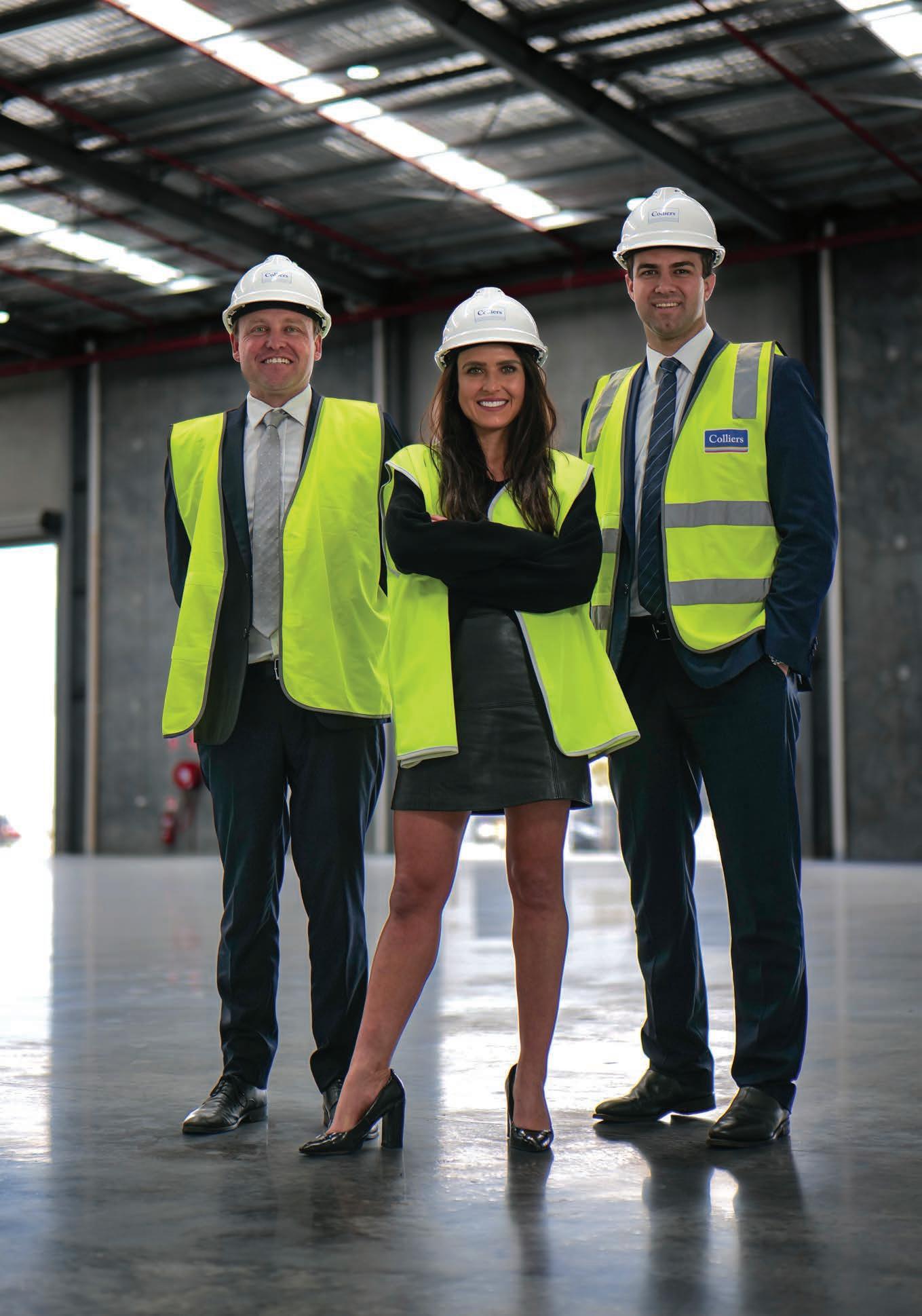
yet
FLEXIBLE CLEANING WITH REDUCED RISK
The industrial property titan’s West Coast operation is primed for its best year MHD talks shop with Managing Director (ANZ) Jordan ThruppKörber Perspectives
Global supply chains are becoming more complex. Körber Perspectives identifies six of the biggest supply chain challenges our customers are facing today, and how to combat them. They include End User Experience , Facility Optimisation and more.


MHD
Supply Chain Solutions
CONTACT
MHD Supply Chain Solutions is published by Prime Creative Media
379 Docklands Drive, Docklands VIC 3008
Telephone: (+61) 03 9690 8766
Website: www.primecreative.com.au
THE TEAM
CEO: John Murphy
Chief Operating Officer: Christine Clancy
Managing Editor: Syed Shah
Editor: Edward Cranswick
Journalist: Joseph Misuraca
Business Development Manager: Beth Jarvis
Design Production Manager: Michelle Weston
Art Director: Blake Storey
Graphic Designers: Louis Romero, Kerry Pert
Client Success Manager: Janine Clements
FOR ADVERTISING OPTIONS
Contact: Beth Jarvis beth.jarvis@primecreative.com.au
SUBSCRIBE
Australian Subscription Rates (inc GST)
1yr (6 issues) for $78.00
2yrs (12 issues) for $120.00 – Saving 20% 3yrs (18 issues) for $157.50 – Saving 30%
To subscribe and to view other overseas rates visit: www.mhdsupplychain.com.au or Email: subscriptions@primecreative.com.au
ACKNOWLEDGEMENT
MHD Supply Chain Solutions magazine is recognised by the Australian Supply Chain Institute, the Chartered Institute of Logistics and Transport Australia, the Supply Chain and Logistics Association of Australia and the Singapore Logistics and Supply Chain Management Society.


FAST OUT OF THE GATES
While newspaper headlines continually remind us of the potentially parlous economic times to come – with fears of a return to 1970s style stagflation – you wouldn’t know it by examining the world of supply chain.
Indeed, according to a recent report from CBRE, the competition for industrial property is fiercer than ever, with the national vacancy rate in H2 2022 at 0.6 per cent – the lowest in the world.
Finding the right industrial property for swiftly modernising operations will be a key factor keeping real estate agents and property developers busy in 2023 – as will work retrofitting existing properties until supply can catch up with demand; a possibility currently beyond the horizon.
In our first cover story for 2023, we celebrate the first anniversary of Colliers opening its new office in Perth, and talk to Hayden Dick, Sam Hammond, and Catherine Van der Walt about what the WA I&L team has achieved since the opening – and their goals for 2023.
Maintaining the WA theme, in this issue MHD also interviews Morgan O’Shea of property development firm Lester Group. Perth is second only to Sydney in having the lowest vacancy rate within Australia, so on-the-ground knowledge from local experts like Lester will be essential for decision makers on the east coast exploring western opportunities. Indeed, for Morgan and Lester Group, bridging the gap between east coast decision makers and west coast opportunities is a key priority for 2023.
But a property is only as good as the facility on it, which is why Argon & Co has joined forces with intralogistics experts and ‘warehouse wizards’ Fuzzy LogX. The move, announced in mid-January, is an exciting step for both companies – enhancing the scope and scale of their capabilities and offering to existing and future customers. We sit down with the Argon and Fuzzy teams to learn more.
With so much having occured already in 2023, it’s apparent that the industry has been fast out of the gates – setting a cracking pace for what is sure to be a dynamic and exciting year.
Happy reading. See you next month.
ARTICLES
All articles submitted for publication become the property of the publisher. The Editor reserves the right to adjust any article to conform with the magazine format.
COPYRIGHT
MHD magazine is owned by Prime Creative Media. All material in MHD is copyright and no part may be reproduced or copied in any form or by any means (graphic, electronic or mechanical including information and retrieval systems) without written permission of the publisher. The Editor welcomes contributions but reserves the right to accept or reject any material. While every effort has been made to ensure the accuracy of information Prime Creative Media will not accept responsibility for errors or omissions or for any consequences arising from reliance on information published. The opinions expressed in MHD are not necessarily the opinions of, or endorsed by the publisher unless otherwise stated.
Edward Cranswick Editor edward.cranswick@primecreative.com.au
AUSTRALIA’S LEADING FORKLIFT COMPANY

FOR ALL YOUR MATERIAL HANDLING NEEDS
MINI EXCAVATORSSKID STEER LOADERS SCISSOR LIFTS
ELECTRIC VEHICLES
ELEVATED WORK PLATFORMS
SWEEPERS AND SCRUBBERS
TOYOTA FORKLIFTS & WAREHOUSE EQUIPMENT



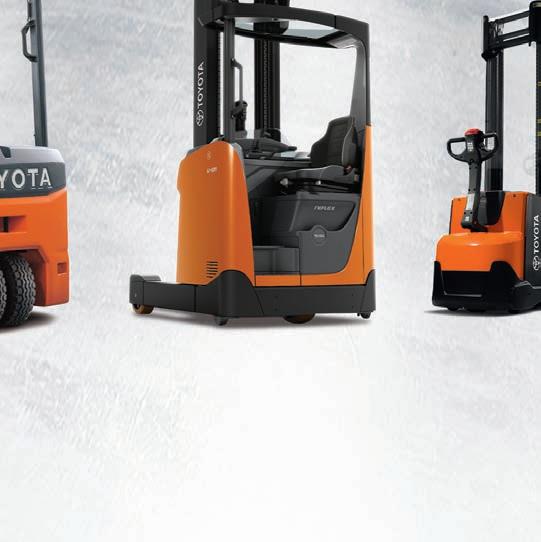

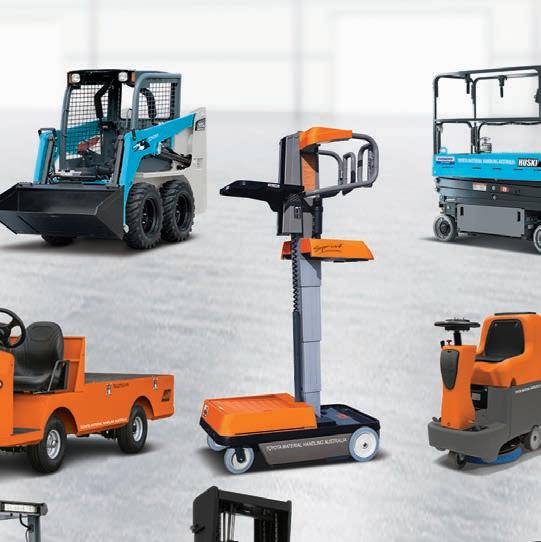
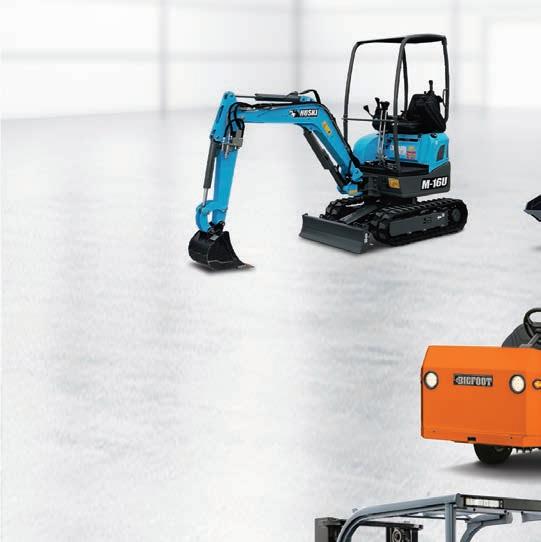
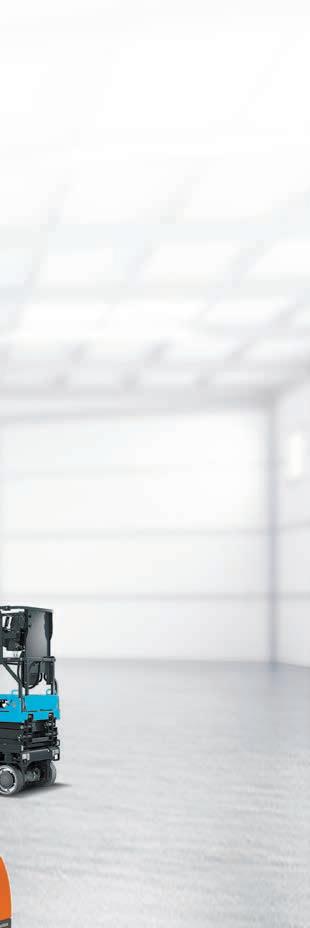

Known for market leading Toyota forklifts and warehouse equipment, Toyota Material Handling is also proud to o er an unparalleled range of products suitable for Australian businesses. With a huge range of forklifts, elevated work platforms, scrubbers and sweepers, Taylor-Dunn electric vehicles, plus Huski skid steers, scissor lifts, and mini excavators available, chances are we’ve got the equipment that will suit. So, if you’re looking to buy hard working, fully backed equipment for your business, Toyota Material Handling has all you need to add value to your operation. That’s the Toyota Advantage.

COVER


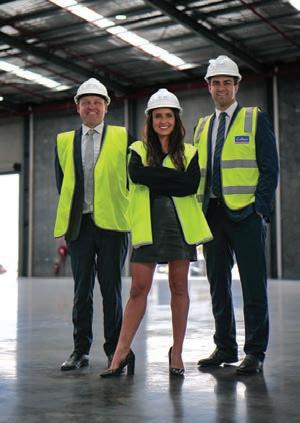


REGULAR
SUPPLY


INDUSTRIAL PRECINCT OPENING IN ESSENDON FIELDS
Colliers and CBRE are managing the first stage of a new industrial precinct in Essendon Fields which has gained significant interest from prospective tenants and comprises 30 hectares of land.
New light industrial properties are being developed on the land where there will be manufacturing and logistics facilities close to the CBD, Melbourne Airport, and the rest of Melbourne by the nearby freeway network.
“The plan for stage one of this new light industrial precinct unlocks one of the last major land releases at Essendon Fields and represents the only largescale industrial greenfield site within 15 minutes of the CBD and the Port,” Brendan Pihan, CEO of Essendon Fields, says.
“It’s the best location in Melbourne. Demand for industrial land is insatiable.
The planning regime at Essendon Fields means we can deliver new facilities for customers faster than anyone else. And the location is superior because it’s the closest to the end customer and a talent pool of 1.1 million people within 15 minutes of the site.”
The plan is for a series of 350010,000 sqm industrial facilities to be developed, with construction to start in 2023 in line with market uptake. The end value of the precinct, which will be delivered in stages over the coming years, is expected to exceed $500 million.
“Prospective occupiers will be drawn to Essendon Field’s unique interface and abundance of mixed-use amenity, as well as the ability to capitalise on proximity to Melbourne’s CBD, sea and airports,” Daniel Eramo, Director at CBRE Advisory & Transactions Services,
Industrial & Logistics, says.
Essendon Fields’ strategic location benefits from direct access to the Tullamarine Freeway, Calder Freeway, CityLink and the Western Ring Road. Via these connections, 80 per cent of Melbourne’s population can be reached within 45 minutes.
“We have already received significant interest from occupiers who recognise Essendon Field as one of the most strategic and well-located land estates across Melbourne’s industrial market,” Nick O’Brien, Associated Director Industrial at Colliers, says.
Essendon Fields is already home to several light industrial tenants including Elenium Automation and Suncorp, and recently opened a new 4700 sqm maintenance facility for Bombardier Business Jets and new training centres for Porsche and Volkswagen.
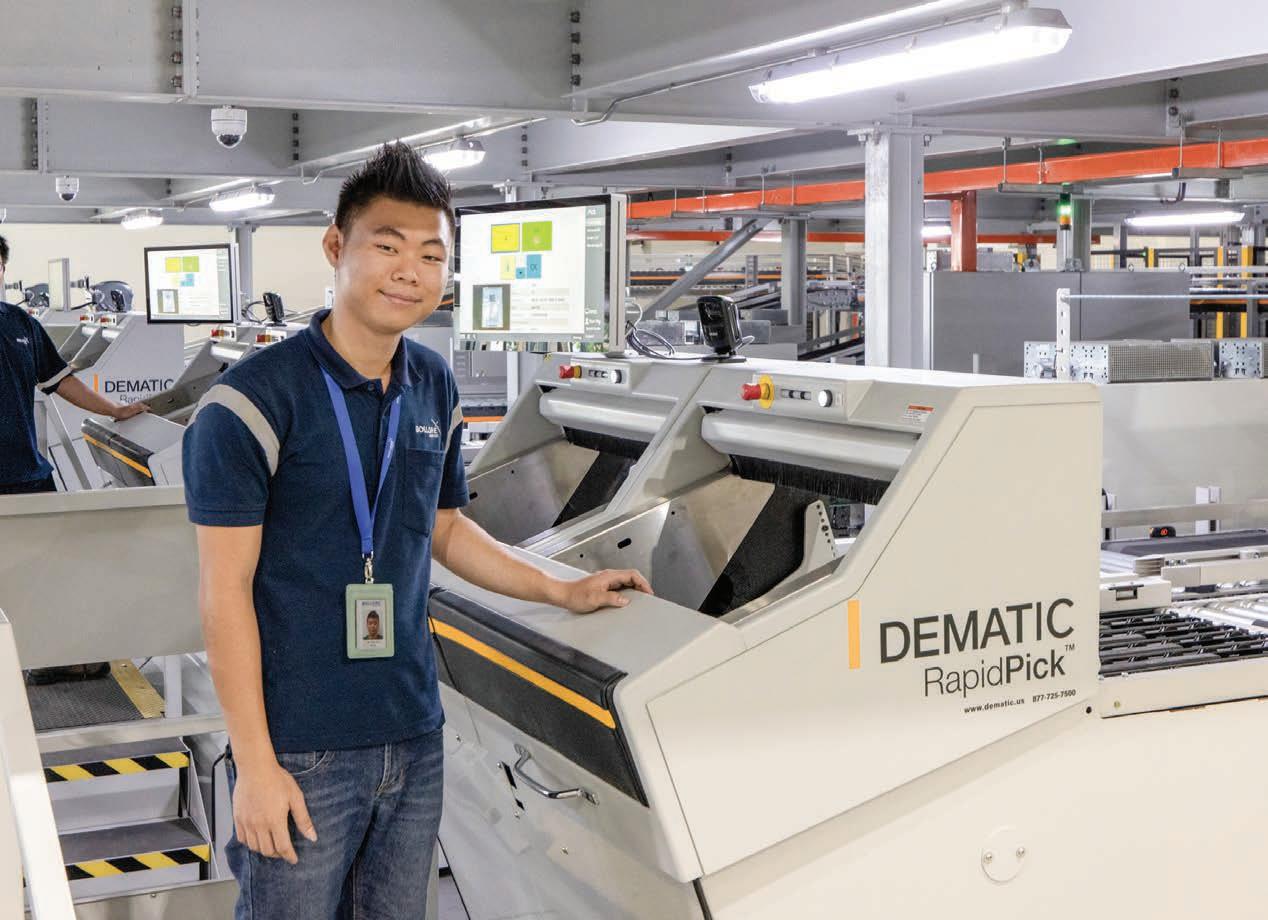
KEY TRANSPORT & LOGISTICS TRENDS IN AUSTRALIA TO WATCH OUT FOR IN 2023
2022 was a challenging year for the transport and logistics sector in Australia. The effects of the COVID-19 pandemic were still making their mark throughout the supply chain, and inflation and international instability continue to impact the sector.
However, we have seen resilience in the supply chain despite the macroeconomic challenges and global inflation. 2023 holds a lot of promise, with businesses set to gradually recover from the setbacks of the past two years. Many are poised to invest in creating a more sustainable and innovative supply chain. We anticipate that key trends for 2023 in the transport & logistics (T&L) space will centre around sustainability, cyber resiliency and tech innovation.
PUSHING TOWARDS NET ZERO AND SUSTAINABLE SUPPLY CHAINS
The impact of climate change continues to ripple around the globe, and climate change is once again set to dominate discourse across a multitude of sectors in 2023.
The T&L industry is no different. Australia now has a target to achieve net zero emissions by 2050, and corporations are being forced to move towards carbon neutral supply chains due to pressure from customers, investors and mainstream environmental, social and governance (ESG) organisations. The time to invest in a sustainable supply chain is now.
Transport emissions have been on the rise since 1990, and according to
the World Economic Forum’s research, eight global supply chains – including those in the food, construction and fashion sectors – are responsible for 50 per cent of carbon emissions.
At the recent COP27 summit, the UN’s Intergovernmental Panel on Climate Change (IPCC) stated that greenhouse gas emissions must peak before 2025 at the latest and decline to 43 per cent by 2030 to limit global warming temperatures to 1.5°C.
There is still a lot of work to be done to reduce emissions in the supply chain to meet these deadlines. If your business is looking to reduce emissions in 2023, data from HERE Technologies can assist businesses through accurate emissions reporting, real-time visibility of the supply chain and optimising fleets.
to go in 20 minutes
It takes just 20 minutes for an order to be picked at Bolloré Logistics’ Blue Hub facility, tailor-built to handle online and store orders for perfumes and cosmetics. A Dematic Goodsto-Person system enables these superior customer service levels for Bolloré clients, optimising order fulfilment speed and accuracy while delivering very high productivity.
With space a premium in Singapore, the Dematic Multishuttle® high-throughput, high-density storage engine provides a 400% increase in capacity. The result: Flexibility, capacity and a superior service for Bolloré Logistics’ clients.

Read more and see it in action at www.dematic.com/bollore


INCREASING IMPORTANCE OF ELECTRIC VEHICLES
Every state and territory in Australia has plans to increase their electric vehicle (EV) fleet and charging networks. On top of that, the government has also committed funding to expand the number of public chargers. The EV Council of Australia has welcomed these commitments, and says this funding will triple the size of the existing fastcharging network.
The EV Council also called on the government to commit to the development and implementation of a mandatory fuel efficiency standard for light vehicles that would support Australia in achieving its target of net zero by 2050.
Looking ahead, there are opportunities for EV manufacturers and map providers to incorporate more data and functionality in their systems to enable contingency planning for a more seamless driving experience. It’s also important to consider the availability of this data.
Location tech enables us to not only visualise where EV chargers are located along a journey, but also knowing their precise locations and charging availability.
Today we see charge points at airports, parking bays, shopping centres, theatres, and while these locations are convenient, having a central and fresh database of EV charge points with real-time availability is key to encouraging mass EV adoption as it allows users to plan and maximise their travels.
As we continue to encourage the uptake of EVs for a greener future, and with the National Electric Vehicle Strategy taking shape, the government, charging-technology providers, operators, and utilities companies should all consider utilising location technology to strategically boost the availability of charging infrastructure in building a truly national EV charging network. Data on EV charge stations and EV maps can optimise routes for businesses investing in hybrid and electric fleets.
SUSTAINABLE FLEET MANAGEMENT
Australia’s freight task is growing, and the urban freight challenge is expected

to see growth of 60 per cent over the next 20 years. Stakeholders in the T&L sector are feverishly working to identify how they can accurately track emissions of their fleets, which will help them understand their carbon footprint before implementing target reduction strategies.
We predict that location technology will play an important role in helping businesses improve their fleet management, including planning, operation and maintenance to reduce downtime at every point in the supply chain. This will ultimately help to reduce fuel costs, driver fatigue and carbon emissions. In 2023, it will also be key for businesses to estimate emissions using data such as vehicle types and detailed maps of routes, including gradients.
Working with Migros, HERE developed a commercial fleet analytics tool that determines the amount of carbon dioxide (CO₂) emissions per route, considering factors such as vehicle and fuel type, weight, traffic conditions and the elevation of the roads on every route. This tool empowers the leading Swiss retailer to reduce their emissions while also optimising their fleet’s navigation routes.
Transportation is one of the biggest carbon emitters, and the sector will continue to focus on reducing pollution. As we enter 2023, we can expect businesses to be more engaged with policymakers as they strive to become sustainability enablers. Technology will play a bigger role in contributing to these data-led solutions.
SUPPLY CHAIN RESILIENCE AND INCREASING CYBER THREAT
We expect to see an improvement of supply chain visibility when it comes to operational resilience. Gartner has predicted that 50 per cent of global product-centric businesses will invest in real-time visibility across their supply chain by 2023.
As supply chains continue to experience freight issues, the push for visibility only gets stronger. Supply chain visibility will become more important in the face of increased cyber threat.
The Optus and Medibank hacks have
dominated headlines recently, but not so publicised were the hacks of major companies in our freight and transport industry. We all need to protect our businesses, suppliers and most importantly our customers.
Digital transformation is giving the supply chain sector the tools to deal better with disruptions, but it is simultaneously providing cybercriminals with ever-increasing opportunities to infiltrate companies. Supply chain operating networks are still very complex and fragmented with multiple data-sharing platforms, devices, software and protocols. This leaves businesses susceptible to:
• Cyber-attacks from interoperability issues between various IoT devices with no standard protocol;
• Other security concerns including inventory theft, physical device tampering, reliance on third-party vendors, cloud data and increasing sensor data; and
• Difficult integration with software vendors due to different EDI (Electronic Data Interchange) formats and systems used by shippers.
Businesses that take cyber threat seriously are best placed to avoid the threat going forward. Those that ignore it may face unwanted consequences down the road.
TECH INNOVATION WILL BE CRUCIAL TO BUSINESS SURVIVAL
As digital transformations happen
Reduce Costs. Improve Efficiency.
DiscoverhowBestrane’s Route Planning and Optimisation solutions allow you to reduce cost, improve efficiency and customer service outcomes across a wide range of planning modes - from dynamic and same day solutions, to territory or master routing.
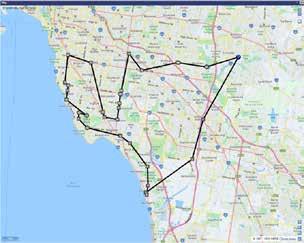
• Less vehicles used and distances driven
• Reduced planning and dispatch costs
• Improved fleet and driver utilisation
•Improved customer service outcomes
No two route planning or optimisation problems are the same. We use different optimisers for different problems that enable a broad range of industries to create optimal daily routing solutions. Our solutions feature capabilities including background optimisation, same day routing, and dynamically generated delivery time windows that maximise customer experience.
across all industries, experts are realising they need to focus more on customer centricity. We expect digital innovation to drive changes to meet the evolving customer demands and expectations will be critical to business survival.
Innovative end-to-end digital solutions have become similarly critical to holistic supply chain visibility. These advancements allow multimodal tracking of high-value and time-critical goods with up-to-date information on estimated times of arrival (ETAs) and conditional events.
We also predict that the push for Intelligent Speed Assistance (ISA) will gather momentum. In the Europe Union (EU), for example, new vehicles introduced to the market from July 2022 must have an ISA system fitted.
From July 2024, ISA will be mandatory for every newly registered vehicle. As a result, we anticipate that ISA will become popular in Australia as well. Based on research from around the world – including Australia – ISA can make a significant contribution to road related deaths and injuries, while also contributing to the reduction of
CO2 emissions.
HERE Technologies has significant experience in supporting ISA and is now enabling more than 30 brands from 15 global automakers with HERE ISA Map data to comply with the EU mandate. Based on what is happening overseas, as well as our ISA expertise, we think that Australia should actively pursue ISA as a priority to keep our roads and drivers safer.
By Daniel Antonello, General Manager for Australia & New Zealand, HERE TechnologiesAUSTRALIA POST OPENS NEW PERTH DC

Australia Post opened Perth’s brand-new parcel DC on Thursday December 8 which comes with a dual name in the traditional language of the Noongar Nation, Boorna Wangkiny Mia.
Boorna Wangkiny Mia, which culturally translated means ‘Home of the Message Stick,’ honours Australia’s oldest form of communication and cultural diplomacy.
In naming the new Perth facility Boorna Wangkiny Mia, Australia Post says it honours Indigenous peoples,
recognises their spiritual and cultural knowledge, and celebrates the significant historical and cultural role of the message stick.
“We’re proud of our leading role in promoting awareness of reconciliation, which formally began with our first Aboriginal & Torres Strait Islander Employment Strategy in 1988,” Paul Graham, Australia Post Group Chief Executive Officer and Managing Director, says.
“Working closely with the Traditional Owners to name this brand-new facility is another example of that commitment and reflects our shared purpose of connecting people and communities.
“Online shopping continues to grow in Western Australia. This $82 million facility is a significant investment in our overall network and demonstrates our ongoing commitment to meet growing e-commerce needs.
“The automation inside the new facility means significantly reduced manual handling keeps our people safer, parcels are processed faster with more scanning events, which is fantastic for our customers.”
At 23,000 sqm, Boorna Wangkiny Mia is Perth’s first facility with state-of-the-art automation and the ability to process close to 200,000 parcels a day during peak periods, notes the parcel delivery company.
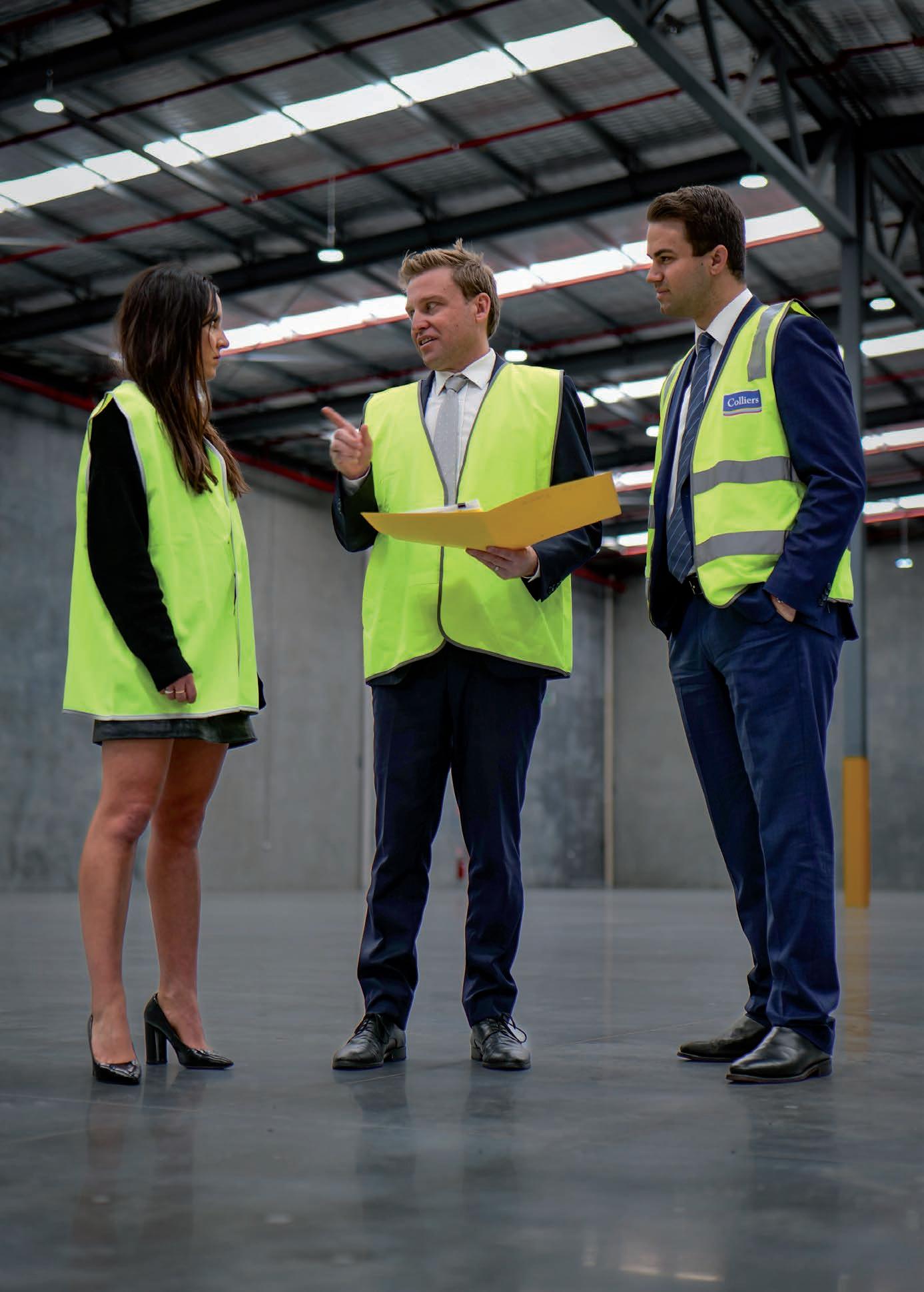
“Australia Post is a cherished
national institution, from the red post boxes dotted along our streets, to the red vans rolling down every road to deliver online orders,” Michelle Rowland MP, Minister for Communications, says.
“Australia Post is a recognised and trusted organisation which provides essential services to communities right across the country. It is, however, a highly competitive business and ongoing investments, like this facility, are an important part of Australia Post’s transformation strategy to ensure it stays competitive.”
The extra processing capacity delivered by the $82 million investment has already helped Australia Post to process more than 650,000 parcels over the Black Friday and Cyber Monday weekend.
“Message sticks were the first way messages were shared,” Len Collard, Whadjuk Noongar Elder Professor, says. “One man couldn’t travel all the pathways, it had to be passed ceremonially to the representative of the next Country.
“The carried specific symbols to be translated to each carrier as it was passed over from one pathway on Country to another, so the name Boorna Wangkiny Mia works very well for a facility like this that helps to transport items on behalf of other people from Australia and the world.”
Unlocking Industrial Opportunity.
Access our integrated service offering with Colliers industrial experts. National expertise, with a focus on detailed local knowledge. We maximise the potential of property.
LEARN MORE TODAY

SUPPLY CHAIN STRATEGIES IN A CHALLENGING ECONOMY


With an imminent global recession forcing people to tighten their purse strings, the pressure on supply chains has started to ease. Peter Jones, Managing Director and Founder at Prological says this creates the perfect time for supply chains to start planning for the future.
The past few years have exposed supply chains to exceptional pressures. COVID-19 accelerated the move to e-commerce and with that came increasing consumer expectations for next day – often same day – deliveries alongside an explosion in demand. Undeniably, our supply chains bent –often really, really far — but they never seemed to break.
While organisations would be forgiven for taking their foot off the proverbial gas during this brief lull, those who continue to push forward and shift their supply chains into next year will reap the rewards in the future.
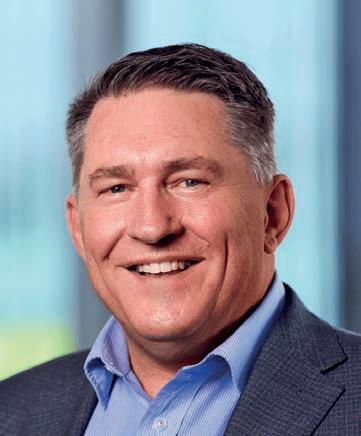
POSITIVE AND PROACTIVE PLANNING
With people feeling the pinch of the rising cost of living, consumers had started to reign in some of their spending prior to the Christmas peak and we had started to see volume dropping off and pandemic pressure relieved.
This unfamiliar breathing space within any supply chain is the prime opportunity to invest, and to strengthen the supply chain ahead of when spending and demand return to normal.
Supply chain managers must shift their thinking from being reactive and taking their future supply chain in a positive, proactive direction. What supply chain leaders should continue to do is demonstrate that, as a sector, they have their finger on the pulse when it comes to the future of business planning, the latest technological advancements, and how best to make operations resilient.
PUTTING THE CUSTOMER FIRST
In supply chain, everything you do and every decision you make, is about servicing customers. The business plans

of the future should put customers at the heart of every decision. By realising the consumers’ expectations and understanding their demands organisations will have a much better assessment of what their supply chain must deliver.
While things might be quiet(er) now, when we’re back to normal, not understanding the demands of your customer will undermine your ability to meet their expectations during the next spell of chaos. When the economy starts to recover and demand does turn back on, organisations don’t want to be left with a supply chain lacking the capability to scale and compete as the market returns.
Furthermore, in the face of adversity, businesses that can organise their supply chain to continue to fulfil that customer expectation, will come out of these difficult times, with a much higher degree of customer loyalty and an increase in market share against their competitors.
COST CUTTING
While it may be tempting, this period of calm is not an opportunity for businesses to cut costs in its supply chain – far from it. That decision will only damage an organisation in the long term. The temptation for businesses to start pulling money and resources away from the supply chain is present. However, it has never been more important to invest in supply chain by adopting new technology, using artificial intelligence, and hiring and training more staff.
At Prological, we work with businesses to optimise their current operations while supporting them through the investment and commissioning of new technology. In our white paper: A guide to operational excellence, we laid out how businesses can invest in their supply chain to ensure they are ready for the challenges of the future.
We have seen many businesses change their entire operation in recent years – going from just servicing store networks to high levels of direct-toconsumer fulfilment. With this rapid
evolution in the supply chain there have also been expensive mistakes and fundamental flaws. As we move into a more automated world, any organisation thinking of investing in technology needs a strong, robust business plan to refer back to.


BACK TO BASICS
Planning for the future should be about yourself getting your supply chain strategy lined up with your business’ strategy. There is a sense that 2023 will be all about going back to basics –putting the customer at the very heart of your business plan and understanding how your supply chain can grow to deliver its promise.
The global downturn will shift those businesses back to planning and advocating agility. Businesses should have learnt by now, that the key cog of business success is their supply chain; and so, businesses need to use this opportunity, not to turn attention away from the supply chain, but to take this brief moment of relief to move their supply chain forward.
After the incredible work of supply chains over the last few years, now is the time to push forward, to move to a generation of supply chains that sets businesses up for the next profitable and pressurised season.
Peter Jones, Managing Director & Founder, Prological



















FROM GREEN SCREENS TO NEW SCREENS: INTERMAX
If your warehouse is running any warehouse management system (WMS) or enterprise resource planning (ERP), we recommend moving away from old green screens to modern screens that younger staff members are familiar with and which help more experience staff become more efficient. No more heavy-weighted keypad-driven devices. No more ‘Where is the F4 key?’. No more intense staff training.
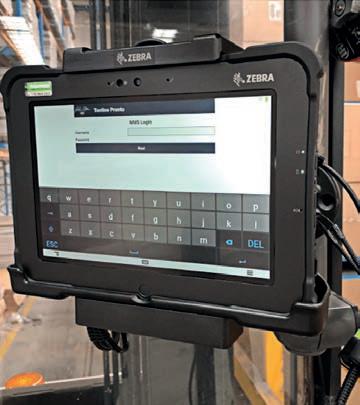
With a complete Zebra platform of Barcode Scanners, Android devices, printers, and headsets, at Intermax we can offer a proof of concept to let you see your old system with a fresh facelift. A 100 per cent live working system, our solution is device-driven – so no expensive servers or infrastructure is required.
A lot of time can be saved by turning green screens into functional coloured GUI (Graphical user interface) screens, and even adding voice-driven functionality. Imagine what 10 to 15 seconds per pick can make to your total amount of time saved over a day, week, or year. The return on investment (ROI) is potentially within six to 12 months.
With over 25 years in ever-evolving barcode technologies and platforms, Intermax wants to help businesses embrace the latest technology to improve their accuracy, efficiency, and overall work experience. We want to take away the stress of adapting to
new technologies so many companies are fearful of. We know that change is sometimes scary, and we are here to ease that burden. With remote management support, we can upgrade Android versions, software fixes, check if devices are missing and many other features to ensure maximum productivity without loading IT staff with more responsibility.
When Intermax opened its doors in 1996, we quickly learnt that barcode systems could offer nearly any business immediate improvements, significantly increasing accuracy and productivity while reducing staff fatigue.
Barcodes today are on almost everything – with a tailored solution, many businesses can improve their efficiency and bottom line.
Creating this success is not only about providing the right hardware and software, we focus on details often forgotten, such as training, barcode print quality and type, and ensuring the right labels are used for the job. Our expertise and care ensure your success.
Here at Intermax, we are passionate about introducing these new technologies and solutions to everyone! These improvements can benefit all business areas, from small start-up companies to large corporate entities. Our satisfaction is seeing the immediate improvements to the staff experience, the business efficiency, and the company
profit that a well-designed solution can bring.
Our solution has already been deployed to several sites using:
• Zebra TC5X Android Mobile computers;
• Zebra MC3XX Android Mobile computers;
• Zebra RS5100 finger scanners;
• Zebra L10 Android Tablets;
• Zebra ZT410/411 Industrial printers;
• Zebra Desktop printers;
• Zebra ZQ630 Mobile printers; and
• An array of Zebra hand-held scanners.
We understand that cost is a big factor, and so offer flexible purchasing options, such as subscription or leasebased options which can give you up to a 25 per cent productivity gain.
COLES DIGITALISES SUPPLY CHAIN WITH WORLD FIRST IOT SOLUTION
Australian supermarket giant Coles has digitalised its supply chain with Internet of Things (IoT) technology, deploying a world first solution from Loscam and Thinxtra to monitor the location of and measure stock for 4500 smart food bins
moving poultry between farms and its distribution centre.
Coles last year announced a major digital transformation strategy, which includes increasing the resilience of its critical supply chains, such as the Protein Cold Chain, responsible for
sourcing and stocking poultry. The goal was to reduce the number of food bins it loses, understand whether and where these assets are being damaged, improve pooling of equipment for transit, and ultimately increase stock turnaround.
Following a competitive tender, Coles
Leading the way. Transforming business.
Argon & Co is a global management consultancy that specialises in operations strategy and transformation. With expertise spanning the supply chain, procurement, finance and shared
services, we work together with clients to transform their businesses and generate real change. Our people are engaging to work with and trusted by clients to get the job done.
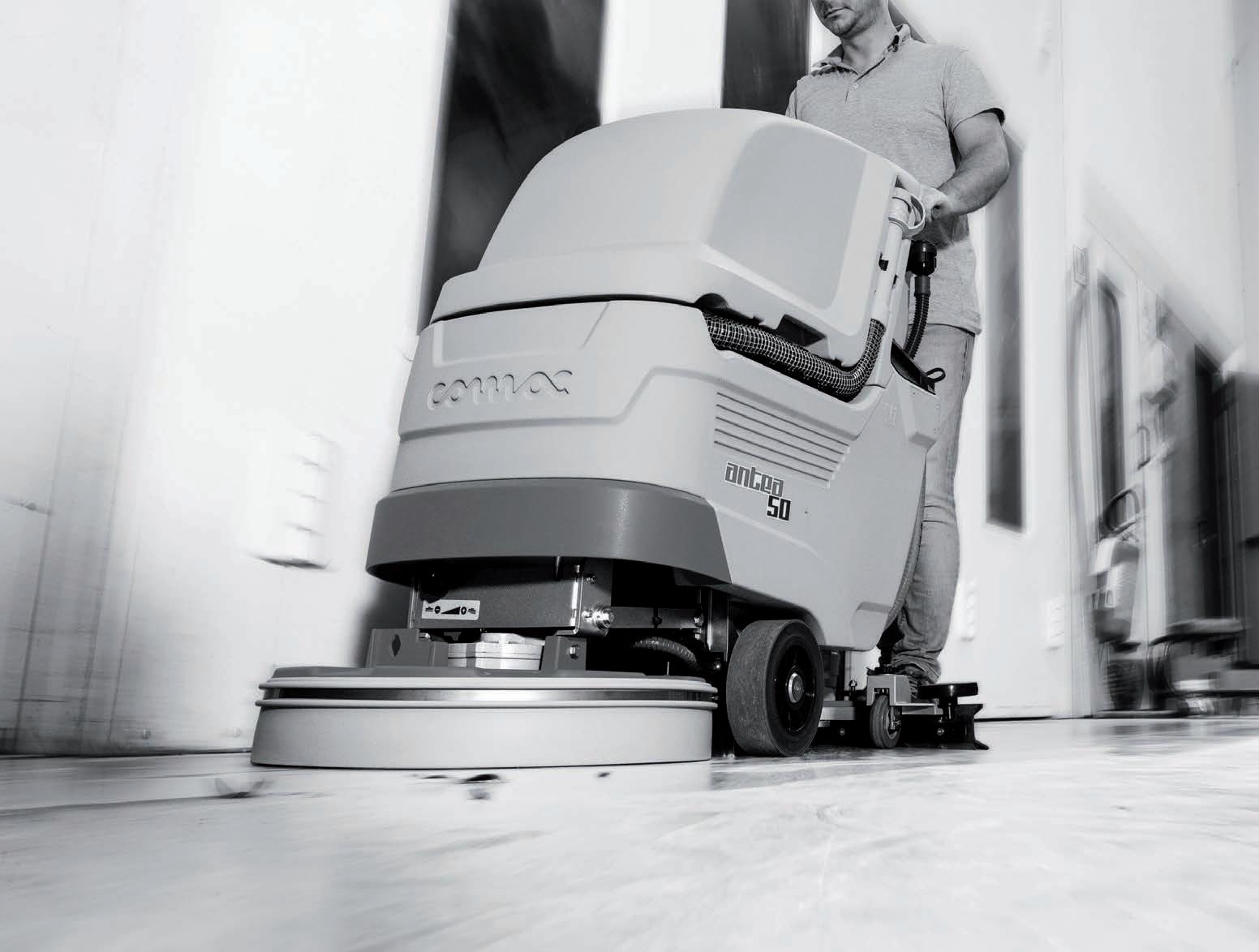
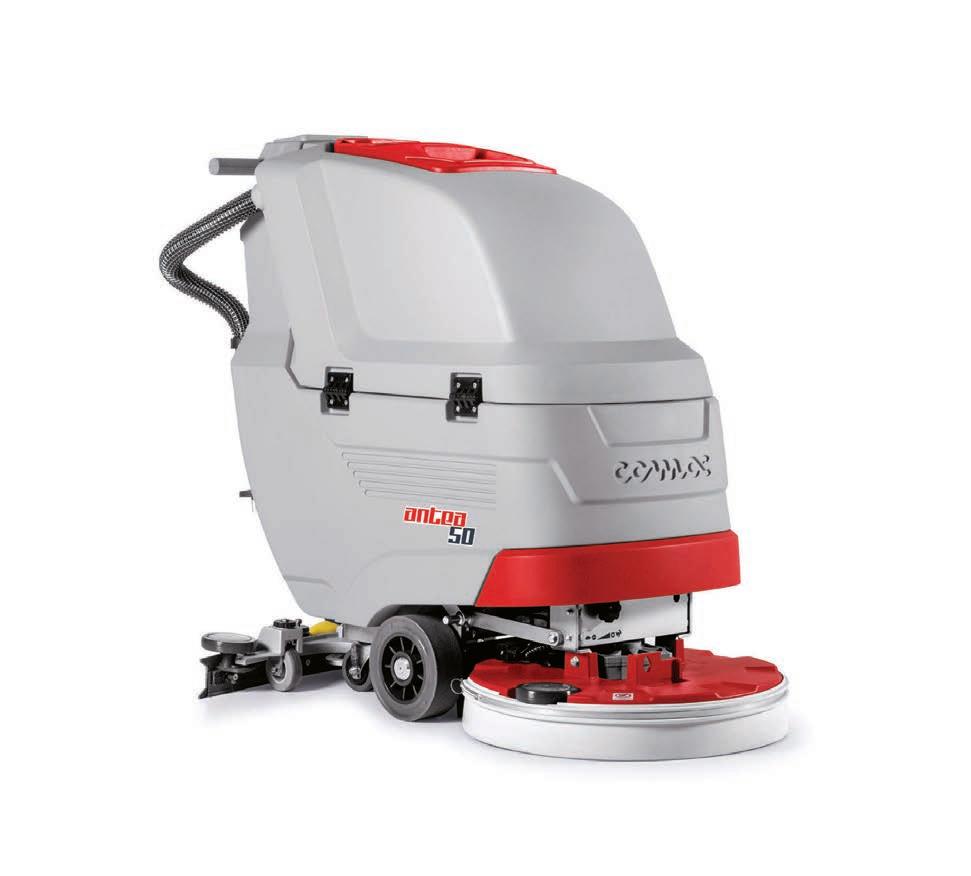
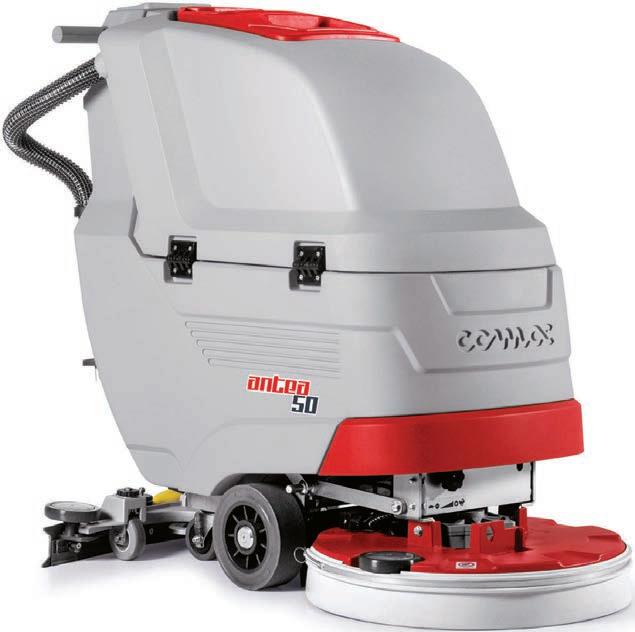


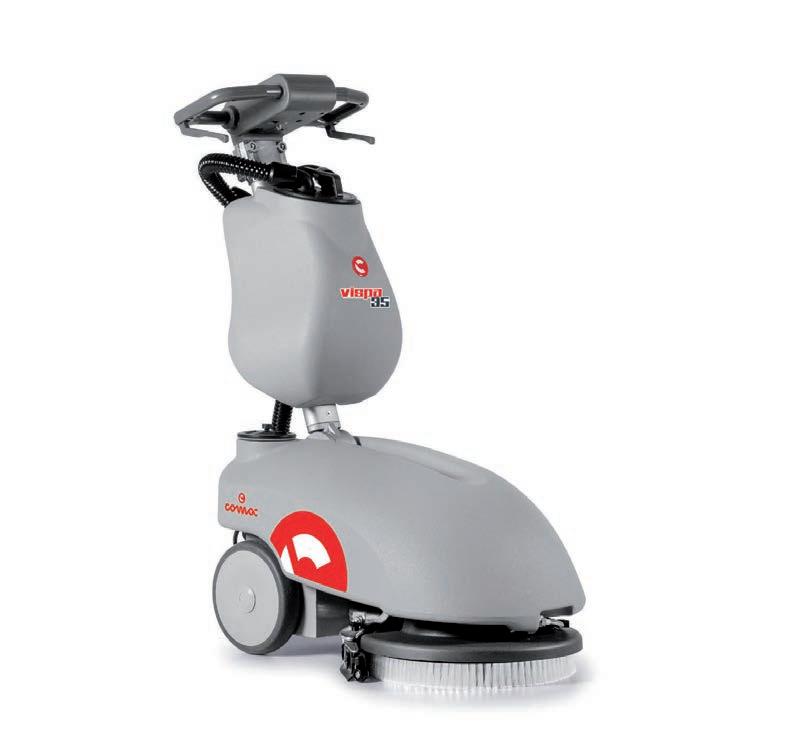

partnered with Loscam, which was the only company to propose an innovative IoT solution. Coles subsequently deployed 4500 smart and foldable food bins manufactured by Loscam and fitted these with Internet-connected devices. The devices communicate location data in real time using Thinxtra’s national, public 0G Network. This information is available to the supermarket via LoscamOnline, a specialised tracking platform.
The combined IoT solution has enabled a connected and transparent supply chain with timely insights into geolocation, geofencing, shock impact events, temperature, and bin status, and allows Coles to optimise transport routes and equipment pooling based on usage patterns.
“The smart food bins ensure that we can track the poultry from the moment they are loaded by our suppliers at farms, right through to the time they reach our distribution centre, reinforcing our food safety standards, while saving time and minimising waste,” says Larry Kavanagh, General Manager National Meat Processing, Coles.
“We partnered with Loscam to deploy a purpose-built device and portal system with Thinxtra connectivity, tailored to the specific needs of our Protein Cold Chain department, giving us full visibility into our supply chain operations in real time. This is a crucial step to retain our
customer-focused, quality-driven service that’s reflected in our supermarkets.”
Loscam and Thinxtra’s IoT solution provides data for each individual smart food bin, rather than just the trucks transporting them. Coles can therefore view the location of each individual asset in transit and receives alerts when food bins aren’t where they should be and any time there is an impact, including when bins are mishandled.
This reduces unnecessary damages and creates accountability for stock quality supported by reliable real-time data.
In addition, the ability to monitor asset performance, including temperature levels, creates assurance for the quality of food. This plays a major role in eliminating waste, and helps Coles maintain safe conditions during transit with the lowest possible energy consumption to support its Environmental, Social and Governance (ESG) objectives.
The innovative combination of foldable food bins and IoT technology reduces the cost of the asset pool required by 25 per cent, tripling the amount of empty bins returned, reducing cost and waste.
“Historical location device solutions generally fell well short of market expectations and needs,” says Daniel Bunnett, Executive Vice President A/NZ at Loscam.
“With a complex large-scale organisation like Coles, IoT has
introduced the capabilities of asset management beyond traditional RFID or GPS tracking, with sensors that can provide insights to optimise logistical operations. Powered by the national Thinxtra 0G Network, our IoT devices give Coles a sustainable, more efficient way of transporting perishable poultry produce, and managing its returnable industrial packaging, all while reducing resource waste.”
Coles selected Loscam as the company’s solution proved more innovative and cost-effective than competing tracking. The IoT technology is fast and simple to install and does not require up-front infrastructure setup investment.
The devices are also batterypowered, with a life of up to five years, giving them the ability to operate independently of any power source.

“Coles, as an iconic Australian brand, has been able to deploy Internet of Things technology to achieve economic viability and operational scalability through streamlining its critical supply chain operations,” says Nicholas Lambrou, CEO of Thinxtra.
“The IoT-powered smart food bins give full traceability of quality assurance and efficiency within the protein cold chain, all the while saving Coles business costs by avoiding unnecessary damages and better pooling equipment for transport.”
TEAM GLOBAL EXPRESS RECEIVES $20.1M FOR BEVS
Team Global Express says ARENA (the Australian Renewable Energy Agency) will give it $20.1 million in funding to deliver Australia’s largest logistics Battery Electric Vehicle (BEV) fleet in Western Sydney.
Team Global Express aims to reduce the emissions profile of its 6500-strong heavy transport fleet, following the large-scale trial which will place 60 BEVs into its Express Parcels fleet.
The 60 electric trucks comprise of 24 Daimler Fuso eCanters and 36 Volvo eFLs. The orders placed with Daimler and Volvo are the single largest orders each company has received for these

electric trucks in the world, to date.
“I want to thank ARENA and Minister Bowen for this opportunity and their support under the Driving the Nation Fund,” Christine Holgate, Group CEO of Team Global Express, says.
“Today is an important step toward progressing Australia’s pathway to reduce Scope 1 emissions and secure a net zero future,” she adds.
“This is the first project of its scale in Australian logistics, as such we are in a unique position to work closely with ARENA to share the knowledge we gain and provide this vital information for the benefit of the entire transport and
logistics sector.”
The Bungarribee site in Western Sydney will host this trial due to its strategic location, the nature of the operations and the suitability of the existing facilities to host the necessary battery and charging infrastructure for the fleet.
The project will see nearly one third of Team Global Express’ Western Sydney fleet transition to electric trucks and operate under a ‘back-tobase’ model with travel from DCs to customers in residential and urban areas, with the trucks returning to the depot for charging.
“This trial will not only reduce emissions, it will also give our valued employees at Bungarribee the opportunity to be trained on charging driving and optimising the electric vehicles of the future,” Christine explains. “For Team Global Express, it’s an important milestone in our
vision to be Australia’s most sustainable logistics company.”
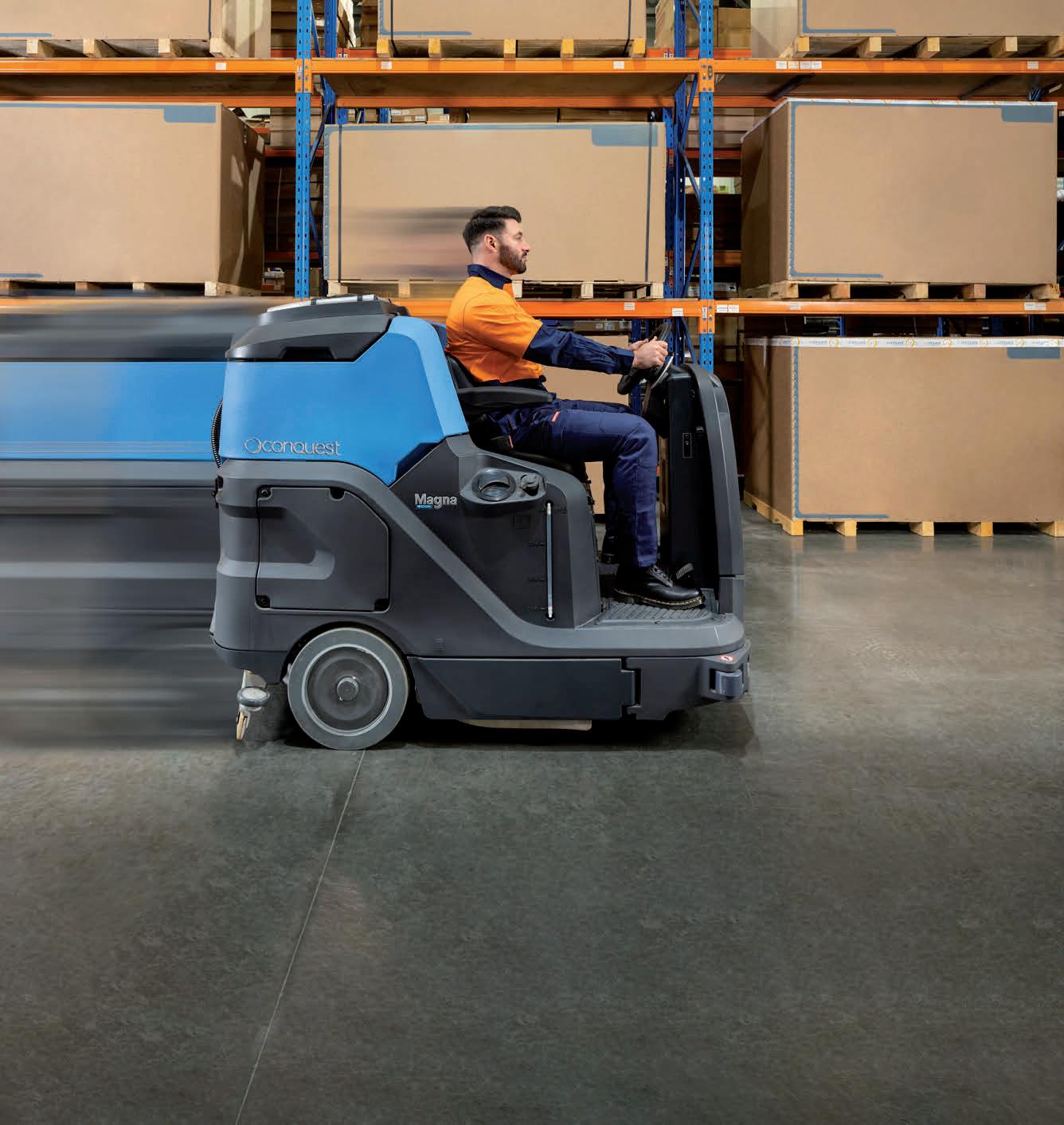
The trucks will be powered and charged on-site at Bungarribee using both on-site solar generation, the installation of a battery energy storage system and the use of renewable energy from the grid.
Construction of the depot and associated charging infrastructure will commence shortly after Christmas peak period and employ more than 50 people. The Bungarribee depot will commence receiving the 60 vehicles over an 18-month period from early 2023.
TMX DEVELOPS NEW SITE FOR THE CONSORTIUM CLEMENGER
TMX has partnered with The Consortium Clemenger (TCC), complex warehousing and fulfilment specialists, which has committed to a new facility in Melbourne’s Truganina and is expanding its Sydney-based Pemulwuy site.
The business transformation consultancy says it has developed fitfor-purpose facilities for TCC to cater to its new business growth and upcoming requirements.
TCC’s client base has recently expanded to service direct-to-consumer cosmetics, health and wellbeing, high-end power tools, valuable finished goods, and additional point of sale material.
“TMX has been fortunate enough to partner with TCC over recent years and numerous deals to support their business with tailored operational, property and project advisory,” Dom Sorbara, Property Director TMX, says.
“These commitments by TCC represent significant growth in their business and it has been our privilege to observe this growth as TCC has moved in step with rapidly changing consumer behaviour and opportunities.”
The industrial property markets in Melbourne and Sydney are tightly held with vacancy rates as low as 0.3 per cent with extremely high rental growth.
TMX and TCC partnered to negotiate and secure the facilities, as well as coordinate the design of the bespoke fitouts, including office and warehouse areas.
“Our partnership with TMX has enabled TCC to commercially grow with confidence and continue to delight our customers,” Chris Kearney, Managing
Director, TCC, says.
“TCC’s unique customer-first focus has led to the demand for our services to grow exponentially over the past three years.
“With our focus on direct-toconsumer fulfilment and bespoke 3PLs and POS distribution, it is vital that we have the right properties in the right locations with optimised layouts. The TMX team have been crucial in supporting our property strategy.”
In Melbourne, the new 11,910 sqm facility has been designed to cater for current client needs and factors in
future automation efficiencies to deliver additional volume and throughput.
This facility will be TCC’s secondlargest DC in Australia. Time & Place and Stockland are developing the Truganina facility in a joint venture with practical completion on track for end of the calendar year.
In Sydney, TMX supported TCC with the expansion of its existing 16,000 sqm Pemulwuy headquarters into the adjoining 3800 sqm space at The Quarry with Dexus. This expansion was spurred by a significant 3PL contract commitment won by TCC.
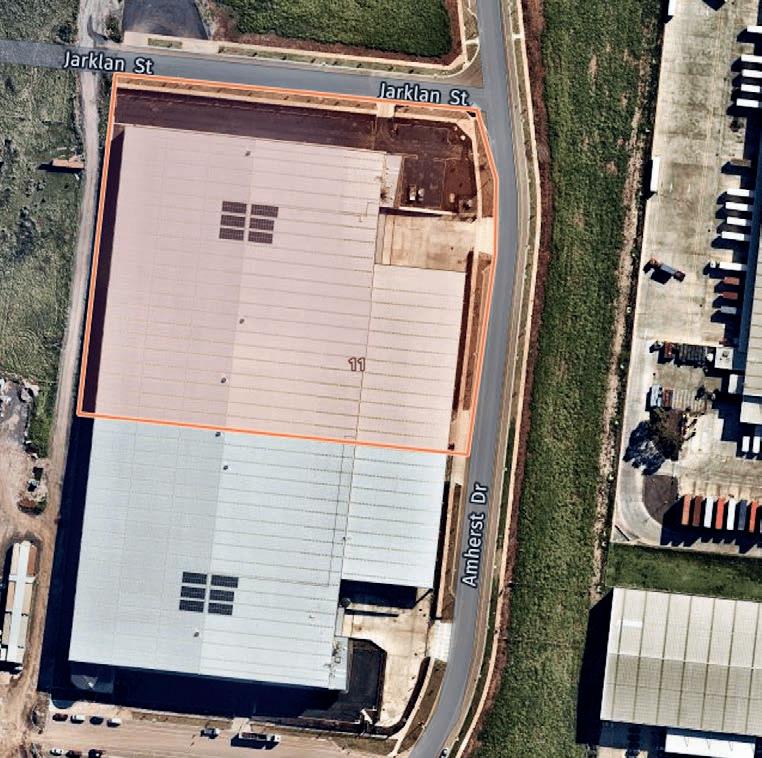

COLLIERS WA INDUSTRIAL EXPANSION CONTINUES
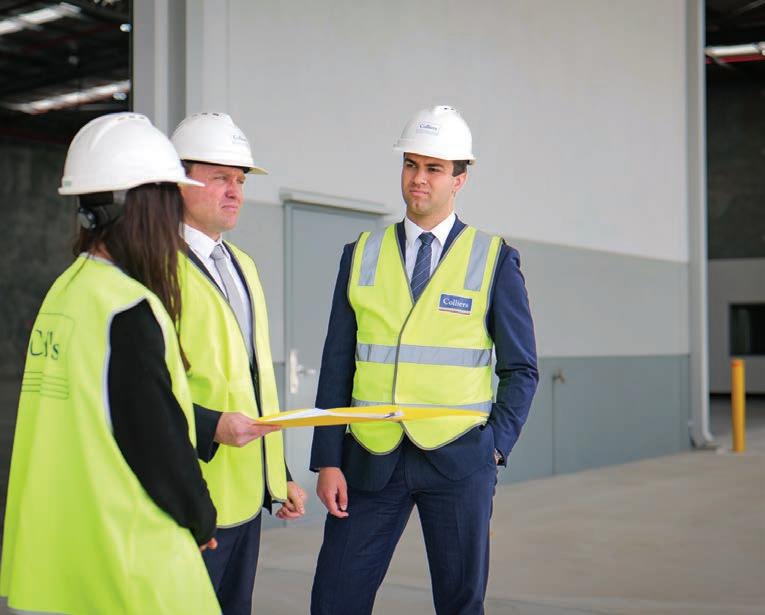
Early 2023 marks the first anniversary of Colliers opening its office in Western Australia’s capital city, Perth. Sam Hammond, Colliers Industrial Director, Hayden Dick, Colliers Industrial Senior Executive, and Catherine Van der Walt, Colliers Industrial Executive, discuss with MHD the market, the future outlook and tips for the year ahead in WA.
Colliers has one of Australia’s largest property teams specialising in Industrial and Logistics facilities. Their national reach and scale mean that their clients benefit from exposure to domestic and international markets. Colliers’ reach is further aided by global collaboration with colleagues providing unrivalled insights and access to all sectors of the industrial market.
From raw land to industrial parks, warehousing to high-tech propositions, and refurbishment to repositioning, they work with their clients to develop the best industrial real estate solutions to suit their clients’ business needs.
“Colliers’ strength lies in providing national expertise with a focus on detailed local knowledge,” Colliers State Chief Executive of Western Australia, Richard Cash, says. “After successfully opening a new company-owned office in Perth, Western Australia, in early 2022, the Industrial team has grown and continues to secure multiple sales and leasing appointments predominantly servicing WA-based high net worth groups, syndicators and Institutional clients.”
MHD sat down with the Industrial team from Colliers in Western Australia to discuss the market, future outlook, and some tips for the year ahead.
GROWING APPETITE FOR SPECULATIVE PRODUCT
The Perth Industrial and Logistics market has recorded significant growth in recent years, with demand outweighing supply and availability by a large margin. Given the influence the resource sector has on Western Australia’s economy, coupled with the dominance of owner-occupiers that often compete with developers to secure core development opportunities, the local Industrial market tends to experience
greater volatility in the delivery of new supply in comparison to the East Coast capital cities.
As a result, supply has proven to contract dramatically during troughs in the local economy, and is often unable to match demand once conditions rebound. Typically, due to lead times for construction and land availability.
“Due to the tightness in the market here in WA, we are seeing an increase in occupiers well in advance of their lease expiries to provide portfolio
advice for the medium to long term,” Colliers Industrial Director, Sam Hammond says. “This tightness in the market is likely to remain with a slow release in future supply. Forward planning is going to be critical for their operational excellence moving forward.”
The revival of the Perth economy following the rebound in the resource sector has led to robust demand since early 2021, and with limited new supply coming online, the vacancy rate has fallen sharply. Just two years ago, the Perth vacancy rate measured 8.2 per cent and was regarded as the highest in the country at the time. Today, the vacancy rate totals just 0.7 per cent in Q4 2022, up slightly from the record low of 0.2 per cent recorded in mid 2022.
“During the 2021 – 2022 financial year, the State’s resources sector generated an all-time record in revenue of $231 billion, with year-onyear growth reflecting 9.5 per cent,” Colliers Director of Research, Luke Crawford says. “Coupled with the ongoing growth in the e-commerce sector, which now represents 13.3 per cent of total retail sales in Australia,
the scene appears set for continued robust leasing demand in 2023 for both workshop and warehouse accommodation.”
As a result, several developers are progressing new speculative product across the Perth market, with a moderate pick-up in new supply forecast in 2023.
Historically, the Perth market has developed less speculative industrial space than the East Coast capital cities, reflective of the skew towards private owners who don’t tend to be as aggressive in growing funds under management as institutional investors, paucity of land availability and a higher proportion of owneroccupiers participating in the market.
However, with institutional groups now estimated to own roughly 25-30 per cent of industrial assets above 5000 sqm across Perth and with rents growing by 20 per cent-plus year-on-year in all submarkets, the appetite for speculative development has shifted and a large (but healthy) pipeline now exists for the next 12 months.
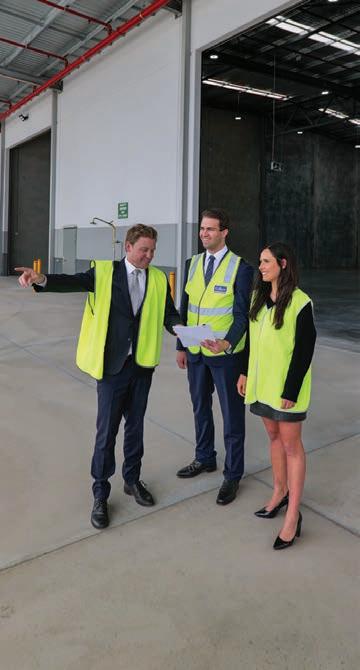
“Owners of industrial land are capitalising on the favourable leasing
market by spec-building product to meet occupier demand,” Colliers Industrial Senior Executive, Hayden Dick says. “The confidence to build without an occupier secured, has
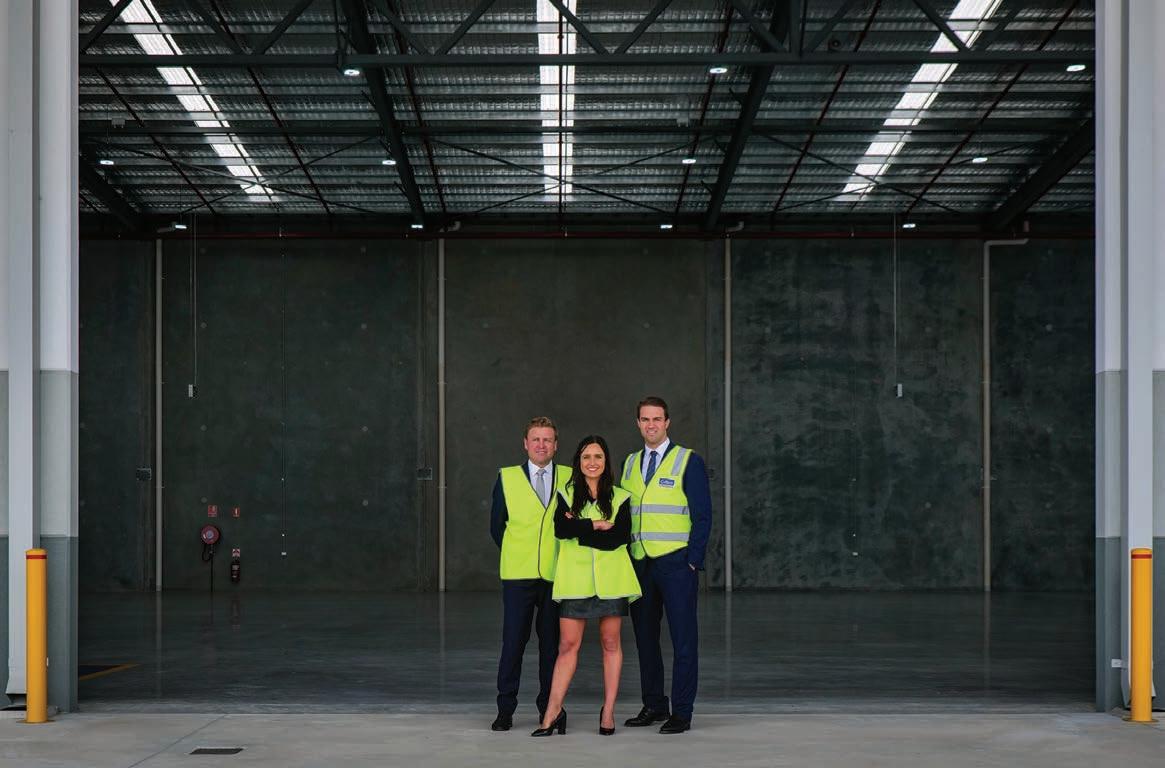
come from the success of most speculative assets brought online nationally over the past 12 months, being leased prior to practical completion. Given current enquiry levels within the Perth market and record low vacancy rates, a similar outcome is anticipated throughout 2023.”
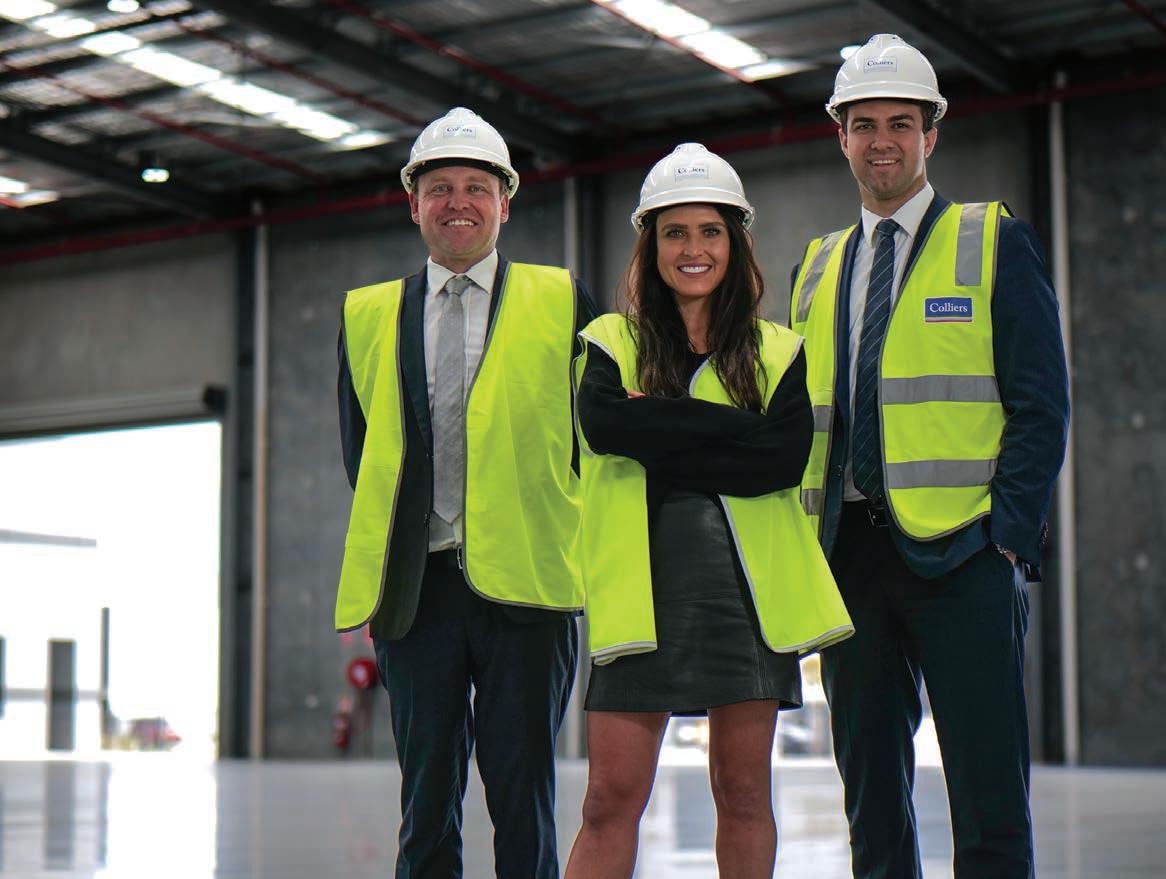
“As it stands, the supply pipeline for 2023 currently totals approximately 215,000 sqm, around 75 per cent of which is expected to eventuate within the East submarket,” Colliers Industrial Executive, Catherine Van der Walt says. “While a large share of the speculative pipeline stems from national institutional groups, there are facilities planned from the likes of Hesperia and Perth Airport who are looking to capitalise on current demand.”
By size, the average speculative facility for 2023 measures approximately 8500 sqm, which does reflect an increase from previous
years. However, by contrast, the average speculative facility size on the East Coast in 2023 measures 15,160 sqm, albeit skewed by a couple of large 30,000 sqm-plus projects (with the ability to be subdivided).
With Perth currently experiencing solid leasing activity, coupled with a period of weak supply, the market is well placed to absorb the forecast speculative development provided that the location, design, flexibility, and size are appropriate for market conditions and demand.
FACTORS DRIVING WA ECONOMY
The Colliers team says different economic drivers are at play in WA compared to the states over on the East Coast with mining as one of the unique financial booms for the country’s largest state.
Sam Hammond says “Our broader state economy benefits so greatly from our large land mass. We have a vast amount of farmland, mineral
During the 2021 - 2022 financial year, the State’s resources sector generated an all-time record in revenue of $231 billion, with year-onyear growth reflecting 9.5 per cent.Colliers WA Industrial team: Sam Hammond, Colliers Industrial Director (left), Catherine Van der Walt, Colliers Industrial Executive (middle), and Hayden Dick, Colliers Industrial Senior Executive (right).
resources and an expansive coastline which is ideal for world-class fishing activities and an abundance of existing and future port locations.
“In addition to this, WA’s gas preservation policies have created stable energy prices. We’re attracting more data centres and heavy workshops to the State because the risk profile of energy costs elsewhere in Australia and globally are creating unacceptable operational risks for many groups. We see this trend continuing over the medium term.”
USING VOLUME AND MEETING ENERGY TARGETS
One of the trends the Colliers WA Industrial team has noticed in the last three years is a big push for facilities around cubic capacity and clearance heights.
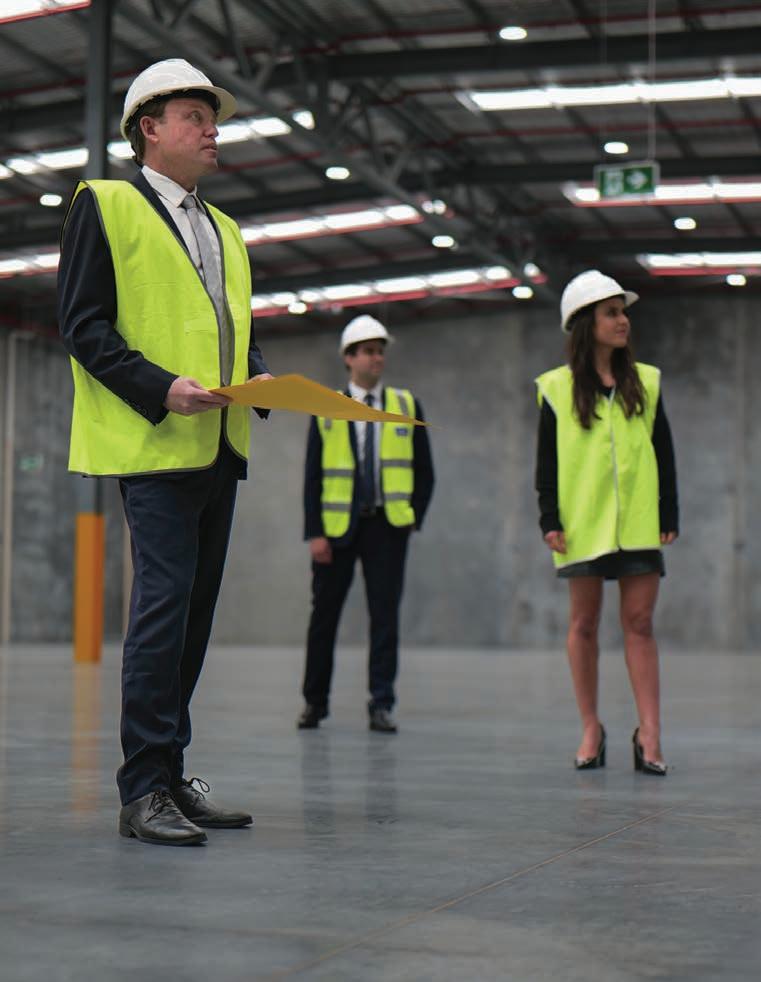
As the land prices and rents increase, sheds are also getting bigger, and outgoings are growing. This is prompting occupiers to make their warehouses and DCs more efficient by squeezing as many goods as possible into the space compared to overall outgoings and gross occupation costs.
While this trend has been occurring nationally, it has only started growing in prominence in WA over the last 24 months.
There’s also an increase in the amount of people wanting to invest in real estate, especially industrial, whether it be private or syndicator groups, or institutional grade owners.
“This has really ramped up over the last 12 to 24 months,” Hayden explains. “E-Commerce trends have become more apparent to the broader public over that time hence the inflow of investment capital into this space.
“Due to corporate requirements and ESG targets of certain international and national occupiers, we are now starting to see landlords in Western Australia future-proofing their assets. Many of them have sustainability goals they want to achieve by a certain year. These industrial owners are having to factor this in as they design their buildings not only for current projections but for the future demand in 20 to 30 years’ time.”
THE ROAD AHEAD
While vacancy rates will continue to

be low and demand will remain high in 2023, Colliers will work with its clients in WA to secure appropriate industrial assets that meet their needs and will overcome any challenges impacting the market.
The Perth company-owned office in its first year of operation has driven activity across the market and continually invested in relationships with our valued clients to maximise results and drive enduring value.
The Perth business will continue to expand Colliers’ capabilities, build scale, and grow in 2023, ensuring it maintains servicing the market and acting as trusted advisors for its clients.
Beyond its WA industrial expertise, Colliers services its clients nationally, working with occupiers, developers, and investors to deliver results and exceed expectations.
Its national team of real estate experts deliver enterprising property solutions and market leading advice. Its strength lies in providing national expertise – with a focus on detailed local knowledge – and its ability to collaborate with its global experts. Leveraging, extensive industry experience, market expertise and data driven approaches its team develop key strategies for its clients both locally and globally.
Keep informed on the market, unlock opportunity, and see how Colliers can accelerate your success and maximise the potential of property. ■
For more information on the Colliers Industrial offering, contact one of our experts today.
THE CUBIC APPROACH TO WAREHOUSE DESIGN
Prological Managing Director Peter Jones discusses how warehouse design has been hamstrung by focusing on square rather than cubic metres, at the cost of proper space utilisation and efficiency – and how to unlock benefits through the cubic approach.
In the world of warehouse design, it is common practice to measure and plan using square metres rather than cubic metres. However, as Peter Jones, Managing Director of supply chain consulting firm Prological points out, this method of measurement may not be the most effective.
“The preference for square metres can be traced back to the traditional purchasing process of industrial property, which is based on land measurements,” Peter says. “Even when companies vote on the construction of a warehouse, the decision is often based on square metres rather than the actual cubic capacity of the facility.”
But Peter argues that thinking about warehouse design in terms of cubic metres rather than square metres can lead to a more efficient use of space.
“In a typical 10,000 square metre warehouse with a 13-metre roof height, the cubic utilisation is only 17 per cent,” he says. “By increasing this utilisation to 25 per cent, there
is the potential for a 50 per cent increase in the cubic utilisation of the facility. This highlights the importance of considering cubic metres in warehouse design to maximize the use of available space.” What accounts, then, for the continuing emphasis on square metres rather than cubic metres?
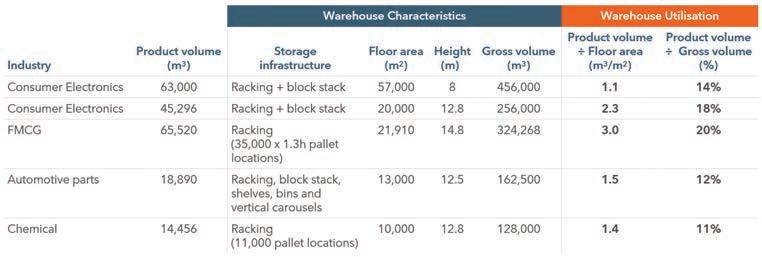
“The traditional method of measuring warehouse space in square metres may be due to groupthink, a longstanding way of thinking,” Peter says. “However, the increasing use of automation in warehouses has caused some to rethink this method and consider the benefits of considering warehouse space in cubic metres.”
He believes that by considering the cubic usage, companies may increase their utilisation by up to 50 per cent, especially in Greenfield development. He cites one facility designed by Prological that has a cubic utilisation rate of 34 per cent – double the efficiency of many traditional buildings.
“Re-conceptualising warehouse builds in terms of cubic rather than
square metres will change the way we design warehouses,” Peter says. “We are not aware of a traditional build getting close to 25 per cent volumetric utilisation.”
The accompanying table shows five examples of cubic utilisation within existing operations. Even the FMCG example at 21,910M2 and racked spaces for ~35,000 pallets only achieve 20.2 per cent cubic utilisation efficiency. While this facility delivered 1.75 pallets per M2 it still could only manage one in five cubic metres in storage utilisation.
“Despite the prevalence of the traditional process of purchasing industrial real estate land and then building a warehouse on that land, the rise of automation has initiated a shift towards more optimal warehouse design,” Peter says. “An example of this is a new warehouse in Melbourne, which – while espoused as a benchmark facility by the owner, occupier and media –actually has a low cubic utilization rate due to a large proportion (~25 per cent) of the floor space being occupied by automated material handling systems, in this instance AMRs that occupy just 2.4 vertical metres of the 13m high warehouse. This highlights the importance of considering cubic utilisation in warehouse design, rather than simply focusing on square metres.”
Peter notes that some participants in the industrial real estate space may initially be hesitant to shift to a metric of measurement based on cubic metres rather than square
metres in design. The overall incentives in the market strongly point towards the adoption of this new way of thinking, particularly where high levels of automation are incorporated in the operational specification of the facility.
“This shift would allow increased efficiency and therefore enable greater utilisation of industrial land releases, in turn lowering prices and making it more accessible for businesses. Overall, the shift to measuring industrial property in cubic metres would benefit all parties involved, resulting in more efficient use of land and lower costs for businesses. Land owners will derive more overall revenue, industrial real estate brokers will derive more revenue and tenants will benefit from higher efficiency facilities delivering lower operating costs.”
There are still barriers to adoption due to the risk-averse nature of key stakeholders and the long lifespan of industrial assets (more than 50 years), Peter says. “However, companies with the ability to execute Next Generation designs will have a distinct advantage over their competitors. Their operational
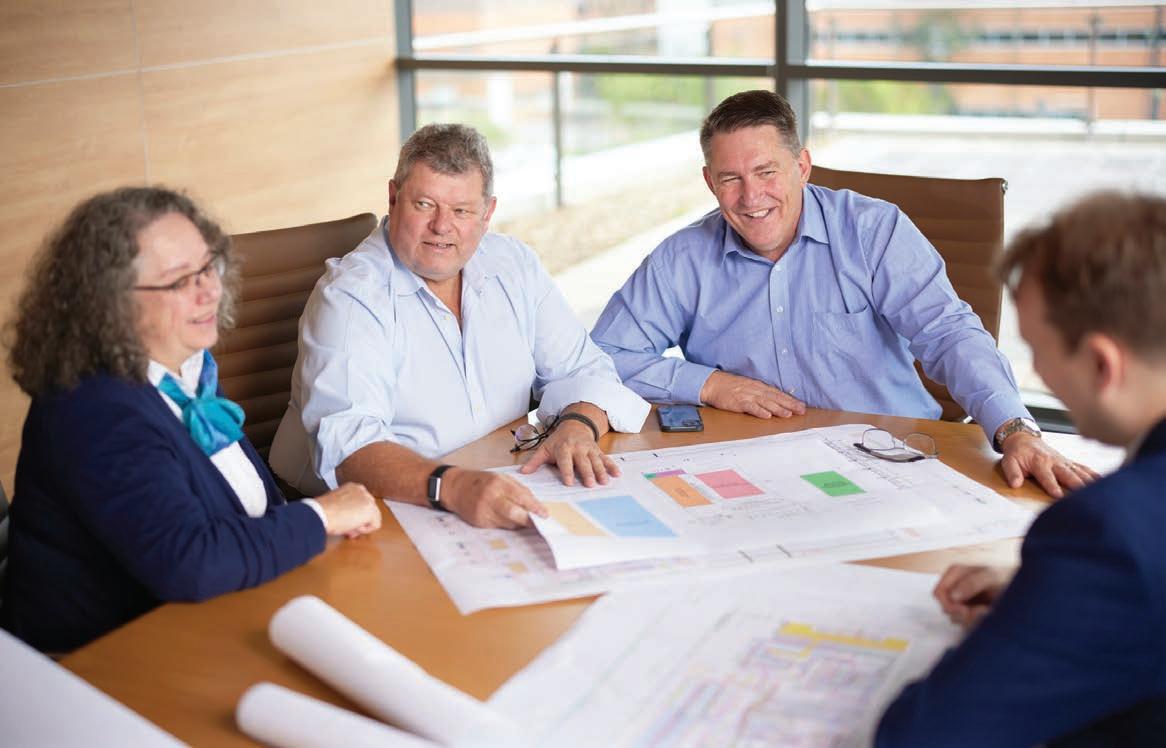
cost will be lower, and the building will be more efficient. It may take some time for these concepts to become more widely accepted – as is the case with many innovations and ‘generational’ changes in thinking (slow uptake of solar in the industrial space is just one example) – but the potential increase in utilisation makes it worth considering for companies looking to optimise their warehouse operations. Eventually, this new way of thinking will become the norm.”
But innovative companies are already pushing the boundaries of traditional warehouse design. “At Prological we are working on several innovative designs for these early adopters and industry innovators.
“In the short term, it is likely that only larger, well-established brands with the resources and longterm lease capability will be able to take advantage of this cuttingedge approach.
“However, as more businesses begin to see the cost and operational benefits of these modern warehouses, it is likely that the market will begin to shift towards more sophisticated designs.” ■
“
Overall, the shift to measuring industrial property in cubic metres would benefit all parties involved, resulting in more efficient use of land and lower costs for businesses. ”
NO VACANCY?
CBRE’s Sass J-Baleh and Trevor O’Grady discuss the commercial real estate firm’s recent research into vacancy rates in the industrial and logistics sector.
“CBRE’s last report, for H1 of 2022, showed that the national vacancy rate for industrial and logistics properties was 0.8 per cent, which was then the lowest in the world,” says Sass J-Baleh, Head of Industrial & Logistics Research Australia and Director of NSW Research at CBRE. “Our new report, covering H2 2022, shows that number even lower at 0.6 per cent, maintaining Australia in its position as the world’s tightest I&L market.”
Sydney has the lowest vacancy rate in the nation, lowering to 0.2 per cent, while Melbourne remains roughly constant at 1.1 per cent.
“Below two per cent means that there are – practically speaking – no vacancies on the market, so those numbers are quite striking,” Sass says. “Because of this, there has been growth in rents, with super prime grade face rents rising 25 per cent year on year.”
Again, Sydney takes the cake for rental growth, followed by Perth, which has the second lowest vacancy rate, showing a clear correlation between scarcity of industrial property and rental prices.
With occupier expansion and new space requirements accounting for 90 per cent of lease transactions in 2022, current occupiers – let alone those trying to break into the market – are feeling the heat, Sass says.
But how is it that Australia – a country with such abundant territory –has the lowest I&L vacancy rate in the world?
“There’s simply a chronic undersupply of space, with not enough being brought online in time to meet demand,” says Sass. “Like other countries, Australia saw a strong take-up of space from the e-commerce sector during COVID-19, but what makes Australia unique is that we are a mature economy with an immature e-commerce sector; we are still growing with respect to e-commerce
sales and penetration rate while other countries have already plateaued. Additionally, the I&L sector in Australia faces competition for space from food logistics and food manufacturing sectors – that’s why we’re unique.”
Sass adds that the Australian market is shaped by pent-up demand that will keep vacancy rates at low levels for the next six to twelve months. “Even if economic growth slows there won’t be enough supply to meet demand, our research shows. If we look at the supply pipeline moving forward, it’s notable that only 50 per cent is owing to speculative developments, compared with 70 per cent in the US.”
Trevor O’Grady, National Director for Advisory & Transactions and Occupier – Industrial & Logistics, at CBRE says the scarcity of industrial property has also been affected by slow planning approvals, particularly in NSW. “In NSW planning used to take six to nine months whereas now we’re looking at 12 months-plus,” Trevor says. “With the Badgerys Creek precinct coming
online soon there’ll be some more supply, but we’ll still be waiting on the necessary infrastructure to meet it and the existing problem of incredibly slow planning approval turnarounds. In Melbourne, land has been earmarked for the Western Intermodal Freight Terminal, which is putting increased pressure on Melbourne, too. We need to keep putting pressure on government to keep things moving.”
Part of the reason authorities are moving more slowly on the planning and approvals front, Trevor adds, might be a hangover from COVID, with displaced authority teams taking longer to action approvals and provide reports for or against developments.
Whatever the reason, it’s putting major pressure on tenants.
“There’s three or four bona fide parties missing out on every property,” he says. “That means tenants are forced to renew leases on properties that are no longer sufficient or operationally suitable for their purposes for their purposes. Unless they’ve

planned very well in advance, there’s a strong chance of missing out on more modern speculative or greenfield facilities – so if you’re planning on moving to a new facility, that decision now needs to be made a minimum of two years in advance, you can’t expect to get something that meets all your needs only 12 months before your current lease is due to expire.”
Are such speedy and sharp rises in rent sustainable for occupiers?

“The comment I’ve heard from most of my clients is that consumers will have to pay more for products,” Trevor says. “With current rents, it’s just not sustainable, so tenants will have to pass on those costs to the end-consumer – which will of course put more pressure on inflation if industrial rents continue to rise at such an alarming rate.”
WHAT IS TO BE DONE?
Trevor says that some occupiers are inspecting their national footprints and reconsidering whether to invest in large new facilities, and where they’ll locate them if they do so invest. “With a minimal gap between prime and secondary asset rents tenants would be silly not to consider the efficiency benefits of new facilities with greater cubic capacity and the ability to cater for incorporation of future automation and technology,” he says. “It is a no brainer to invest in new facilities when you look at the fixed storage cost per pallet.
“With the Sydney market so tight and unreliable, companies may opt for Brisbane or Melbourne as alternatives. Another option is to investigate how existing facilities can be retrofitted to meet new needs – for instance investing in floor flatness so the property can support solutions such as an AutoStore solution or AGVs. We’ve been working on the education side of things – getting our clients to start their process earlier and strategize well ahead in what is a tight market. The opportunities will still there if you start the process early enough.”
Sass says that CBRE is working to lobby government through the Property Council of Australia (PCA) to help them expedite their planning and approvals processes.
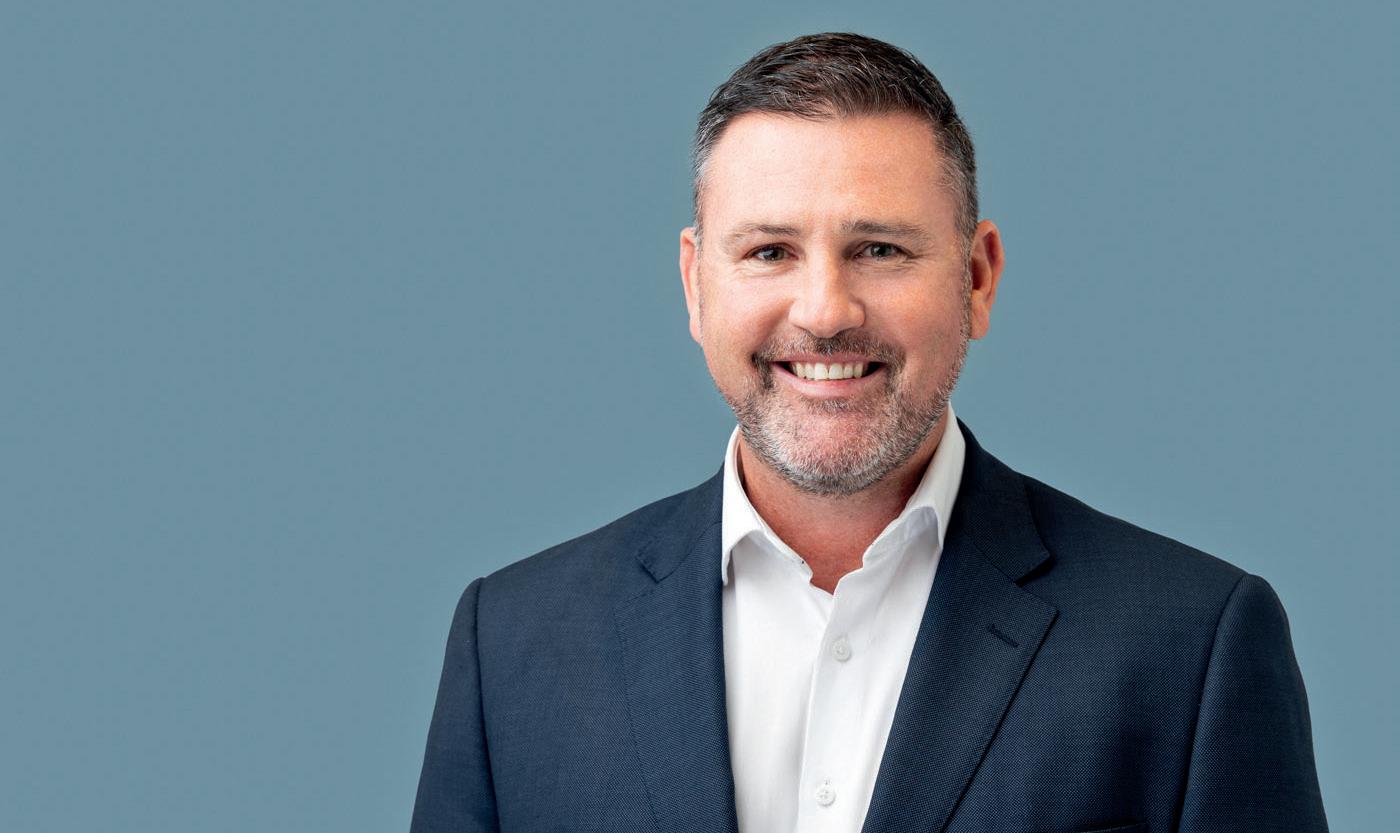
“I sit on the industrial committee for the Industrial NSW branch of PCA, and we’ve worked with the PCA for a few years on these issues,” Sass says. “We continue to work with the PCA this year to provide data to the government so they can make informed decisions as well as provide guidance on releasing/rezoning/servicing land to alleviate industrial supply pressures. At the end of the day, governments want to attract large occupiers to their states for greater employment opportunities and stimulate economic activity.” ■
To read the full report, use the QR code.
“
There’s three or four bona fide parties missing out on every property ... That means tenants are forced to renew leases on properties that are no longer sufficient for their purposes.
Trevor O’Grady, National Directorfor Advisory & Transactions and Occupier – Industrial & Logistics, at CBRE.
OPTIMISING SUPPLY CHAINS WITH DIGITAL TWIN
Digital twin technology is revolutionising supply chain by allowing businesses to develop simulations of networks and facilities. Argon & Co’s Chris Foord, Associate Partner, and Coupa’s Henry Brunekreef, Regional Vice President, Solution Delivery, ANZ, Japan, and China, explain to MHD how this innovative solution works and what benefits it offers to businesses during these turbulent times.
Digital twin technology has been used to train fighter pilots with flight simulations. Now companies like Argon & Co are using it to help businesses modify or construct their supply chains in what is an unpredictable and constantly changing environment where disruptions are common.
As an enabler of continuous design, the solution has been used by manufacturers for product design, reducing costs and optimising performance. Now supply chains are using this AI-powered decisionmaking, data-and-algorithm-driven tech for modelling.
Gartner, the research consultancy company, refers to the digital supply chain twin as a “dynamic, real-time and time-phased representation of the various associations between the data objects that ultimately make up how the physical supply chain operates” in its 2019 Top Supply Chain Technology Trends You Can’t Ignore. (Gartner, March 11, 2019)
FORECASTING DISRUPTIONS WITH HYPOTHETICAL SCENARIOS
Besides the digital twin being a virtual replica of the physical supply chain, it offers an always-
on reference model to inform operational, tactical, and strategic plans, and to visualise all current state nodes, flows, and policies.
It also allows organisations to recreate their supply chain in the virtual world, to quickly test scenarios in a risk-free manner to learn how decisions will impact the network operations and makes supply chains more agile and resilient. The digital twin’s intelligent response and tailored solutions mean it can provide timely and financially optimal decisions.
“Businesses can develop hypothetical scenarios and test the limits of their modifications and designs by asking rhetorical questions such as ‘What if Shanghai is in lockdown tomorrow and no stock is shipped or flown in from Shanghai to Sydney?’ and ‘What are the implications of that to my service to costs, as well as my working capital implications?’,” Henry Brunekreef, Regional Vice President, Solution Delivery, Coupa, ANZ, Japan, and China, says.
“Supply Chain Management is about two things: it’s the reduction of complexity and the reduction of uncertainty. What we call digital supply chain or digital twin now

is what we used to call ‘what if’ scenarios because that’s ultimately what it is.
“The ‘what if scenario’ is giving you the capability to ask, ‘What if there is a fire in this factory? What impact will that have on the supply of goods? On my working capital, etc? What if that flood is happening in Thailand? Have I got the right inventory in the right place, or do I need to substitute it from elsewhere?’”
From a sustainability perspective, a business can use the digital twin to minimise its carbon footprint and implement ESG initiatives.
The other capability this digital trend provides, is it allows the user to analysis their warehouse or DC so they can improve or alter their tactics. For example, when the COVID-19 pandemic started, there was a dramatic increase in e-commerce, so businesses had to think about how this shift was impacting their facilities, employees, inventory, and freight.
It’s no longer a matter of episodically analysing operations monthly, quarterly, or yearly, it’s now achieved in accordance with continuous optimisation which is what the digital twin enables.
DETERMINING TRADE-OFFS
The digital twin knows the assets a business has in its network, including the network nodes, volume, costs of moving volume, inventory, and servicing levels.
“A company can use all the real data inside the digital twin to turn things on and off, or move them in a different way,” Chris Foord, Associate Partner at Argon & Co explains.
“This can help a business understand the implications across their network, and that’s where it becomes super-powerful because a human being can’t understand the complexity of the supply chain, so this helps simplify it and identify where issues occur, and where the opportunities are.”
In supply chain, there’s always a trade-off that needs to be made, adds Henry – this is between customer service level and logistics costs, including warehousing, distribution, lost sales, and the inability to provide working capital inventory. Now, additionally, there are the ESG and risk factors.
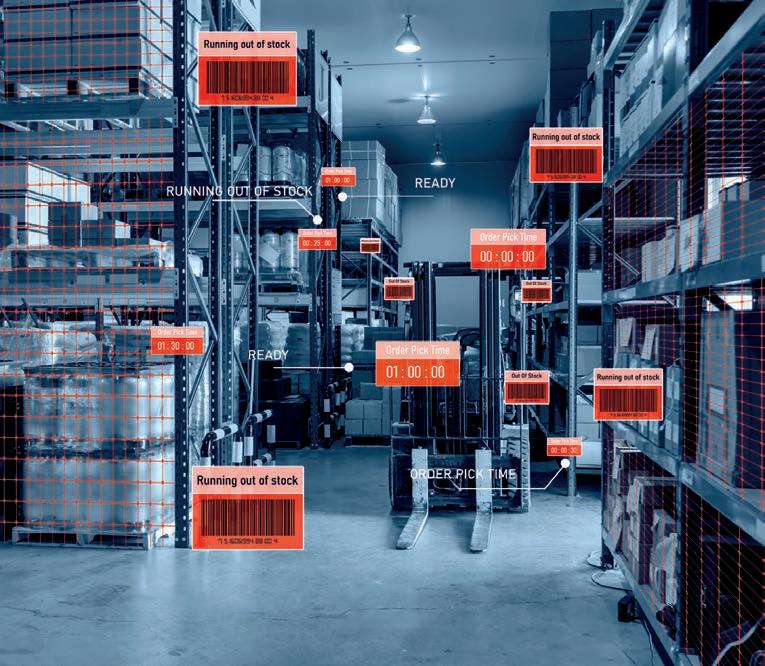
“The digital twin along with the ‘what-if’ scenarios help businesses find answers to trade-off problems by looking at impacts and optimising across the end-to-end supply chain from source to customer,” he says.
“Having access to costs on a realtime basis is important because it helps you make decisions. On top of this, a business’s physical supply chain can respond swiftly and in an agile manner to changing conditions.”
The digital twin operates in exactly the same way both during supply chain disruptions and in normal conditions.
In a state of disruption, the technology can quickly obtain the end-to-end implications while in normal conditions, it’s used in a similar way, but there’s more optimising and tweaking to ascertain value or opportunity rather than reacting to a specific event – although the process is similar – and this is all achieved by feeding the digital twins with real-time information, enabling decisions to be made live in real time.
To make all of this possible, it’s necessary for a supply chain to incorporate some important key elements.
DEVELOPING AN AGILE APPROACH WITH THE SEVEN ELEMENTS
A business’ operating model should connect vision and execution through an end-to-end supply chain covering seven key elements:
1. Organisational design
2. Processes
3. People & capabilities
4. Performance measures
5. Governance & reporting
6. Systems & technology
7. Network infrastructure
Combining these elements provides a future state target operating model. Leveraging a digital foundation, the future operating model will effectively coordinate and control your supply chain activities unlocking efficiency benefits and enabling rapid, sense and respond capability driving operational agility.
“When all of these seven come together in a truly end-to-end operating model,” notes Chris, “you have an integrated way of working where you can coordinate and control the supply chain in a more efficient manner.”
Using digital twin technology can also help a company develop and strengthen its sales and business planning methods.
AUGMENTING S&OP PROCESSES THROUGH DIGITAL TWIN TECHNOLOGY
Augmenting your Sales & Operations Planning (S&OP) or Integrated Business Planning (IBP) process with the insights and optimised outputs of digital twin scenario modelling will highlight potential shortfalls allowing appropriate actions to be taken before they affect business results or customer service.
“Prepared and evaluated endto-end scenarios and options will focus the overall S&OP/IBP process, becoming an effective catalyst for collaboration across the business and providing essential information for decision making,” explains Henry.
“It’s no longer companies that compete, but it’s the supply chains in which they operate. That’s what this optimisation is about. It’s not from ‘me to you’ – it’s the optimisation of the end-to-end supply chain.
“We’re seeing the move from episodic design to continuous optimisation. From this perspective, there are mergers and acquisitions, de-mergers, and there are shocks that are going to take place. We can show the impacts of when a disruption occurs, where it’s felt and what action needs to be taken to remedy it.” ■
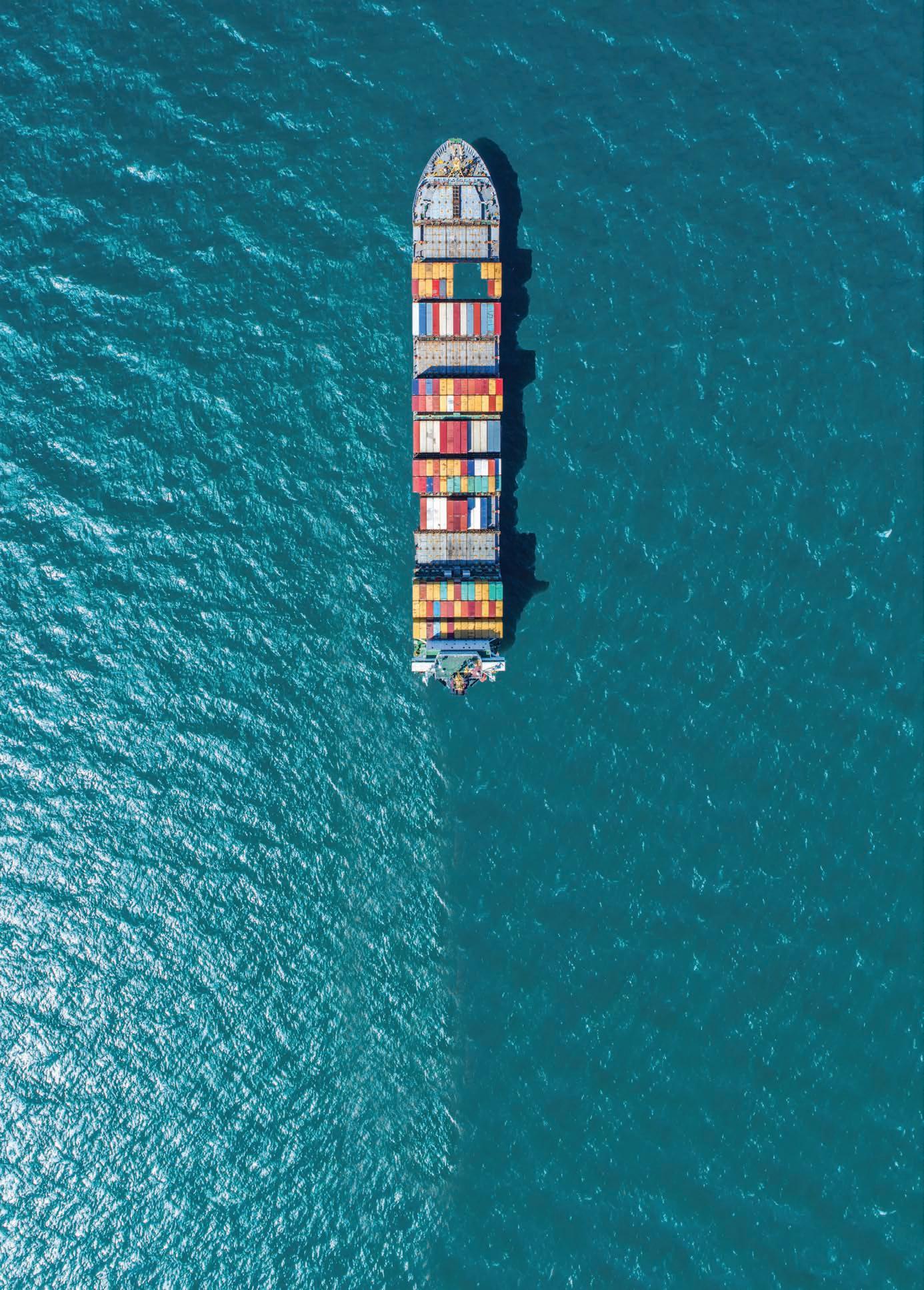
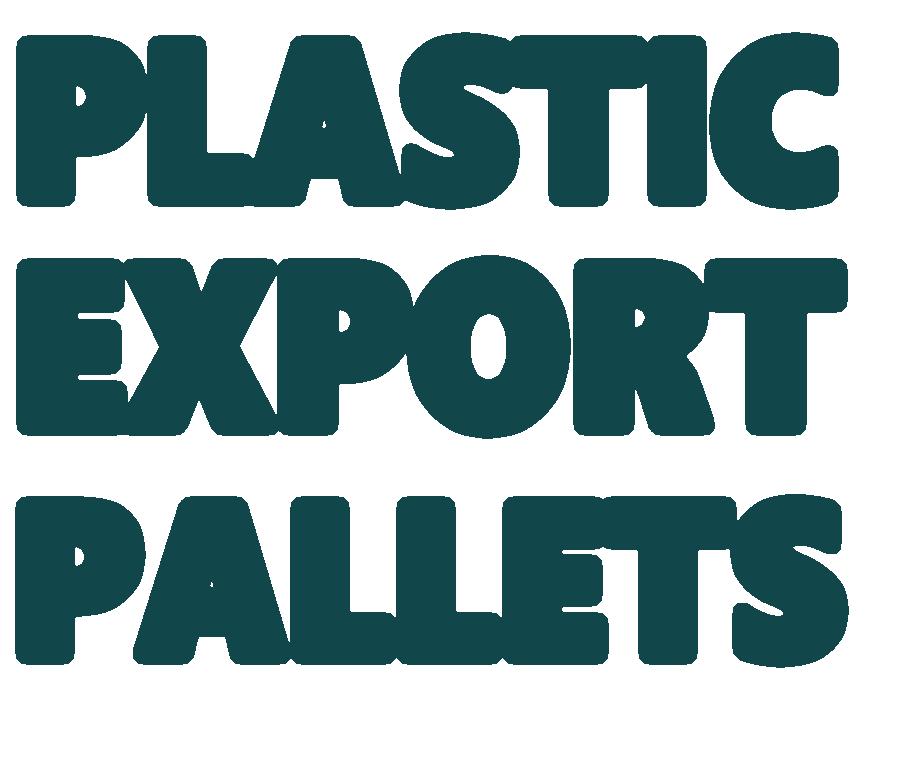
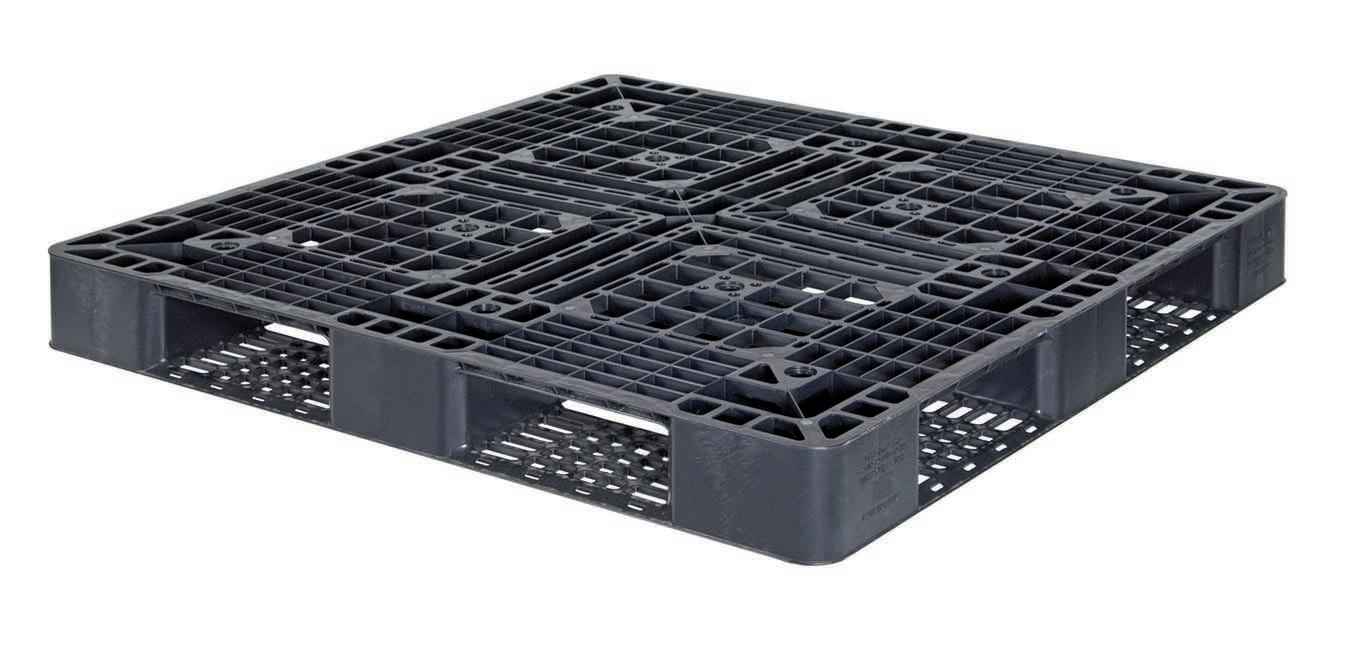

KÖRBER ON TRENDS AND PROSPECTS
Anthony Beavis, Managing Director ANZ at Körber Supply Chain Software, discusses what customers are demanding in 2023, and the trends to focus on.

After two to three years in “survival mode” in wake of the pandemic, “many companies are putting forward tenders” and “looking to the future” in planning their supply chain operations, says Anthony Beavis, Managing Director ANZ, at Körber.

COVID-19 was a shock to the system that is still being absorbed, and its lessons learnt, says Anthony. The sudden transition to e-commerce, seemingly overnight, was one such shock – but there is still uncertainty about future projections regarding the size of e-commerce as a proportion of overall sales and what its stable resting place should be post-COVID.
“Using data from pre-COVID to ascertain the right ratio of e-commerce to other sales doesn’t work – but extrapolating data from the COVID years doesn’t work either,” Anthony says.
While reading and forecasting from such numbers is a challenging process, Anthony is confident that in general the industry has now caught its breath sufficiently to get out of “survival mode” and move towards a “flexible” forward planning strategy.
AUTOMATION NOW
A focal point of such flexible forward planning will be the proper use of
automation, of course.
“How can we build something that can scale when we have our next geopolitical issue – be it a war, a major or uncertain election, or a pandemic?” Anthony asks. “These large macroeconomic factors are tremendously important in a country the size of Australia.
The speed of automation implementation – from conception to integration – will be a criterion governing automation business decisions. As will be the ability to scale such automation processes to market fluctuations, and to move equipment if needs be.
“Larger ASRS [automated storage

and retrieval] or goods-to-person [G2P] systems are bolted to the ground,” he notes. “You can’t just move three kilometres of conveyor to a new site, so you’re somewhat stuck with it until you hit your return on investment.”
That’s why autonomous mobile robots – which Körber has deep experience deploying in a variety of contexts – offer some key benefits and advantages.
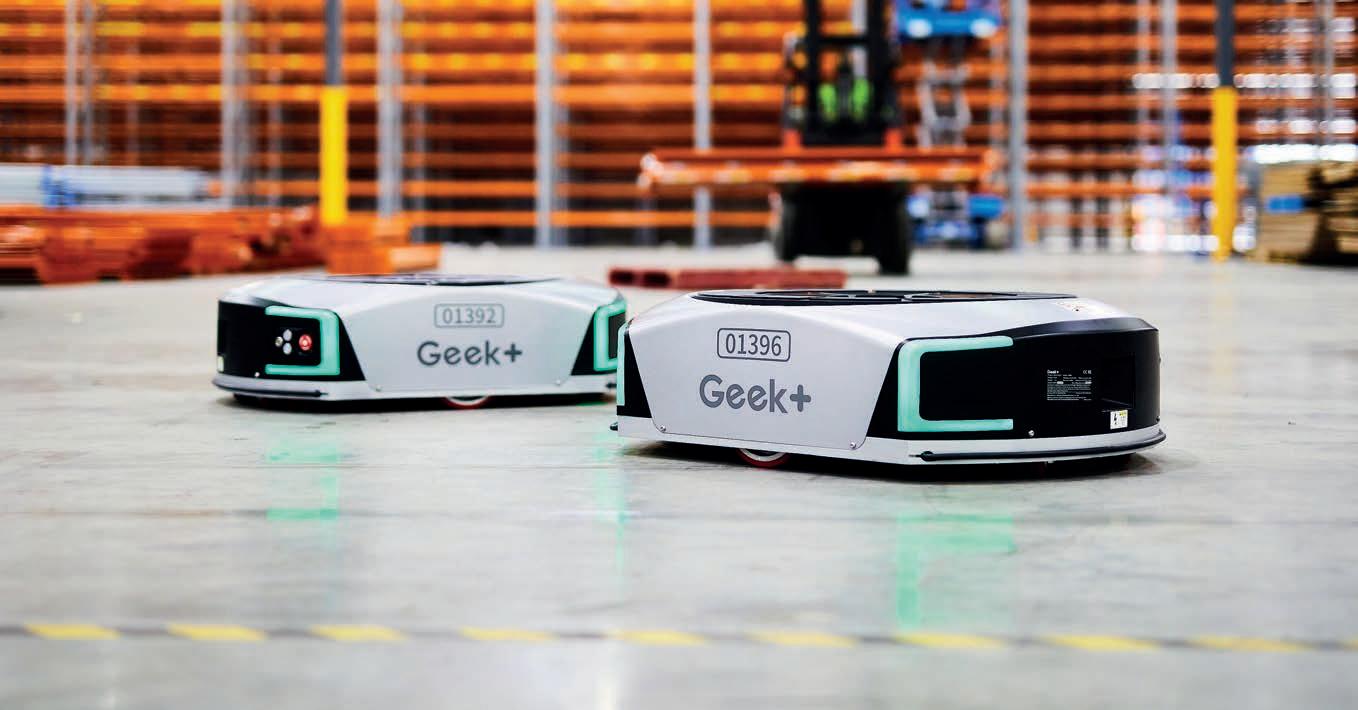
“Compared to an ASRS system, with AMRs you can change the grid off which they operate, add more robots, or even – if it comes down to it – move the robots to a new site.”
Being flexible with automation
will be vital in Australia in 2023 and beyond, as new pressures limit the flexibility that previously obtained in other areas.
“With a tight industrial property market, companies are having a harder time finding the space to accommodate a larger built-in G2P system, so I think the trends definitely favour AMRs as an automation opportunity.”
Indeed, as Anthony notes, inventory management before, during, and after COVID has presented problems, with a push towards just-in-case stock resulting in many businesses having significant overflow when things calmed down – oftentimes necessitating secondary sites to catch the overflow. “It can get a bit messy – so now I think a lot of companies are seeing how they can rationalize and better organize, take-in, and despatch their inventory. Automation helps here.”
THINK PARTNERSHIP, NOT TRANSACTION
As things continue to speed up, data and visibility of goods become increasingly important to every player in supply chain, Anthony says.
“Our customers want their systems to be interconnected and visible,” he says. “At Körber we can do a WMS system that’s connected to a freight forwarding system and other systems inside and outside the warehouse.
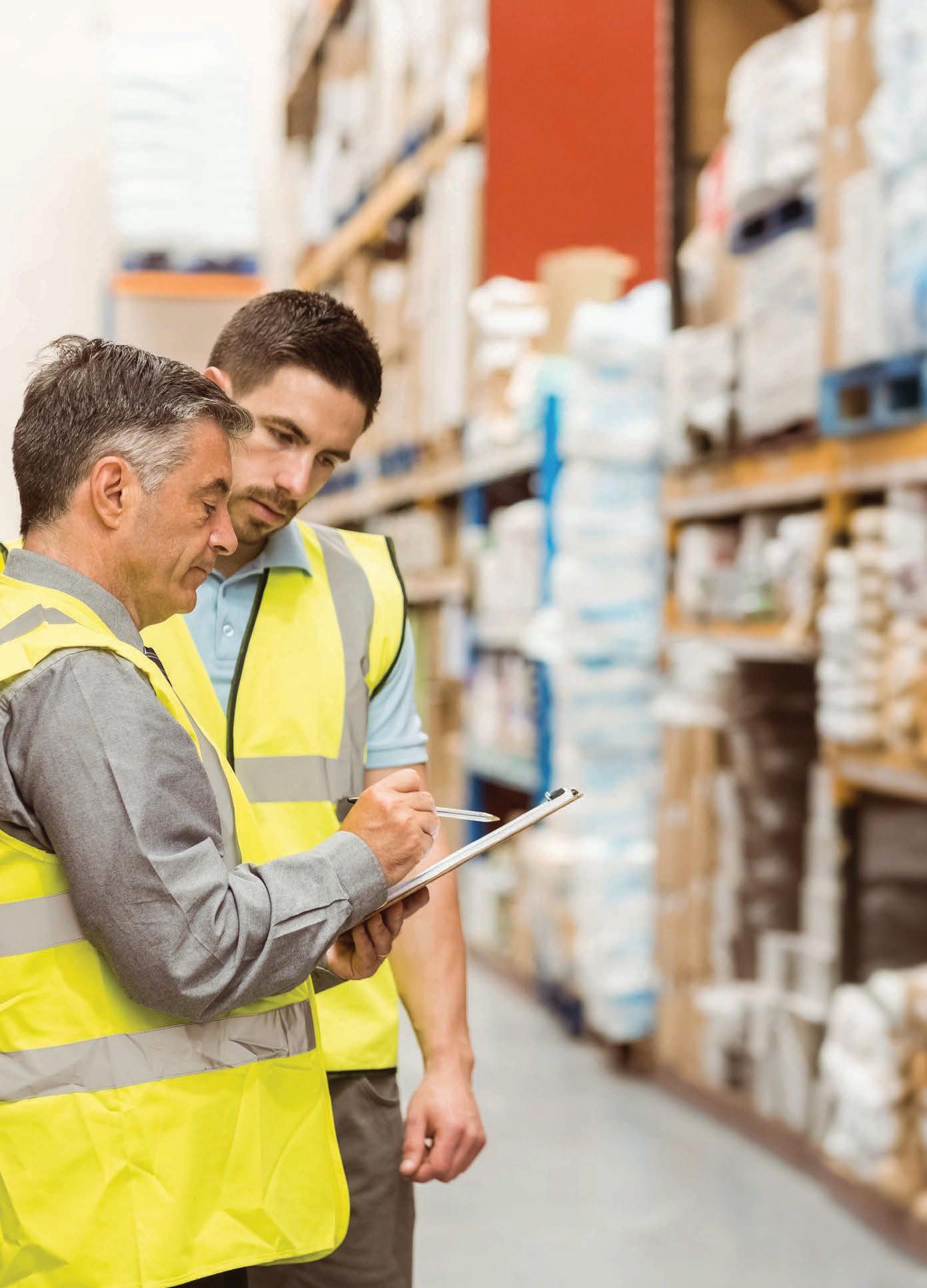
“I’ve heard from customers in the market that COVID made their relationships with suppliers either much stronger or much weaker, because it’s only when there’s a real test that you understand whether it’s a transactional relationship or a true partnership.
“There’s definitely a push for customers to find long term solutions rather than ad-hoc, one-off transactional purchases. Long term partners provide the security that –for better or for worse – we’re all in this together.”

STAYING SUSTAINABLE
A continuing focus in 2023 and beyond, says Anthony, will be the sustainability push.
“Consumers are really driving a greater focus on sustainability and
circular supply chains,” he says. “One of our major retail partners, Officeworks, recently introduced a ‘greener choice’ option into many of their product ranges – with labels indicating ethical and sustainable sourcing. Their feedback has indicated that people are willing to pay a little bit more because they want to do the responsible thing by the environment. Such considerations will be pushed more and more into supply chain, I think.”
A strong program of automation together with good use of data, undergirded by long term partners to implement and provide support, are a boon to sustainability objectives.
“Visibility and reliable partners are indispensable from a sustainability viewpoint,” he says. “We’ve done a few jobs where we’ve included solar panels as part of an AMR implementation project. Take Officeworks, for example. They now have solar panels in their new Melbourne DC and they’re covering close to 80 per cent of their entire running costs for the whole DC – not just the robots – and achieved their goal of making a positive impact on the environment. Installing solar alongside intralogistics solutions like AMRs is a good way of diversifying energy sources and offsetting CO2 with clean power.”
BALANCED AND INTEGRATED SOLUTIONS
Anthony observes that there has
been a greater trend towards holistic, end-to-end solutions over attempts to solve one part of a problem in isolation.
“There’s been an increasing realization that you can break one thing while trying to fix another,” he says. “Take picking, for example. A customer might implement a voice picking solution that increases their pick rate by 30 per cent – but what if that only means the picking outpaces capacity to replenish stocks? You’ll have people picking faster but then go to pick another SKU and it’s not there.
“Part of our message has been to say, ‘Okay, you’re picking faster, so now you don’t need to work as many shifts, and you can reallocate that labour towards replenishment.
“That’s one of the biggest takeaways we saw in 2022 and expect to continue in 2023 – a broader view from our customers on what they’re doing and the consequences of one process for other processes. No longer are customers saying, ‘I need some RF guns, so let’s just put them in.’ Instead Körber and our customers are asking questions like, ‘Okay, but what about either side of that solution? We’ve got all these other systems, so how are we going to interface it?’ We’re seeing a slimming down of some of the smaller siloed solutions and people looking more towards an endto-end perspective.” ■

ONLINE PET STORE USES TMHA RELIABILITY TO BUILD QLD BUSINESS
Budget Pet Products goes from strength to strength with the help of Toyota forklifts.
An online pet retailer based in South East Queensland has grown its business selling a broad range of affordable pet products, using the help of Toyota Material Handling Australia (TMHA) Toyota forklifts to make the most of its operations.
Budget Pet Products, based in Molendinar, started out selling pet products on eBay in 2009, with directors Karla Vandepol and Michael Chen starting out by running the operation from a garage.
Since then, Budget Pet Products has grown to a team of more than 120
employees and multiple warehouse locations, providing affordable products to pet owners around the country.
For the past four years Budget Pet Products has been a proud partner of TMHA, with Budget Pet Products reaching out to Toyota following dissatisfaction with its previous forklift supplier.
As well as providing excellent service with a focus on product reliability and durability, TMHA has assisted Budget Pet Products with its growth from a handful of employees to the nationwide
operation it is today.
Budget Pet Products warehouse manager Cheryl Norvock says TMHA had proven to be an excellent partner through its growth period.
“They have made serving and providing parts so easy,” Cheryl says. “Overall, the service has been great. One key difference is that TMHA has always partnered with us to help solve our growing pains.”
Starting out with a single 2.5tonne Toyota forklift, Budget Pet Products now proudly owns a mix of forklifts, order pickers and high lift pallet trucks.

Cheryl says the outstanding durability and reliability of the Toyota forklifts were standout factors, a sentiment echoed by TMHA area sales manager Chris Powell, who has worked closely with Budget Pet Products throughout their working relationship.
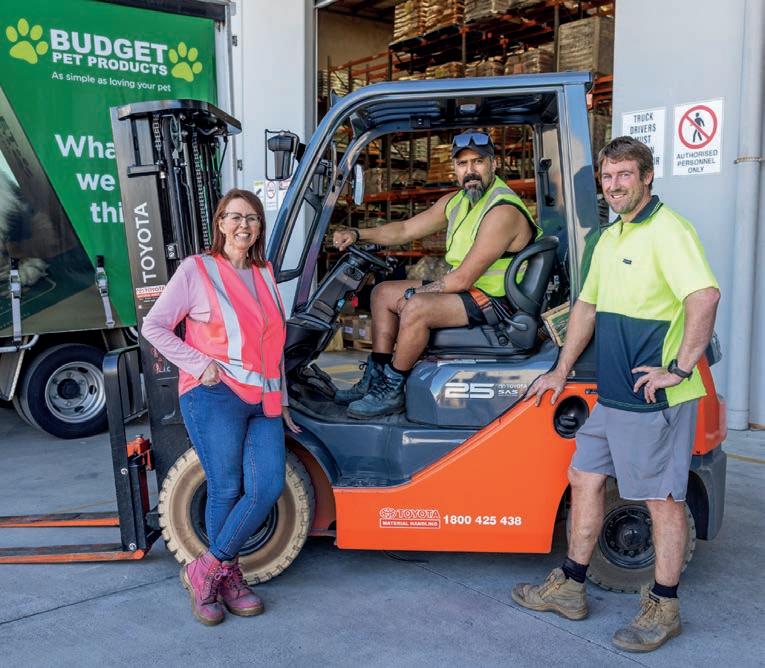
“They know what they’re buying,” Chris says. “TMHA’s value for money, it’s always up there and you get what you pay for.
“The value equation over the life of the forklift combined with our service expertise makes TMHA a very attractive prospect.”
Excellent reliability has led to hassle-free servicing for Budget Pet Products.
“We’ve found the ideal balance of machinery features and service offering with TMHA,” Cheryl says. “Our business is 24/7 with very little downtime – a machine with good features is nothing without the parts and service to back it up, and vice versa.”
“We’ve have had various machinery over the last 13 years and find the combination of reliable Toyota forklift features and great service to be superior all-round offering.”
Any relationship between companies is only as strong as its people, and both Budget Pet Products and TMHA are quick to sing each other’s praises, with Cheryl calling the working relationship “excellent”.
“We couldn’t be happier with the sales and service team,” she says.
Chris was quick to return the praise.
“In terms of customers
they’re always easy to deal with, negotiations are always simple and smooth,” he says. Overall they’re a great customer to have.”
When asked whether Budget Pet Products would recommend TMHA to others in the industry, Cheryl says that Toyota forklifts stood head and shoulders above its competitors in the market.

“We’ve have had various machinery over the last 13 years and find the combination of reliable Toyota features and great service to be a superior all-round offering,” she says.
“That’s an easy recommendation to make – performance, durability, service, all of it. They have a superior service and product offering than their competitors.”
Since its inception in 2009, Budget Pet Products has steadily grown its business by offering affordable products for a wide range of pets, from dogs and cats, to birds, fish, reptiles, and horses.
It has amassed more than 350,000 customers and looks to continue to grow its burgeoning business. ■
For more freecall 1800 425 438 or visit toyotamaterialhandling.com.au
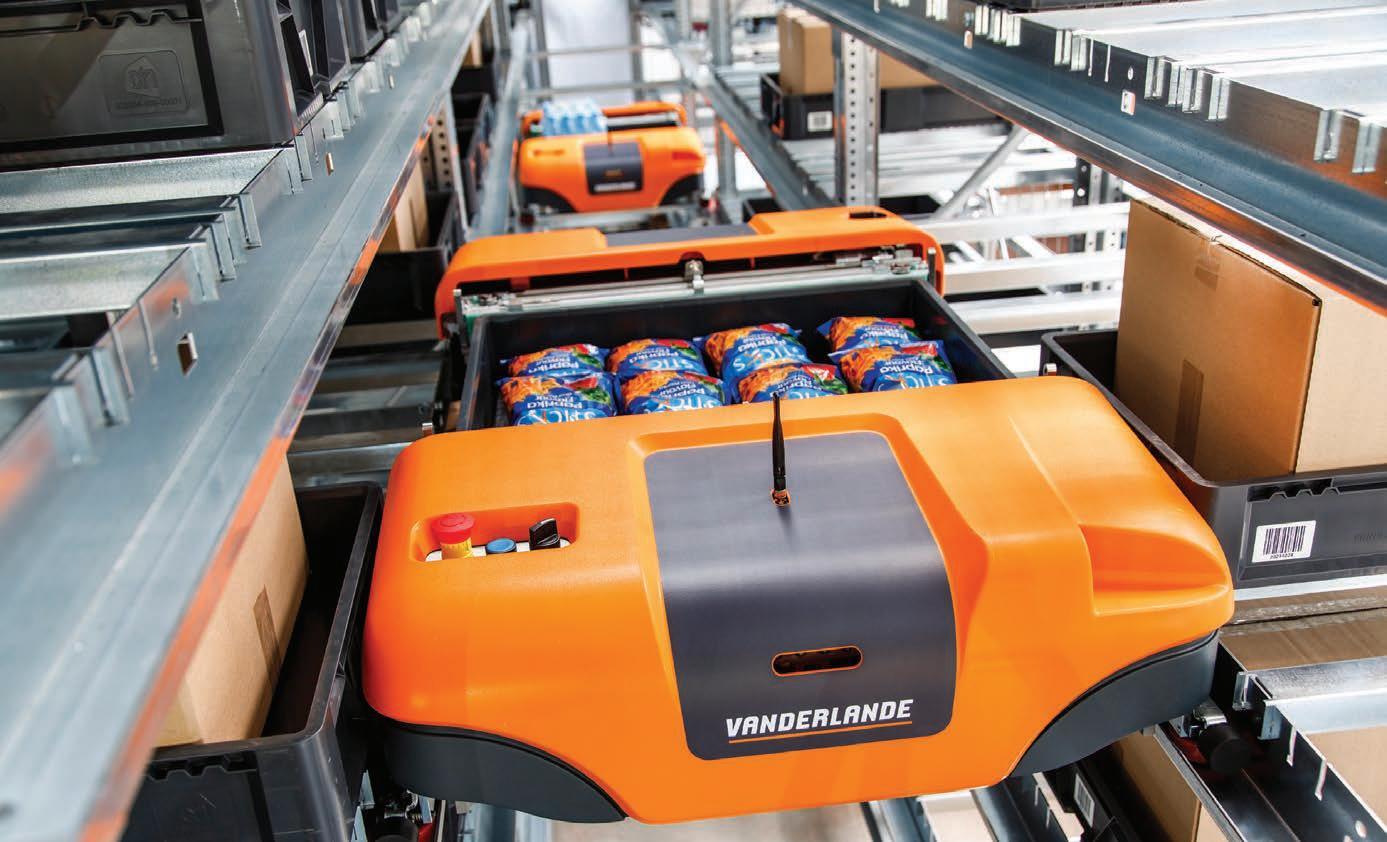

FUZZY LOGX MERGES WITH ARGON & CO
Fuzzy LogX and Argon & Co reveal to MHD the companies have merged.
“In the world of supply chain, manufacturing, and general logistics consulting, there are generalists and there are specialists –at Fuzzy LogX we are specialists, but over the course of putting together this new merger between Fuzzy LogX and Argon & Co, we’ve learnt so much from the greater generalist perspective of Argon,” says Jeff Triantafilo, Systems & DC Design.
In January, Fuzzy LogX and Argon & Co made public that the two consulting leaders were merging, in a move that will amplify the capabilities of each company.
They were in talks about a possible merger and acquisition back in 2019 and discovered they both had the same clients and were working on the same projects but were dealing with different aspects of them.
While Argon & Co focuses on supply chain, operations, and manufacturing, Fuzzy LogX primarily focuses on intralogistics – a key component which Bas Schilders, Principal Consultant at Fuzzy LogX says will add tremendous value to Argon & Co’s repertoire.

“When we announced the merger to
our clients, the first thing they asked was: ‘What’s going to change for me?’,” he says. “For our clients, nothing will change – they’ll still deal with the same people, the same teams – this is a merger, not an acquisition. Now, whenever a client presents a problem we previously weren’t able to solve, we can collaborate with our Argon & Co peers to produce a solution.”
COLLABORATING TO SERVICE CUSTOMERS
For Jeff, the merger presents an opportunity for the two companies to “cross-pollinate” ideas and expand the reach of each respective unit into hitherto unexplored areas.
“We were gradually doing more, and this opportunity with Argon & Co is letting us grow in what is an increasingly competitive market,” he says.
“We’re among like-minded professionals with great experience that can help us take our business to the next level and add capability to our offering. We share the same culture, the same values.”
Fuzzy LogX is by now a byword
for excellence in warehousing and automation, and everything that happens inside the fence line – although its clients’ needs don’t stop there.
“Our customers now get access to what Argon has to offer,” says Bas. “It’s a chance for our employees to grow outside of the four walls of warehousing and intralogistics.”
“We knew we were going to have Fuzzy join us three years ago,” Paul Eastwood, Managing Partner, Argon & Co, says. “We were just waiting for the right time and opportunity to bring it together.”
Paul explains from Argon’s perspective the merger deepens the understanding of what goes on inside the fence line in warehousing – including automation and technology, but also optimising people-centred solutions.
“This coming together adds a lot of value for our clients, our teams, and business offering,” David Bissett, Partner, Argon & Co, says. “It’s a compelling offering in the market when you compare what our combined forces offer compared to competitors in the field – the client can now choose one provider rather than two or three, and I

think that’s become an easier decision and selling proposition for us.”
“This is just the next evolution,” notes Paul. “It’s being able to offer deep expertise end to end and building an entire logistics capability that we think is the best in Australia. This is why we’ve merged with Fuzzy.”
UTILISING SOLUTIONS AND TECHNOLOGY
Argon & Co and Fuzzy LogX share the same values and work culture with their core pillars of independence, value adding, and a personalised, relationships-focus. “We still only ever have our clients’ best interests at heart,” says Jeff. “Nothing’s blurring our vision. We’re always looking to add value and create real relationships with our clients.”
Argon & Co’s manufacturing background is already producing a lot of learnings for Fuzzy LogX as it finds out more about process improvement and optimisation which can be applied to warehousing.
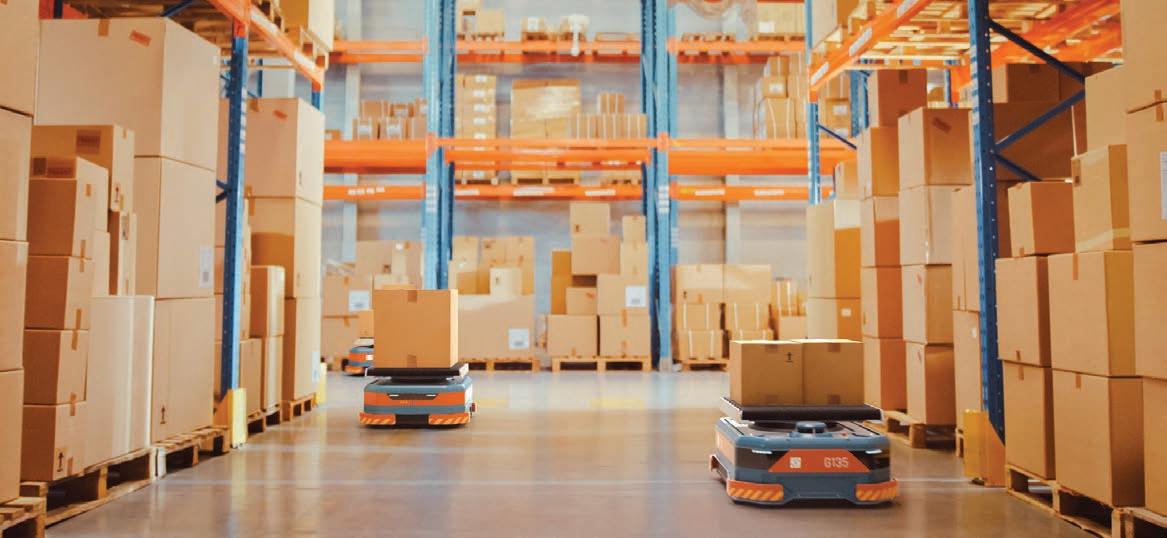
For example, Argon & Co’s digital twin technology infrastructure is now available in-house to the Fuzzy LogX team – something which Fuzzy LogX didn’t have at its disposal before the merger.
“This merger into one powerhouse consultancy helps us leverage this digital twin capability globally, so we see this as strategic, not just from an ANZ angle, but from a global perspective,” notes Paul.
Jeff adds that the global capability
goes beyond any single offering; rather the complementary skillsets of Argon & Co and Fuzzy LogX will optimise each other.
FUZZY GOES GLOBAL
The merger doesn’t only encompass the ANZ region. The two companies have pockets of capability overseas in the US, India, and the UK with Fuzzy LogX now having broader access to supply chain and manufacturing both locally and globally.
“Argon has a great background in manufacturing, and we’re giddy with excitement to take the capabilities developed in manufacturing by Argon and transfer them into intralogistics and warehousing contexts,” Jeff says.
“Fuzzy has always had an engineering mindset, and Argon’s talents in manufacturing and broader supply chain – to speak nothing of their range of contacts – allows us to take our engineering-based warehouse design mindset to the next level globally.”
Bas returns to Jeff’s theme of the generalist and the specialist, stating that with the combined powers of Argon & Co and Fuzzy LogX, generalist and specialist perspectives are now fully available under one roof.
“There aren’t many consultancy companies around that provide the level of detail that Fuzzy LogX does for customers,” Bas explains. “We take designing and implementing a warehouse. We’ll sit with the nuts and bolts and go through log files and ensure everything works.
“Many consultants will stick to the upper level of detail and won’t get into the nitty gritty. This is what we bring to Argon.”
STRENGTHENING THE ENTREPRENEURIAL SPIRIT
With Bas and Jeff, two more entrepreneurs are joining the Argon & Co family.
Paul says the business has grown on the back of entrepreneurial spirit and people are thinking about matters the same way and challenging each other.
“I think the business Bas and Jeff have built and their team and culture is phenomenal,” he adds. “We’ll learn from them as they bring into the Argon & Co world a new dimension.”
“It’s always been about changing the world one warehouse at a time,” Jeff says. “Now we can change the world on a bigger scale: we’re going to change the world one full supply chain at a time. It’s taking us to the next level and maximum value. We’ve found a bigger lever now to support our clients and change the world.”
“In the end,” says Paul, “we put the businesses together because we want to collaborate and to simply do some really cool stuff. The capabilities will sell themselves on the strengthened abilities of what we can do in the market and the calibre of the people we’ve got – with now more than 120 employees in ANZ.
“We’ll continue to do great things, and everything else will fall into place – for Argon, for Fuzzy, and for our customers.” ■
→L easing & Sales
→I nvestment Sales
→ Development Expertise





→A sset & Property Management






WI-FI: BACKBONE OF THE MODERN WAREHOUSE
updated, which is another hit to worker productivity.
As consumer and customers’ demands have escalated over recent years, so too has the pressure on supply chains to invest in systems and technologies that deliver increased efficiency, speed, accuracy and visibility of products, orders and customer information. Manual systems are no longer fit for purpose in keeping pace with the requirements of the market in Australia today and in the future. The technologies and systems now standard in warehouses rely on a stable internet connection and many are mobile technologies that must have a reliable Wi-Fi network to connect to.
Many Australian businesses, though, focus on the advanced technologies and systems they are integrating when upgrading or moving into a new site and brush over the specifics of what is required of a wireless network in the warehouse. It’s something they
know they need by default, but it’s not something they often spend a lot of time assessing.
If warehouse operators get their Wi-Fi wrong, however, and have constant black spots or network congestion that cut or slow connectivity between workers, mobile technologies and the warehouse’s centralised software system, the consequences are costly. Most workers on the warehouse floor rely on a Wi-Fi connection and if there’s an outage or slow-down then that worker offers low to zero productivity or is forced to switch back to old manual processes that are slow, highly inaccurate and lead to duplication in having to later update system information. Additionally, if there is not a reliable Wi-Fi connection, rather than their device being remotely tracked, accessed, and updated, workers need to physically take the device to IT to be
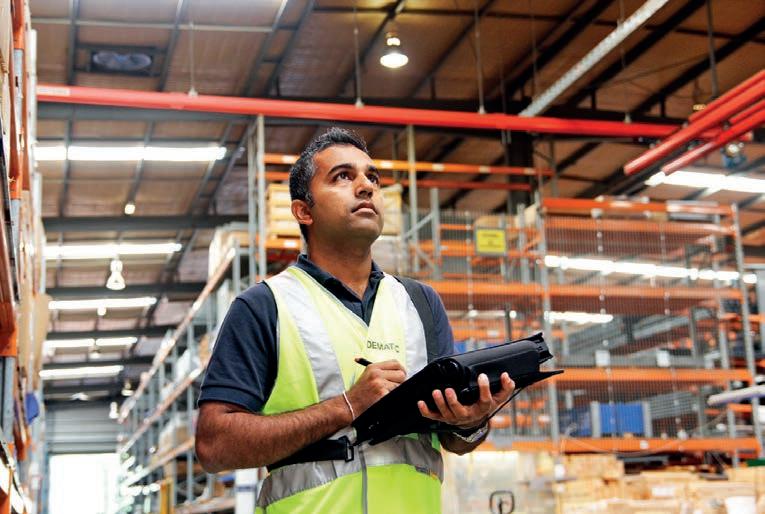
Productivity loss is something that warehouses cannot afford with the current high demands of the supply chain, yet that’s what will happen if a worker’s Radio Frequency (RF) terminal, voice headset, vehicle terminal or mobile printer cannot connect to the warehouse management system (WMS). This loss of worker productivity not only means product fulfilment is halted or slowed and orders aren’t getting to customers, stores or consumers on time – which has dire consequences for customer service - but it also means workers are getting frustrated with and losing faith in the technologies they are tasked with using on a daily basis, and with labour currently in high demand but short supply this risks high employee turnover or staff shortages. Another major cost to the business is not receiving a good return on investment (ROI) for all the technology endpoints that were predominantly acquired to achieve productivity gains in the first place.
So, what are the unique considerations for Wi-Fi installation in a warehouse and how can Wi-Fi be optimised and secured in this unique environment?
UNIQUE WAREHOUSE WI-FI CONSIDERATIONS
Setting up a wireless network in an office environment is one of the most common commercial Wi-Fi deployments. Yet, the wireless network needs and setup of an office environment is completely different to what is needed within a warehouse environment. That’s because an office environment is often much more static
Wi-Fi is essential to the functioning of modern warehouses, but it must be tailored to unique environments, says Lee Koutsos, Director of Real Time Logistics at Dematic.Properly functioning warehouse Wi-Fi is essential to reach full productivity potential.
than a warehouse environment; a warehouse is more dynamic and has much more movement of workers and the technologies they use to perform their roles, as well as products.
Many warehouse operators, though, find themselves setting up their network through external IT professionals or in-house IT departments who often have little experience in setting up Wi-Fi in an industrial environment such as a warehouse. They quickly find that their Wi-Fi is not optimised for the demands of the warehouse and often need to call in more specialised support to reconfigure the network for the unique attributes of their facility.
Some of the unique features of a warehouse that impact on the design and setup of Wi-Fi include:
Racking and Product Considerations: What are the dimensions of the racking and what material is it made of? Different types of materials used in the warehouse can cause varying levels of Wi-Fi signal interference, so it’s important to look closely. Also, has the Wi-Fi been designed for the current storage levels or a fully stocked warehouse, as fluctuations are likely to happen in future?
Endpoints: What are the devices that will need to connect to the Wi-Fi in the warehouse – RF devices, voice picking devices, printers, vehicle mounted terminals, smartphones, AGVs? How many will be used at peak and in which specific areas? This will determine the number of access points and Wi-Fi signal strength needed in different areas of the warehouse.
Interference: Is there a potential for interference to the Wi-Fi connection from a facility’s existing outdoor Wi-Fi connections? Should certain warehouse devices be locked to one band to not interfere with other connections and cause dropouts? Or are there nearby industrial sites that are heavy electricity users, causing an electro-magnetic field that is impacting the Wi-Fi?
Warehouse Environment: Many warehouses have a mixture of environments – ambient, chilled, frozen etc. Issues such as condensation, operating below freezing point and reflection off metal cool rooms need to
be taken into consideration.
HOW TO OPTIMISE WAREHOUSE WI-FI
An off-the-shelf or cookie cutter approach to warehouse Wi-Fi is rarely going to deliver a good result. Not only do warehouses have different factors across the board to consider, but each individual facility will have its own unique characteristics.
The best way to do this is for a business to partner with a warehouse IT specialist who has the specialist engineering expertise and will put the time into a detailed site survey, as well as run a simulation of the recommended network design. This will help to determine the best Wi-Fi installation for the current warehouse environment, in order to guarantee the network is performing at its optimum level. Then following installation, a warehouse specialist will also thoroughly test and monitor the Wi-Fi and devices being used by workers on an ongoing basis to ensure it is fine-tuned to meet the needs of the facility.
It’s best to work with a warehouse specialist from the outset, when the Wi-Fi network is first integrated, otherwise there is a high likelihood of cost duplication from having to bring in a specialist at a later date to reconfigure and upgrade the network installed by a non-specialist. Site plans carried out and designed by best-inclass engineers, with many years spent developing specialised knowledge and experience in warehouse environments, offer the most cost-effective approach to Wi-Fi integration.
Furthermore, it’s not a case of setting the network up within the warehouse once. Warehouses are constantly evolving as new technologies are deployed, new racking and shelving is installed, different products and materials are stored and moving through the warehouse, or the warehouse building or systems are extended. That’s why regular site surveys are required to ensure Wi-Fi needs are reconfigured as the warehouse changes.
NETWORK SECURITY
Cyber threats are at an all-time high. Any time data is created, there is risk involved. This puts pressure on many industries, including the supply chain, to come up with solutions for
privacy and security, especially as the dependency on mobile devices and automation within supply chains grows.
Warehouse operators should invest in IT security that delivers multiple layers of security and encryption for Wi-Fi networks, and it is important to constantly update the security system to protect the business from any cyber threats. Ask yourself:
• When was the last time you updated your wireless access points?
• Are your access points still supported by the manufacturer?
• Does your Wi-Fi software include intrusion protection & detection and automatic threat mitigation?
If your system is out-of-date or under protected it will leave your business exposed. Your security system needs to be regularly assessed to identify any potential areas of weakness and ensure they are addressed early.
Wi-Fi management and security are crucial for the supply chain industry. Without it you leave your systems open to risks that could cause you extended downtime or stolen data if you do have a security breach.
MAKING WAREHOUSE WI-FI A PRIORITY
We all take Wi-Fi and data connectivity for granted in our daily lives as it’s largely invisible to us until it’s not working properly and the things we rely on to get through our day – our smartphone, apps, online calendar, emails, messaging, smart home devices like security, speaker etc. – suddenly stop working.
The warehouse is no different, except that the impact is reduced productivity for many workers rather than just a few people. The costs to the business can be huge in dollar value but also in reduced customer and worker satisfaction.
That’s why investing in optimal warehouse Wi-Fi networks is a priority. The same time, energy and specialist expertise that is put into designing the set-up, automation and technologies in a new or upgraded warehouse must also be given to Wi-Fi to ensure all warehouse investments are reaching their full productivity potential and delivering their true ROI. ■
For more information about optimising your warehouse Wi-Fi network contact: www. dematic.com/en-au
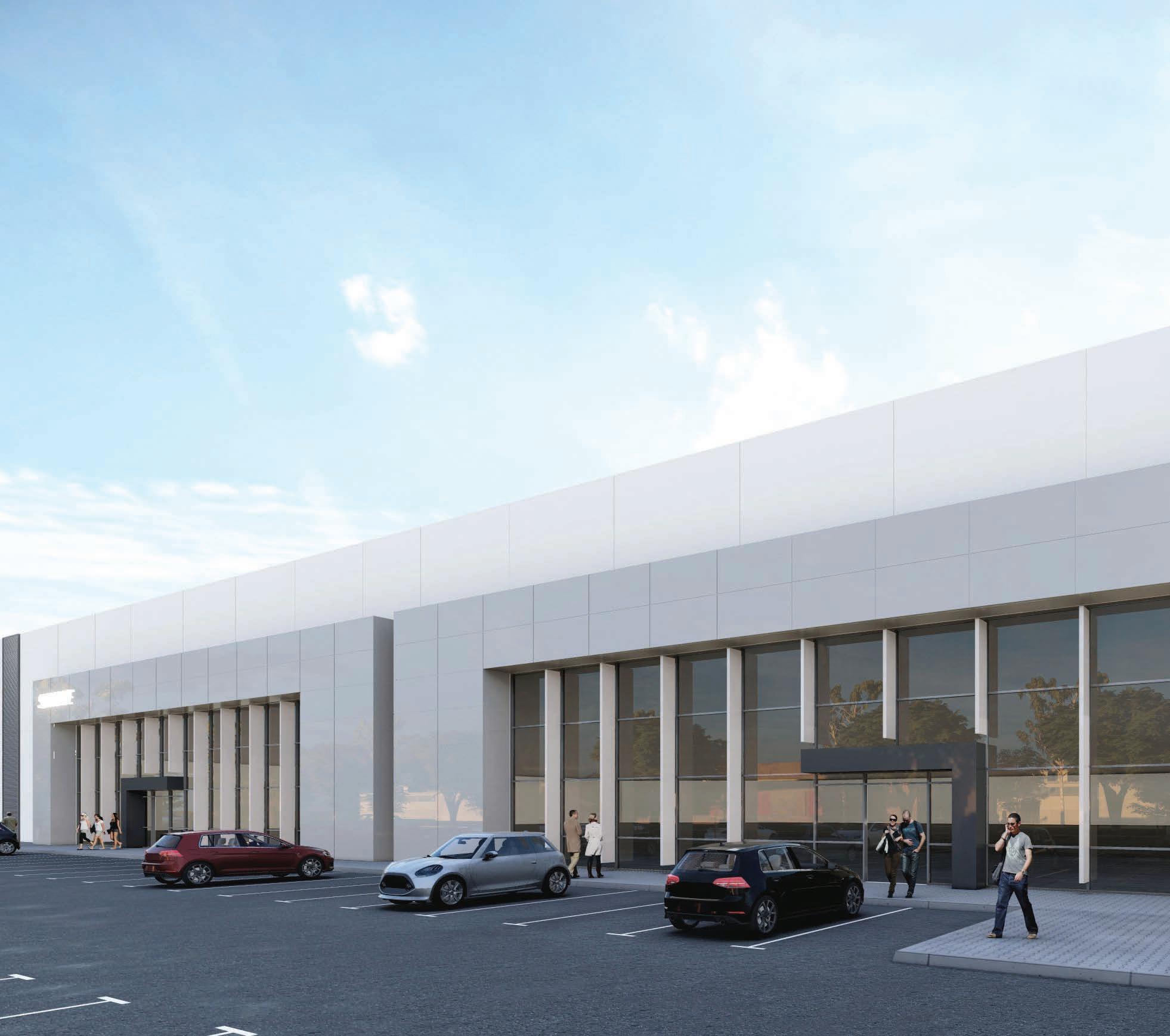


RETHINKING ROUTE OPTIMISATION
Businesses and their logistics operations now look nothing like the past.
The pandemic and resulting customer behaviour shifts have put traditional fleet-based distribution networks under tremendous pressure.
This has created huge volatility in order volume that shows no sign of slowing. The pandemic has forced companies to rethink how they plan and execute their fleets.
TRADITIONAL STATIC AND MASTER ROUTES ARE TOO RIGID
Rapid and frequent changes in customer demand caused by the COVID-19 pandemic and changing work patterns have shown that using static or master routes to plan deliveries is no longer the most effective strategy.
While the pandemic has made it abundantly clear that companies needed to be more agile, customer behaviour had already been chipping away at the static or master route model for years.
Customer expectations are increasing: they want more flexibility in ordering; their order sizes vary more; and there are more ‘off schedule orders’.
As if these demands weren’t enough to contend with, customers also expect greater visibility and a higher level of customer service.
The challenge is to balance these new demands while reducing costs.
Static and master routes are not able to keep up with the degree of change, resulting in higher fleet costs, uneven customer service, and
highly stressed manual efforts to address them.
COVID-19: FORCING COMPANIES TO RETHINK ROUTE PLANNING


The pandemic made it imperative that companies improve route planning performance. But what are the main approaches to doing so?
In our experience, the three main approaches to improving route planning performance are as follows:
1. Incremental improvements, which require frequent updates to static and master routes;
2. A fundamental switch to a dynamic route model; or
3. A hybrid approach – where key customers are served through master routes, while less strategically important orders are scheduled dynamically.
INCREMENTAL IMPROVEMENT
Incremental improvement to master routes is a more conservative approach (insofar as it involves less change management) and has
its own set of challenges such as how often to re-plan the routes to address changes in customer demand in a cost-effective way.
For many distribution companies, becoming more agile at planning has seemed an impossible task. The traditional process includes multiple steps that take too long, resulting in less frequent updates and ‘new’ routes that are often already outdated before their first use.
Moreover, without the proper tools, the quality of the output is heavily dependent on the individual’s judgment and critical thinking skills. This makes it difficult to scale and repeat in a consistent manner.
A more effective and repeatable approach is to use strategic route modelling to quickly create efficient static and master routes that meet customer service requirements.
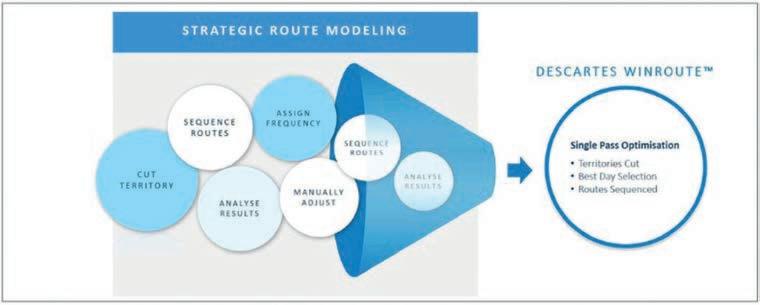
DYNAMIC ROUTE PLANNING
Dynamic route planning is the best approach to address today’s changing demand and provide the flexibility for tomorrow’s uncertainties.
Bestrane is renowned for delivering solutions to complex logistics problems. In wake of the pandemic and changing customer demands, the leading solutions provider explains to MHD the challenges and opportunities afforded by re-thinking route optimisation.Strategic Route Modeling.
With dynamic route planning, deliveries are optimised based on actual orders.
No longer constrained by fixed routes or territories, the fleet can be optimally deployed to best serve customers and operate at the lowest cost.
Despite the many benefits available some companies remain reluctant to move to a fully dynamic route planning model.
HYBRID ROUTE PLANNING
Hybrid route planning provides the benefits of being able to schedule your key customers with regular days, time(s) and/or drivers while optimising deliveries for other orders dynamically.
This approach is much more cost effective than static and master routes, and automatically adapts to changes in demand.
FLEXIBLE ROUTE PLANNING NEEDS NEXT GENERATION TECHNOLOGY
Route planning and optimisation software has changed dramatically over the past few years, and selecting the right solution is critical for transformation and success.
At Bestrane, we deploy different optimisers to solve different problems.
Strategic Route Modelling
Descartes route planning software uses a single pass approach to strategic route modelling, which is a quick and powerful way to reset distribution operations.
Descartes next generation optimisation technology further
speeds up the process and produces superior results versus traditional sales and territory planning solutions.
Traditional tools require multiple steps to get to an answer.
First, territories have to be cut, then delivery frequencies assigned and delivery days selected and –finally – sequence routes. In each step, an analysis must be completed to see if that step violated any conditions of the previous step. Also, frequency is a trial-and-error exercise.
With Descartes WinRoute™, all three steps occur in a single pass and the optimal frequency is an output, not an input. This approach is much faster and more effective, especially for distribution organisations that are trying to be more agile to react to today’s changing demand and need to pivot to new business models.
Hybrid Route Planning
With Descartes Route Planner™, distribution businesses can execute dynamic and hybrid planning in a single solution.
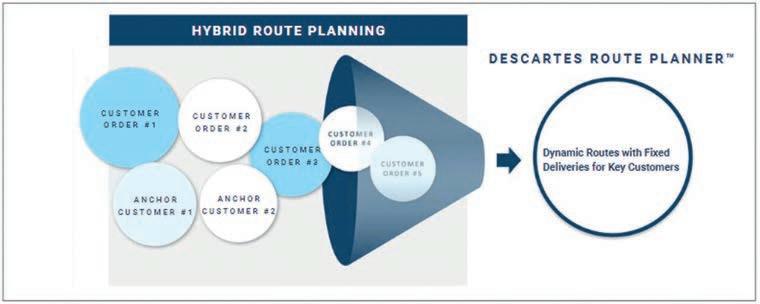
Descartes software has a unique approach to optimisation that allows there to be different customer types with attributes that the optimisation engine uses to best plan routes. The continuous optimisation capabilities delivered by the unique Background Optimiser (BGO) provides the ability to plan orders as they are booked.
Designed to operate in “lights out” mode, planners only need to review the results as they are being planned, affording more capacity
to focus on exceptions.
SEAMLESS INTEGRATION: DRIVER EXECUTION APPS AND CUSTOMER NOTIFICATIONS
Optimising deliveries is an important first step in reducing costs and improving efficiencies and customer experiences.
Further gains can be realised with fully integrated Descartes Mobile solutions, which enable tracking of planned vs. actual route performance, eliminate paper-based processes, empower drivers, and improve delivery and data accuracy. Proactively engaging with your customers throughout their delivery cycle using Bestrane’s fully integrated and powerful Customer Notification technologies completes the delivery experience.
THRIVING IN THE NEW NORMAL
Recent events have changed the way we think about supply chains, and companies are responding by transforming the way they do business.
Bestrane COO, Chris Mason, says: “Industry leading companies are taking the opportunity to recast their business and make strategic changes by asking themselves tough questions:
• Are we adjusting master routes fast enough to meet rapidly changing customer order volume and delivery locations?
• How much productivity will we gain with dynamic route planning?
• Can we use hybrid planning to address key customers and reduce transportation costs?
• How are we integrating our route planning, driver execution, and customer notification strategies to deliver on our customer service promise.”
Flexibility and productivity are key to thriving in the new normal. It’s essential that businesses ask themselves whether they’re doing enough. At Bestrane, we have the breadth and depth of expertise and experience to ensure the answer to that question is ‘Yes’. ■
Solutions from all sides.
No two logistics problems are alike. Neither are their answers. Each requires a point of view. A new angle. Together, we’ll look for an integrated solution, guided by data and insights. We’ll gain a deep understanding of your business, and consider every part of your commercial real estate strategy, so you can realise anything.
cbre.com.au

VANDERLANDE AUTOMATING BUSINESSES ACROSS ANZ
Vanderlande, the logistics process automation in warehousing company, has been in Australia for more than a decade, growing to more than 200 employees, and in this time it has provided its services to businesses across the whole country, from east to west coast and north to south.
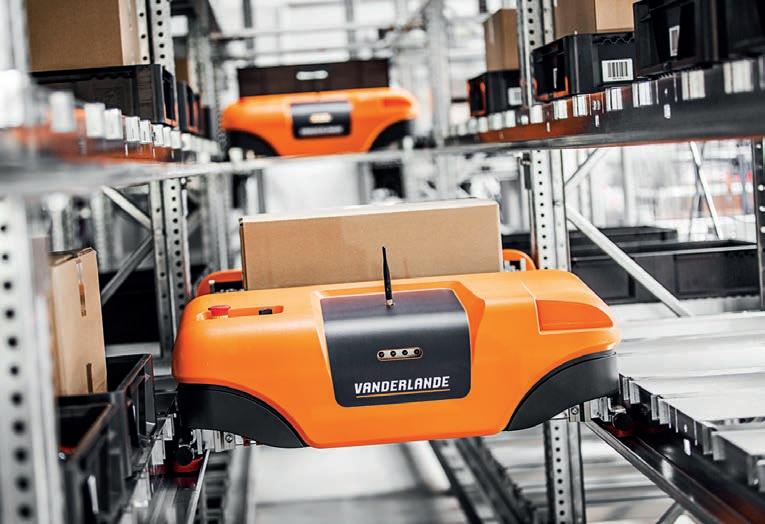
Jordan Thrupp joined Vanderlande’s extensive ANZ team in April 2022 as its Managing Director. During the short period he’s been working for the automation company, he’s overseen numerous projects, tackled serious challenges, and has helped clients implement high-end solutions so they can make their operations more productive, efficient, and reliable.
COOPERATING WITH PEERS FOR OUTCOMES
Jordan says he was immediately impressed by Vanderlande’s high capabilities and what it could deliver to its customers in terms of the size, scale, and complexity of its solutions.
The ANZ arm of the company has learned a lot over the past 10 years, and this is evident with respect to the depth of discussion and knowledge transfer it’s had with customers and potential clients – with whom it shares its learnings, notes Jordan.
“I’ve been struck by our ability to offer these capabilities to other customer profiles operating in other tiers of the market,” he explains. “We don’t only
cater for the needs of big customers and complex solutions, although that is what Vanderlande in Australia is renowned for.”
During his time working for the company, Jordan says the ANZ team has ensured it’s shown its capability and competence. By having a complete set of solutions, it can be a bigger player in other areas of the market across all project sizes.
Jordan has brought to Vanderlande significant experience leading local operations on behalf of some large multinational technology companies. He has worked not only across the ANZ region, but in the Asia Pacific (APAC) region too, where he’s led teams in B2B environments.
“I can quickly identify a situation, look at it internally and externally, along with the existing and potential future market dynamics and understand how we can best deliver our points of difference in value to the market, and manoeuvre an organisation quickly to respond to the situation – whatever it might be. I can then develop the right strategies to support that, and that’s been the focus of my first months here.”
Jordan brings to bear the full scope of Vanderlande’s international learnings to the APAC region, sharing learnings from overseas with the ANZ team, and vice versa.
“We’re a global business in more than 100 countries so whatever we see, observe, learn, or understand, we always share with our colleagues.”
MHD sat down with Jordan Thrupp, Managing Director of Vanderlande Australia and New Zealand (ANZ), to speak about what he’s accomplished and witnessed over the past 10 months, and what the Dutch enterprise strives to achieve in the ANZ region in 2023 and beyond.Vanderlande in Australia has been steadily growing over the past decade –now employing more than 200 people.
New Zealand is an important strategic focus for Vanderlande with many opportunities. “We can sometimes get lost in Australia and everything that it is, but New Zealand has the same attractive market dynamics in terms of macro factors.”
AUTOMATING SMES AND MULTINATIONALS
Vanderlande’s ANZ team has delivered its automation capabilities across the region, and this has included delivering significant solutions to Woolworths at its DC in Melbourne’s Dandenong and another that’s similar in size and scale for one of the grocery giant’s Sydneybased DCs.
For other large e-commerce clients, it’s provided solutions and helped quickly build facilities. This is one end of the spectrum, notes Jordan. The other consists of simpler solutions such as basic sortation systems operating in small-to-medium-sized enterprises (SMEs).
“These smaller solutions carry out effective and meaningful tasks that make a real difference, whether it’s related to the speed of delivering the product to customers, or reallocation of labour into other complex areas of their warehouse. The financial investments vary from simple, straightforward, and low risk to complicated and high risk.”
Vanderlande has been successful in securing three contracts and offering automation solutions and a variety of applications to its clients in the past 10 months. It has another couple of mature pursuits in progress.
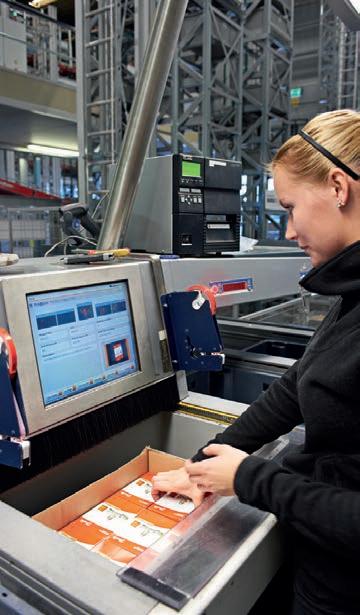
“From a strategic perspective, we’d like to broaden our incumbency geographically, so we’re not just locked into Sydney and Melbourne,” Jordan explains. “We look after the whole country. In the short time I’ve been here, I’ve seen opportunities in Adelaide, Perth, and Brisbane.”
CONTENDING WITH CHALLENGES
Despite the economic challenges both locally and abroad, Vanderlande had a good year in the ANZ region in 2022.
“The last few years, particularly since the COVID-19 pandemic started, we’ve seen volatility, uncertainty, complexity, and ambiguity come to life in both domestic and international contexts,
which is producing some serious challenges.
“The geopolitical situation we’re seeing is continuing to induce shocks around the world and in some locations more than others. And like everyone else, we’re not immune to these shocks. They affect things like raw material supply, labour, costs of freight – these are areas we’re paying close attention to, however, Vanderlande has acted early in managing these challenges, and that’s put us in an advantageous position compared to some others.”
Vanderlande’s global reach helps it to manage the variety of challenges it faces, including diversifying supply chains. The ANZ team received good feedback and communication loops from its overseas colleagues, helping it share its learnings and identify and communicate the trends it’s seen happening outside of Australia, adds Jordan.
“During this decade, we’ve built up a network that’s reliable and trusted, which is why we’ve been able to continue to work with a high level of certainty. We’re looking at our current and potential customers closely and getting a real sense of the broader economic conditions. We can give customers our schedules with a greater level of certainty.”
SEIZING OPPORTUNITIES AND GROWING CLIENT BASE
With this greater level of certainty, Vanderlande in 2023 is working with its clients on more long-term major projects. One of them is a regional DC in Moorebank, which will continue throughout the calendar year.
Jordan says, “I still continue to see opportunities for new customers, particularly those customers who are more mature in their contemplation of the business case as to whether they want to invest in automation or not. And I see those opportunities, again across the range of straightforward to highly complex.”
In addition to executing existing projects, Jordan notes the ANZ team will have an intense focus on engaging with the market so that it can reach potential clients and consultants with regards to their automation needs.
“I believe in the amazing potential that we have as an organisation. I’m very pleased to be on board with
the company. Its level of technical competence is second to none. Its ability to implement complicated solutions that deliver tangible productivity and efficiency improvements for our customers is obvious.
“It’s a great place for employees. It has a strong set of values that we live by, and you can feel that in the organisational culture. I think we can be an even more prominent player in the warehousing automation market across both Australia and New Zealand.”
Macro factors such as high-cost real estate, high consumer expectations, labour availability and scarcity, will continue to add credibility and weight to automation business cases.
“I want to be in the best possible position as an organisation to support potential clients in understanding what we can offer our customers, and I think we’re unique in that we don’t just offer products or solutions, we have an immense amount of knowledge and understanding that we’ve built as a company over a decade, and we can add value to customers’ projects, helping them along their journey.
“We have these opportunities ahead of us to grow and have a greater range of clients than we have today. We’ll see a renewed Vanderlande in 2023 and beyond, in terms of its focus, its activeness, and its presence in the market.” ■

BUILDING RESILIENCE TO DEAL WITH DISRUPTIONS
In this thought leadership piece, Paul Soong, Regional Director at e2open, explains how building a resilient supply chain can help businesses deal with both common and unprecedented disruptions including those caused by a volatile economy, cybersecurity breaches, and extreme weather events.
BUILDING A RESILIENT SUPPLY CHAIN TO WEATHER DISRUPTIVE TIMES
If businesses survived the barrage of supply chain obstacles over the last three years, they can overcome anything.
From extreme weather and natural disasters blocking access to resources, port or border congestion delaying transit, to panic buying artificially inflating demand, not forgetting the pandemic, to ongoing war and political unrests resulting in rising inflation and escalating costs, disruption is an understatement for what the supply chain industry is currently under.
A good example of this is the train derailment in New South Wales due to a period of bad weather and heavy rain. The derailment affected the supply chain of numerous companies that used the rail line from Brisbane to Sydney, as well as from Brisbane to Perth.
Now more than ever, the supply chain industry needs to re-evaluate and develop resilient strategies to keep up with the ever-growing complexities and challenges to stay on top. There a few factors that businesses should keep in mind as they plan for the year ahead.
1. Protectionist
trade policies and geopolitical posturing
This will continue to cause companies to shift their country sourcing practices triggering problems with labour, transportation, costs, and capacity. The new normal in global trade policy will continue to be highly unpredictable, which means supply chain leaders need to put in place proactive measures to keep supply
2023 will be the year of reinforcing strong systems, processes, and tech that will shelter companies from uncertainty.
chains safe or risk becoming a casualty.
As the prices of commodities continue to increase alongside the supply disruptions, it highlights that the protectionist trade policies have a massive impact on businesses and could pose a threat in the foreseeable future.
We are entering a new reality that is amid a bifurcation of the global system, therefore businesses need to stay prepared to face new challenges that stem from the changing geopolitical landscape.

2. Up-to-date international trade knowledge
As trade policies around the globe remain in flux, making it challenging to assess precisely how trade policy shifts impact businesses and products and how much supply chain reconfiguration is required both physically and financially, it is paramount to keep up with global international trade knowledge.
For example, China’s stringent COVID-19 rules and the food and energy shortages as a result of the Ukraine war has caused uncertainties on supply chains in the Indo-Pacific regions.
These new stressors placed on national and global supply chains have depicted that businesses will have to ‘strengthen resilience without undermining the benefits of rules-based international trade.’
When the elements of international trade governance are incorporated into the value chain, it helps businesses stay on track on other important policies that coincide with trade policies like geopolitical risks and environmental standards that need to be adhered to.
3. Understanding the impact of transportation-related factors
With greenhouse gas emissions and carbon taxes factoring heavily into ESG metrics, analysing, and reducing Scope 3 (extended value chain) emissions will remain a challenge.
It will be increasingly essential for companies (and their partners) to track and understand the impact of transportation-related factors –including emissions – on the overall supply chain to accurately report their carbon footprint, make smart tradeoffs to reduce it, and help ensure business continuity.
Businesses need to be mindful of all emissions driven by operations and especially ensure they are adhering to their corporate commitment about emissions.
One way to ensure business continuity is by understanding the demand of products and then plan strategies to secure those supplies, manufacture them efficiently and reliably move all the components and finished products to the market that saves time and costs in a carbon-effective way.
By anticipating the transportation demands early, businesses can utilise that extra time to secure low-carbon carriers and navigate away from potential delays.
4. Rising costs of storage space rental
Warehousing and industrial rents have increased by around 15 per cent year on year. New South Wales has hit new highs as businesses engage in a bidding war for scarce space, with rents reaching more than $200 per sqm in some well-located industrial precincts.
E-commerce, 3PLs, food manufacturers and other warehousedependent sectors are all competing for the same spaces, and landlords are naming their price. To reduce costs would mean looking into alternatives like automation of movement of inventory throughout.

5. Increase in cybersecurity risks
Cybersecurity and risk management have always been vital for the flow of any business. However, the current condition of the global supply chain makes it exceptionally vulnerable to severe damage from an attack more so than usual.
As supply chains have become more complex, digitised, and interdependent, disruptions to their IT infrastructures have threatened cascading impacts for affected companies, depending on how interconnected the relevant suppliers and businesses are.
While Optus was a good consumer
example, distribution hasn’t been immune with Toll having experienced multiple ransomware attacks for example. Organisations within the supply chain must take an active, focused-approach to cybersecurity to avoid crime-related delays, data breaches, and financial losses.
6. Rising fuel prices
With no end in sight to the war in Ukraine, fuel prices have increased and will continue to be unpredictable in 2023. This will partially be passed on to consumers, however carriers will bear the brunt of these costs and have to look for ways to reduce operational costs in other areas that technology may be able to assist with.
BUILDING A RESILIENT SUPPLY CHAIN
Having a holistic, end-to-end view of the supply chain provided by an end-to-end platform will become increasingly crucial, however companies will only be successful if they have a detailed plan and a vision of the challenges they are trying to solve such as reduced lead time and decreased operational costs.
Investing in technology to access near real-time data and connectivity to all the interdependent entities will be vital so that companies can identify challenges quickly and collaborate with partners to address them.

By implementing a digital control tower, businesses can connect to data systems and generate information on the supply chain to minimise impacts on delays.
2023 will be the year of reinforcing strong systems, processes, and tech that will shelter companies from uncertainty, helping them grow into new regions, expand customer bases, and drive sustainable operations. Staying cautious and alert to ongoing threats by being equipped with the right teams, strategy, valuable insights, and the most innovative and intuitive technology to minimise impact and mitigate costs, will give businesses the edge to build a resilient supply chain in an increasingly disruptive environment. ■
Paul Soong, Regional Director at





WHY RENT INDUSTRIAL CLEANING EQUIPMENT?
Conquest Equipment’s Chester Larsen discusses why renting cleaning equipment de-risks operations and reduces downtime – and the crucial steps companies can take to implement an effective cleaning solution.
Conquest Equipment is on a mission to reduce risks and downtime in warehouse operations, according to Chester Larsen, National Sales Manager at Conquest.

“Dust can be a major issue in warehouses, causing health problems for workers and settling on goods and storage infrastructure,” says Chester. “By regularly maintaining and managing warehouse floors, companies can avoid this build-up of dust and ensure a safe and presentable environment.”
However, the upfront cost of purchasing cleaning equipment can be a hurdle for some companies. That’s where Conquest’s rental options come in, providing a solution for companies facing cashflow issues while still addressing the need for effective cleaning. Conquest’s rental range has been bolstered with its new option to rent Avidbots’ automated cleaning robots, further making it easier for companies to keep their warehouses clean and safe without breaking the bank.
“One of the main challenges for companies is balancing the need for maintaining and managing their floors with the financial strain of a large initial capital investment or a limited annual budget,” Chester says. “Renting cleaning equipment from Conquest allows companies to address this issue by providing a flexible and quickly deployable solution.”
One of the key benefits of renting
cleaning equipment from Conquest is the flexibility it offers to companies. Whether a company is experiencing rapid growth or unexpected changes in its needs, it can quickly and easily adjust its equipment with rental options. This can be particularly useful when it comes to storage solutions, as companies may need to upsize or downsize their equipment in response to changes in their business.
Chester adds that the flexibility offered by opting for a rental option sweeps away obstacles internal to companies as well.
“Internal red tape and bureaucracy can be a major hindrance to companies seeking to invest in new cleaning equipment,” he says. “The approval process can be lengthy and involve decision makers at various levels, both locally and internationally. However, by using Conquest’s rental options, companies can overcome this issue as it allows them to access the equipment they need on a monthly fee basis, without the need for lengthy approval processes. This can help companies to quickly and easily respond to changes in their needs, whether it be for downsizing or upsizing, without being held back by internal bureaucracy.”
DE-RISKING EQUIPMENT DAMAGE
The risk of equipment damage is an important consideration for companies when it comes to renting cleaning equipment, says Chester.
With a shortage of skilled labour,
companies may be more likely to hire workers who are not as experienced and therefore more likely to cause damage to the equipment. This risk is especially significant for companies that own the equipment, as they are responsible for all maintenance and repair costs. By renting equipment through Conquest, the responsibility for scheduled maintenance sits with Conquest, and they put measures in place to support their customers to minimise the risk of damage by their operators. This risk mitigation comes through Conquest’ commitment to ongoing operator training throughout the life of the machine in combination with the Conquest QR system which allows customers to easily find and view operator training manuals and videos by simply scanning a QR code.
ENSURING RELIABILITY
“It’s important for businesses to find the right cleaning equipment supplier because they need a company that can provide reliable service and support,” Chester says. “Conquest Equipment offers a range of rental equipment options, as well as training videos and manuals accessible through QR code and a customer service hotline. Additionally, Conquest’s service technicians are full-time Conquest employees, not contracted third parties, which allows for better engagement and connection with
customers. This level of service and support is important for businesses to ensure that equipment is properly maintained, and any issues can be quickly addressed.”
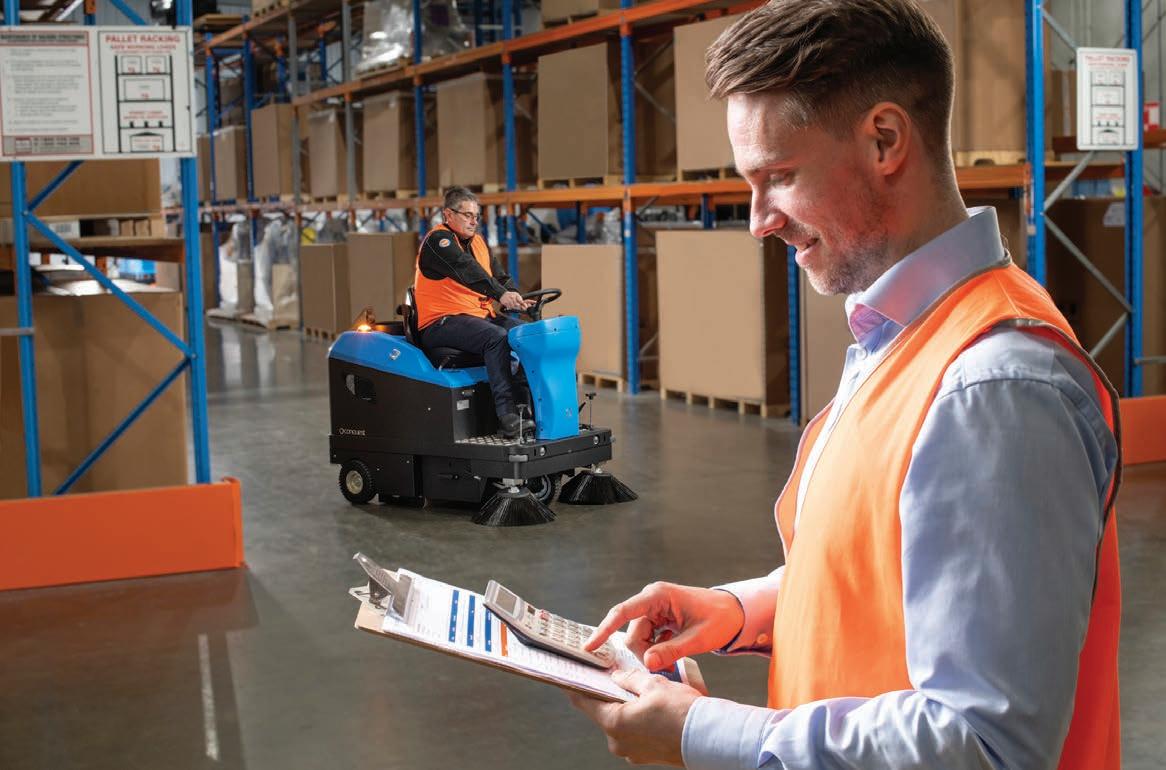
STEPS OF EFFECTIVE EQUIPMENT RENTAL
Conquest Equipment has a process for ensuring that businesses get the most out of their cleaning equipment rentals. A specially trained floor cleaning expert will conduct a thorough on-site needs assessment to make sure that the equipment is tailored to the specific needs of the business. Next, the rental terms are confirmed, ensuring the plan is bestsuited to the business needs. Conquest even go as far as to offer no-risk rental options, which are fully flexible to allow customers to make necessary adjustments to scale as their business needs change. Once the details have been confirmed, an onboarding specialist will train team members on the proper use of the equipment, to ensure that it is used safely and efficiently. And finally, Conquest ensure that the rental machine is maintained and serviced, to keep it

running smoothly and prevent any costly downtime.
These steps form part of a broader comprehensive eight-step program, the Intelligent Solutions Program (ISP), that Conquest developed to ensure customers choose the right cleaning solution the first time.
“Conquest Equipment’s Intelligent Solutions Program is designed to ensure that businesses find the right cleaning equipment for their needs,” Chester says. “The program begins with a thorough site assessment to determine the specific requirements of the job, followed by the selection of the appropriate machine. Demonstrations of the selected equipment are then provided to ensure that it meets the needs of the client.”
After the sale, Conquest continues to offer operator training, after sales support, and guaranteed service support to ensure that the client is satisfied for the life of the machine.
“By offering a comprehensive package of support and assistance, Conquest ensures that clients are fully satisfied with their equipment and that it performs to their expectations. ■
KEEPING INDUSTRIAL SITES CLEAN WITH GODFREYS
Choosing fit-for-purpose cleaning equipment that’s reliable and durable is important for businesses in the supply chain and logistics industry. Daniel Pisaniello, General Manager Commercial & Industrial Division at Godfreys AUS/ANZ, tells MHD why customers can rely on the Australian cleaning retailer’s products and services.
Godfreys Commercial supplies businesses in the industrial warehousing and DC space with fit-for-purpose cleaning equipment that is risk-reducing, eliminates downtime, and is reliable and efficient. This is why it encourages supply chain, logistics, and manufacturing companies to properly invest in these solutions.
It has a range of suitable products for customers to choose from, and ones which cater to businesses’ every need.
REDUCING OHS INCIDENTS
By focusing on Occupational, Health and Safety (OHS) in the workplace, a business can reduce accidents for staff and visitors. Slips, falls, trips and moving objects account for a high percentage of workplace incidents. Choosing and investing in the right equipment is essential for risk managing and can help businesses eliminate these risks.
“When operators have invested in the right machines fit for purpose to clean their floors, they can help boost morale because the employees’ working environment is safe and clean,” Daniel Pisaniello, General Manager Commercial & Industrial Division at Godfreys AUS/NZ, says. “It also means the operator is cleaning their facility more effectively because they’re using the appropriate machine for the job.”
The workplace will look and function better due to its state of cleanliness and will dramatically improve employees’ performances.
All of this can be achieved with less effort and consistent results.
CLEANING WITH THE COMAC C130
One of Godfreys’ experienced team members can help a client choose the suitable cleaning product from its variety of offerings. They can visit the site for free to conduct an evaluation, which includes establishing what equipment will be required to clean
the different types of floors and environments.
A site survey ensures the customer purchases the appropriate machine recommended by the Godfreys team member.
“In the logistics and warehousing sector, we have many machines that are fit-for-purpose for those large areas,” notes Daniel. “A small machine can’t be used in a large environment while a large machine
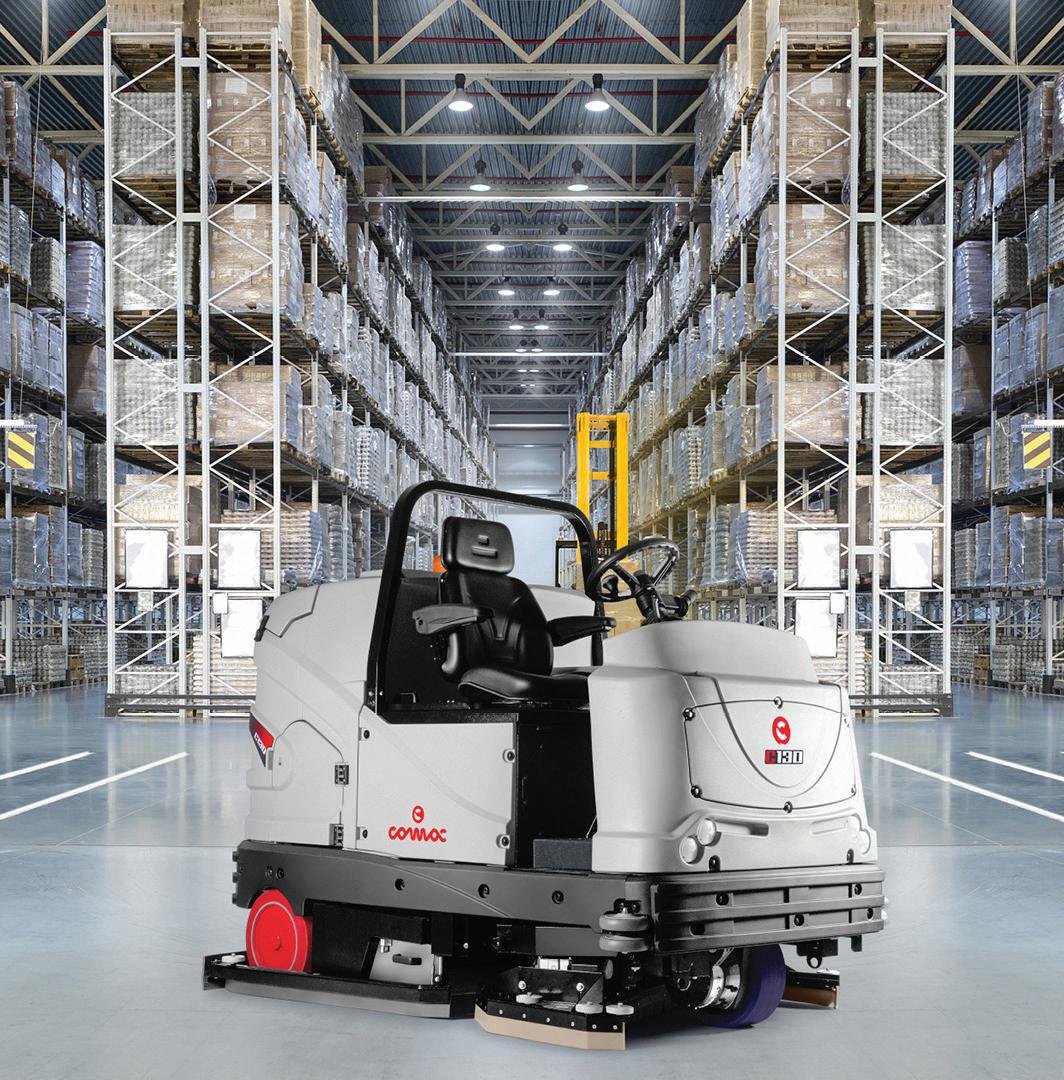
is ideal for those big logistics and warehousing sites. They can collect debris, remove dust, and scrub and dry the floor in the same motion.”
The Comac C130 scrubs and sweeps simultaneously and is designed to operate in logistics centres, warehouses, industrial facilities, airports, and carparks. Godfreys has three engine variants available to suit many requirements, including diesel, battery, and biofuel.
This product’s brush-head is equipped with four-disc brushes. It has a scrubbing path of more than one metre wide and can clean areas of up to or more than 25,000 sqm.
The cylindrical central brush is self-adjusting and is in constant contact with the floor regardless of the type of surface or degree of bristle wear. It collects small solid debris into a debris hopper. Another benefit of this model is it can remove skid marks caused by forklifts and trolleys.
When faced with heavy duty cleaning operations on stubborn dirt, the disc brush pressure can be increased to up to 180 kg. The machine can operate in line with the operational environment with three modes for the operator to choose from: Eco – designed to respect the environment; Standard – for regular cleaning; and Plus – to increase scrubbing power.
The battery version can operate for up to four and half hours while the biofuel option runs off LPG gas, which is the same system a forklift uses to operate in a warehouse. The third model can be powered by gas so it lasts longer and can clean larger spaces.
LOOKING AFTER THE EQUIPMENT
Godfreys aims to deliver a solution that gives its customers peace of mind, backed with a guarantee that when they invest, the product will meet their current and future needs.
Upon knowing the size and dimensions of the complex’s floorspace, Godfreys can determine what machine is appropriate for its client. The right machine is what can clean the necessary areas quickly while keeping labour costs to a minimum. This is why the capacity and capability of the machine will
determine which is the right fit.
“By choosing the right equipment, you won’t overload a machine that has to work double or three times the amount of time, so this is the key to selecting the right machine,” says Daniel. “These units are designed to be used for 10, 15 years, not one or two years.
“We offer maintenance programs, which help the buyer maintain their fleet. It’s an automated process where we schedule it on a quarterly basis so that the upkeep of the machine is always at the highest level. Like a vehicle, if you don’t look after the cleaning product, it won’t be efficient and perform at its best.”
Having cleaning equipment that works reduces downtime and is one of the main reasons why Daniel suggests buyers maintain their purchases, whether it’s with basic daily checks or part of a service package. Even the tiniest negligence can result in the product not functioning as it should.
It’s also important to not overload the machinery in case it’s used in an area it can’t operate in properly.
The preventative maintenance packages include a Godfreys team member checking how many hours the cleaning equipment can operate for in a certain space.
If the machine is used seven days a week for long periods, the maintenance will have to be brought forward because the motors are used frequently, and the filters are more likely to get dirty quicker.
TRAINING THE OPERATOR
As part of Godfreys’ standard offering – not only from the time of purchase – ongoing training is provided.
“Our team is dedicated and knows the first one to three days after the customer’s bought the product, continuous training is necessary to guarantee the operator is used to how the equipment works,” explains Daniel. “It’s all about ensuring the customer is comfortable using the machine, and that they’re using it in a way where it can function as it’s designed to function.”
The training is documented and involves making sure the operator knows how to use the machine correctly, that it’s maintained daily, and the Godfreys team member
takes photos of the key areas in the facility that they might need to look at on a weekly basis. If need be, the maintenance can be done every two months instead of quarterly.
“We continuously retrain the operator to make sure they get the best out of the unit,” adds Daniel. “We also do the training in case operators change. Training a new operator is very important and we understand in the industry that sometimes operators move into different roles, but we need to ensure the new ones know how to use the equipment, so they don’t break down.”
Operator errors and machine misuse can have repercussions for a business, ranging from damage to expensive repairs, to downtime and OHS risk. Thorough operator training is a critical step in the machine onboarding process, along with ongoing support in training new staff and annual OHS retraining.
Training and support for operators are facilitated face-to-face, and refreshers can be delivered by video guides or printed resources. It covers the machine operation, as well as any ongoing maintenance requirements. The documented records are kept and distributed to the requirements of the client’s business.
When a machine breaks down, Godfreys’ technicians can visit the site in a timely manner to repair it and ensure it’s good to use as quickly as possible and works even in emergency breaking situations.
Safety and compliance is a huge hidden cost to any business, and this is where well-maintained machines ensure this risk is kept low through elimination.
Preventative maintenance is more cost effective and aims to reduce the overall running costs caused by the machine’s downtime and reactive maintenance costs, that typically cost more money. By maintaining the machine and servicing it, it will have a longer life expectancy.
“The continuous partnership between the customer and Godfreys is essential,” says Daniel. “We pride ourselves on providing ongoing support and offering cleaning solutions that are reliable and durable.” ■
BEST IN THE WEST
Morgan O’Shea of Western Australian property development firm Lester Group talks to MHD about the company’s expansion into the industrial space – and its aspirations to bridge the gap between east coast decision makers and west coast industrial properties.
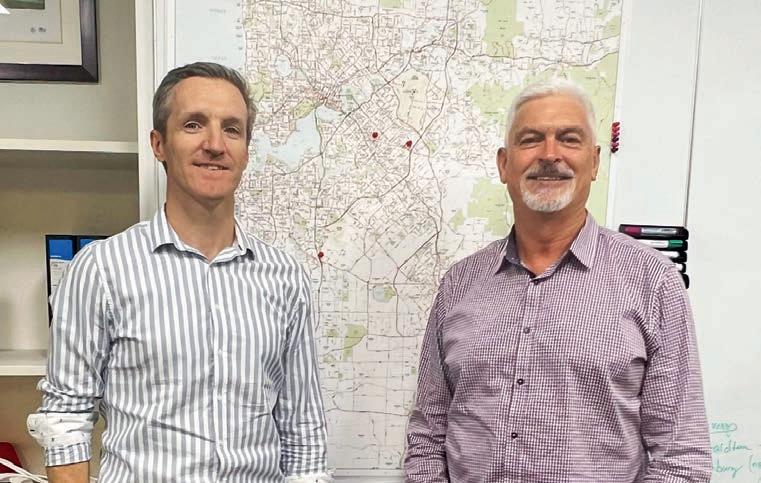
Founded in 1995, Western Australian based property development, investment and funds management firm Lester Group has progressively expanded its business interests to include residential, land subdivision, office, commercial, retail, and industrial assets now valued at c. $300m.
Now, according to Morgan O’Shea, General Manager of Commercial Development at Lester Group, the family-owned company is making a concerted effort to build ties with east coast decision makers.
“In the past two years, the company has made a push into the development of industrial assets,” Morgan says. “But while we primarily deal with property in the West, we realise the importance and value to our clients –and to us – of establishing a broader contact network.”
In the industrial space, the company is currently working on acquiring land, obtaining planning approvals and securing tenants for three prime industrial assets in Welshpool and Jandakot, with the goal of ultimately developing, leasing these properties for the long term.
“Although not unique in the Perth market, a key aspect of Lester Group’s approach to development is our use of a syndication model,” Morgan says. “This allows the company to draw upon a database of investors when they have an investment opportunity, and these investors can choose whether to participate. Once the investment is fully subscribed, we use the investors’ funds to purchase the asset. For development projects, we’ll often borrow additional funds to finance the actual development work. The goal then is to either sell immediately once constructed or hold the completed asset for a number
of years and then sell it when the market is favourable.
Lester Group, as a smaller, familyrun company, has a strong reputation in the market. This allows it to move quickly and make the most of its strong business network.
The company is also known for its genuine commitment to the projects it undertakes, always investing at least $1 million of its own money into every investment or development opportunity. This level of personal investment helps to build trust with its investors, showing that the company believes in the potential of the project and is willing to put its own skin in the game.
“Our reputation and track record, combined with our willingness to invest our own money, makes Lester Group an attractive option for potential investors,” Morgan says.
As Lester Group has expanded its operations, particularly over the last two years, it has identified the need to bridge the divide between east and west – as most of the major operators and decision makers in the
property market are located on the east coast of Australia, in cities such as Melbourne and Sydney. As a result, the company is focused on building brand awareness and establishing themselves as a trusted development partner on the East Coast.
“We are known for our ability to develop buildings to the specific specifications of our clients and have a strong reputation in our local market, but we see increasing visibility on the East Coast as a way to attract more business and long-term leasing opportunities from decision makers in these key cities.
“Obviously building more and more relationships with east coast decision makers is a plus for us, but the work we’re doing in this space will be of great worth to those in the east, because we have an on-the-ground competitive advantage in the west.”
The WA industrial property market is characterised by tightly held land, much of which is owned by individuals and families, making it difficult for outsiders to break into the market. Local knowledge and on-the-
ground presence can be attractive to decision makers considering leasing options in the area, particularly in a market like Western Australia where these factors can be crucial to success.
“The industrial property market in WA is extremely tight – as it is across much of the nation – with Perth second only to Sydney as the lowest vacancy Australian city,” Morgan says. “That said, anecdotally speaking, I’ve heard reports from suppliers that are still looking to establish a WA presence for additional space to address issues like derailments, floods, and supply chain disruptions over the past year and a half. These disruptions have made the just-in-time model less reliable, particularly in Western Australia where the geographical distance from the east makes it difficult to get products delivered on time. As a result, some companies may be seeking more space in WA to provide some buffer in case of future disruptions.
“The availability and cost of commercial land can vary significantly depending on the specific needs and circumstances of a company. Ultimately, whether or not it makes sense for a company to relocate to a new area will depend on a variety of factors, including the availability and cost of land, access to skilled labour, transportation and logistics considerations, and the overall business environment.”
Morgan notes that in a market as tight as the WA market currently is – and Australia’s industrial property market more generally – local knowledge is essential for effective forward planning.
“Many suitable sites have already been snapped up, and what remains often has constraints or contamination issues,” he says. “The demand for industrial space is driven in part by the intense mining and resource development taking place in the region, as well as infrastructure spending and a low unemployment rate. The availability of workers is another major challenge in Western
Australia, as it is in other parts of Australia. But in times you need a good guide, and Lester Group is wellpositioned to assist companies seeking new space in this market, with access to prime sites and the ability to deliver on development projects.”
Western Australia still has several distinct advantages that make it an attractive location for industrial property, particularly in the long term, he adds.
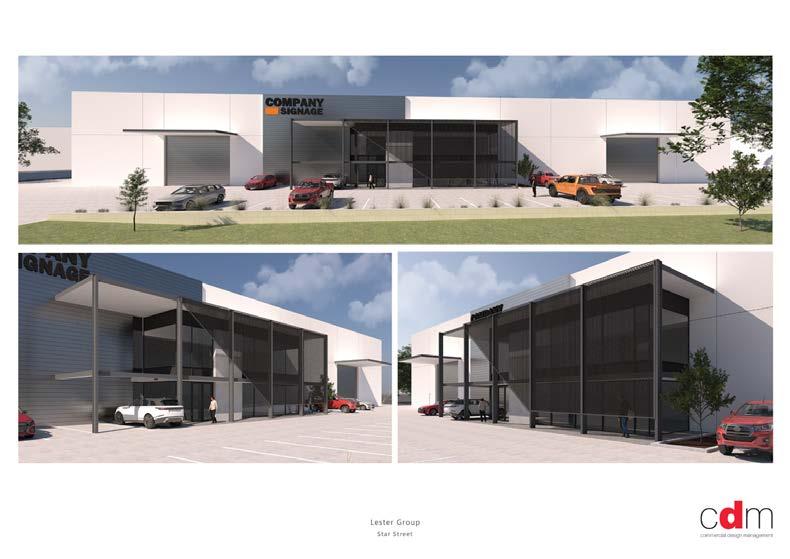
“The state’s infrastructure, particularly its roads, is already quite good and is set to improve further with planned investments. Additionally, the industrial areas in Western Australia are well located, with easy access to the airport, freight terminal, and the potential for a new port in the future.”
Morgan notes that the congestion in Western Australia is not yet at the level of major east coast cities like Sydney and Melbourne, and the state’s industrial areas are well spaced out, making it more efficient to move goods around the region.
“Overall, WA’s infrastructure and spacing advantages will make it a more attractive location for industrial property in the coming decades. So, for those forward planning on a move to or an expansion into the west, I’d encourage that you touch base with Lester Group – we have the depth and breadth of experience to help you navigate the WA industrial property market.” ■
DO YOU KNOW A DRIVER OF CHANGE?

WOMEN IN INDUSTRY NOMINATIONS ARE NOW OPEN. Now is your chance to nominate an industry leader who you believe is advocating for positive change and deserves to be recognised.



THURS 8 JUNE 2023


The Women in Industry Awards recognise outstanding women leaders from across Australia’s industrials sector.

RWTA JOINS NATIONAL FOOD SUPPLY CHAIN ALLIANCE
The Refrigerated Warehousing & Transport Association (RWTA) has joined the National Food Supply Chain Alliance (NFSCA). Marianne Kintzel, Executive Officer at the RWTA, met with government and opposition MPs in December 2022 to lobby for a nationally coordinated Supply China Risk Mitigation Strategy.
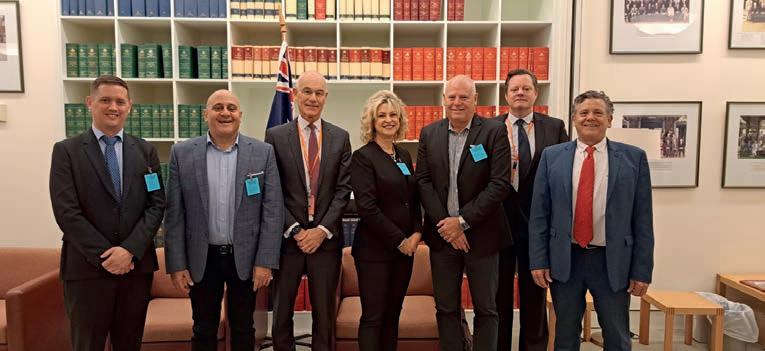
The RWTA has joined the National Food Supply Chain Alliance (NFSCA) which represents all facets of Australia’s food supply chain that includes farmers, processors, grocers and butchers, cold chain warehouses, independent supermarkets, convenience stores, wholesale suppliers and distributors to food retailers.
The nine national food industry associations represent more than 160,000 businesses with a combined revenue of $224 billion and who employ almost one million workers.
This alliance was formed to work constructively with government to find solutions to immediate foodrelated issues. Formed by food industry associations across the supply chain covering paddock to plate, this Alliance is addressing key issues associated with ensuring reliable and affordable access to food for all Australians during this time of supply chain disruption.
Geopolitical tension, labour shortages, climate change, and the ongoing impact of the pandemic that laid bare the vulnerabilities of Australia’s supply chains have prompted calls for a national strategy to tackle food security.
The issue was thrust into the national spotlight during the pandemic and early in 2022 when the Omicron wave and flooding cut supply of groceries to Australian supermarkets and sent the cost of food soaring.
The NFSCA, which includes nine national food, farming, freight, retail, and hospitality organisations

representing 160,000 businesses, met with government and opposition MPs to lobby for a nationally co-ordinated Supply Chain Risk Mitigation Strategy.
It has been made clear that food prices will continue to rise over the next two years because of the lack of a national food supply plan. Without this, required while there are ongoing disruptors such as natural disasters and chronic labour shortages around the country, it will be very difficult to stabilise food prices.
As a result, it is likely that prices will continue to rise at least for the next year, possibly for longer. This comes after the federal parliamentary agriculture committee last month launched an inquiry into food security in Australia to analyse the impact of population growth, war, weather, and climate on accessibility to food.
This food supply chain strategy could be used as a blueprint to guide government spending on disaster mitigation and transport infrastructure.
This will play a major role in preparing food supply chain resilience.
“Australians need the certainty and availability of food without disruption,” says the Refrigerated Warehouse and Transport Association’s (RWTA) Executive Officer, Marianne Kintzel.
“Eighty per cent of Australians are concerned and are already affected by the rising cost of food and grocery prices. Foodbank’s 2022 Hunger Report indicates that two million Australians are already struggling to provide adequate food for their families, and this in turn is affecting 1.3 million children.”
The Alliance includes: The National Farmers Federation (NFF), Australian Meat Industry Council, (AMIC), Independent Food Distributors Australia (IFDA), Master Grocers Australia (MGA), the Australian Association of Convenience Stores (AACS), AUSVEG, Seafood Industry Australia (SIA), the Restaurant and Catering Industry Association (RCIA), and the RWTA. ■
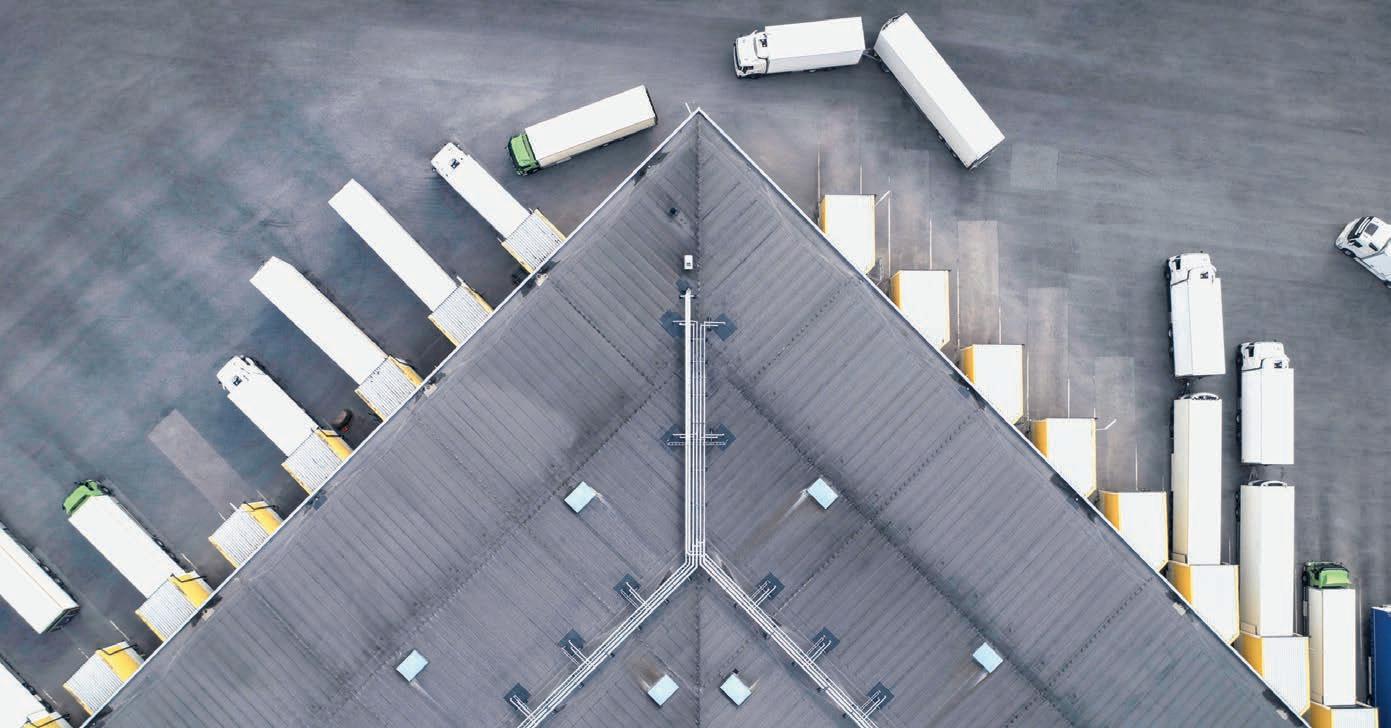
GEOTAB’S GO9 DEVICE
Completely redesigned and enhanced, the Geotab GO9 device is optimised for the collection and analysis of near real-time vehicle data. The GO9 features a faster processor, more memory, and a gyroscope. Expanded capacity allows even more and ongoing vehicle support, including better fuel usage support, and increased electric vehicle compatibility. Using Geotab’s patented tracking algorithm, the GO9 accurately recreates vehicle trips and analyses incidents. The GO9 also offers in-vehicle alerts to instantly notify drivers of infractions and – with hardware Add-Ons – provides live coaching for driver’s on-road performance.
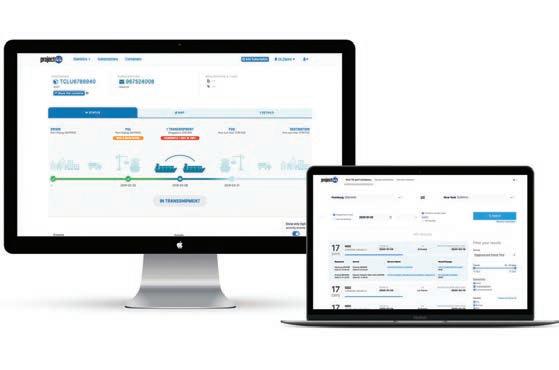

For more information visit www.geotab.com/au/vehicle-trackingdevice
THE NEW COMBI-MR4 WITH DYNAMIC 360° ™ STEERING
Since Combilift launched its first C4000 model in 1998, multidirectional capability has been one of the major hallmarks of the company’s wide range of handling solutions. 24 years and thousands of R&D hours later, its latest product takes multidirectional capability to the next level. The Combi-MR4 is a 4-wheel electric powered multidirectional reach-truck, which incorporates Combilift’s new Dynamic 360° ™ steering, which provides rotation on each wheel, enabling seamless directional change of the truck while on the move. The system allows this extremely agile forklift to work in forward, sideward and crab steer mode, guaranteeing swift operation and excellent manoeuvrability. Hence the full name of the new model: the Combi-MR4 Dynamic 360.

For more information visit www.combilift.com/combi-mr4
PROJECT44 OCEAN VISIBILITY
Poor ocean visibility puts a strain on global supply chains, logistics costs, and customer service. At the root of the issue is low-quality data that hinders personnel productivity, streamlined operations, and proactive exception management. Today, more than ever shippers and 3PLs need global ocean visibility with the data quality, intelligence, ETAs, and proactive exception management that ensures efficient, costeffective, reliable, and sustainable global transportation. Project44’s Ocean Visibility solutions is here to help, with a suite of solutions that uses first-in-class data and analytics to improve personnel productivity, allow for proactive exception management, reduce logistics costs, improve customer service, and empower users for agile transport planning and procurement.
For more information visit www.project44.com
DEXION HIGH DENSITY STORAGE (HDS) SHUTTLE
The Dexion High Density Storage (HDS) Shuttle offers high density pallet storage without the use of forklifts.The shuttle unit travels on support rails, transporting pallets within the system by retrieving and depositing pallets, controlled by the user via remote control. The HDS Shuttle incorporates various features to ensure safe handling, high reliability and low energy consumption.This solution makes the most use of limited space and provides quick access to stocks. It is scalable according to the warehouse operations, throughput and goods volume. Reach out to a Dexion Supply Centre near you for more information or visit dexion.com.au.

For more information visit www.dexion.com.au
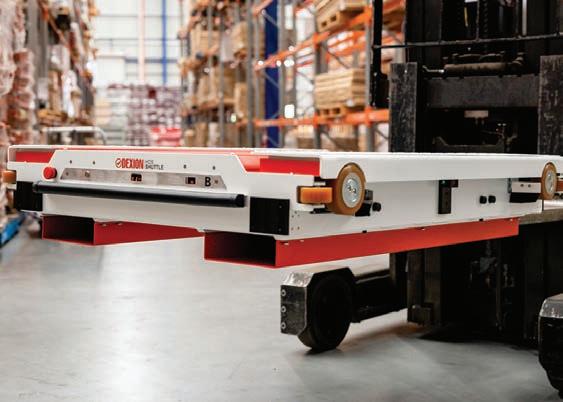
PEOPLE ON THE MOVE
A monthly wrap up of the latest appointments in the supply chain, materials handling and logistics industry.

RWTA ELECTS NEW CHAIRMAN
Graham Harvey, Global Vice President for Quality, Safety and Sustainability with NewCold, has recently been elected as Chairman of the Refrigerated Warehouse and Transport Association of Australia (RWTA), the national preeminent peak body for Australian Cold Chain; and more recently elected to the Board of the World Food Logistics Organization (WFLO), the core partner of the Global Cold Chain Alliance (GCCA). The WFLO will be the primary source for education and technical information on the proper handling and storage of perishable products and the development of systems and best practices for the safe, efficient, and reliable movement of food to the people of the world. Graham brings a broad international experience in the food supply chain, having had roles across the APAC and the European regions.
Do you have career news to share? Email Edward Cranswick at Edward.Cranswick@primecreative.com.au to be featured.

Operational design and product slotting using data science and analytics
Piqued Your Interest?
Safety Storage Efficiency
Enhance the Safety, Capacity & Efficiency of your Storage Facility
Manage your Storage more safely and more productively using less space with Combilift’s materials handling solutions
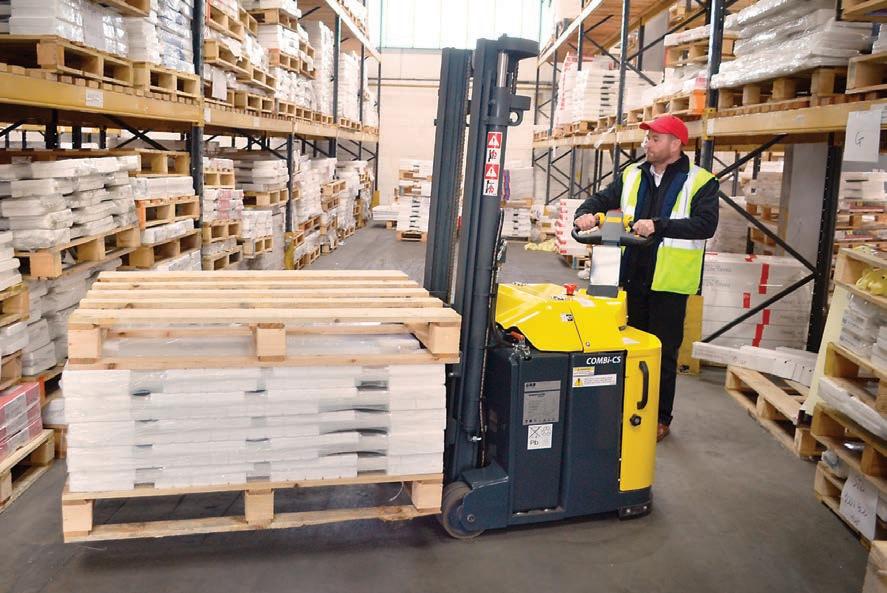
Our range of electric narrow aisle forklifts and pedestrian reach trucks combine unbeatable narrow aisle performance, emission free operation and a host of up to the minute technologies to offer the most efficient way to maximize the efficiency and safety of your warehouse & storage facility.

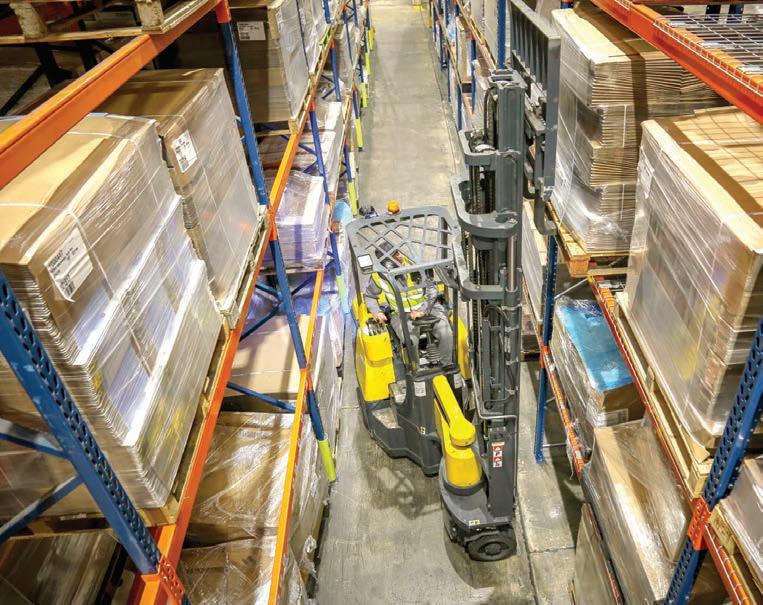
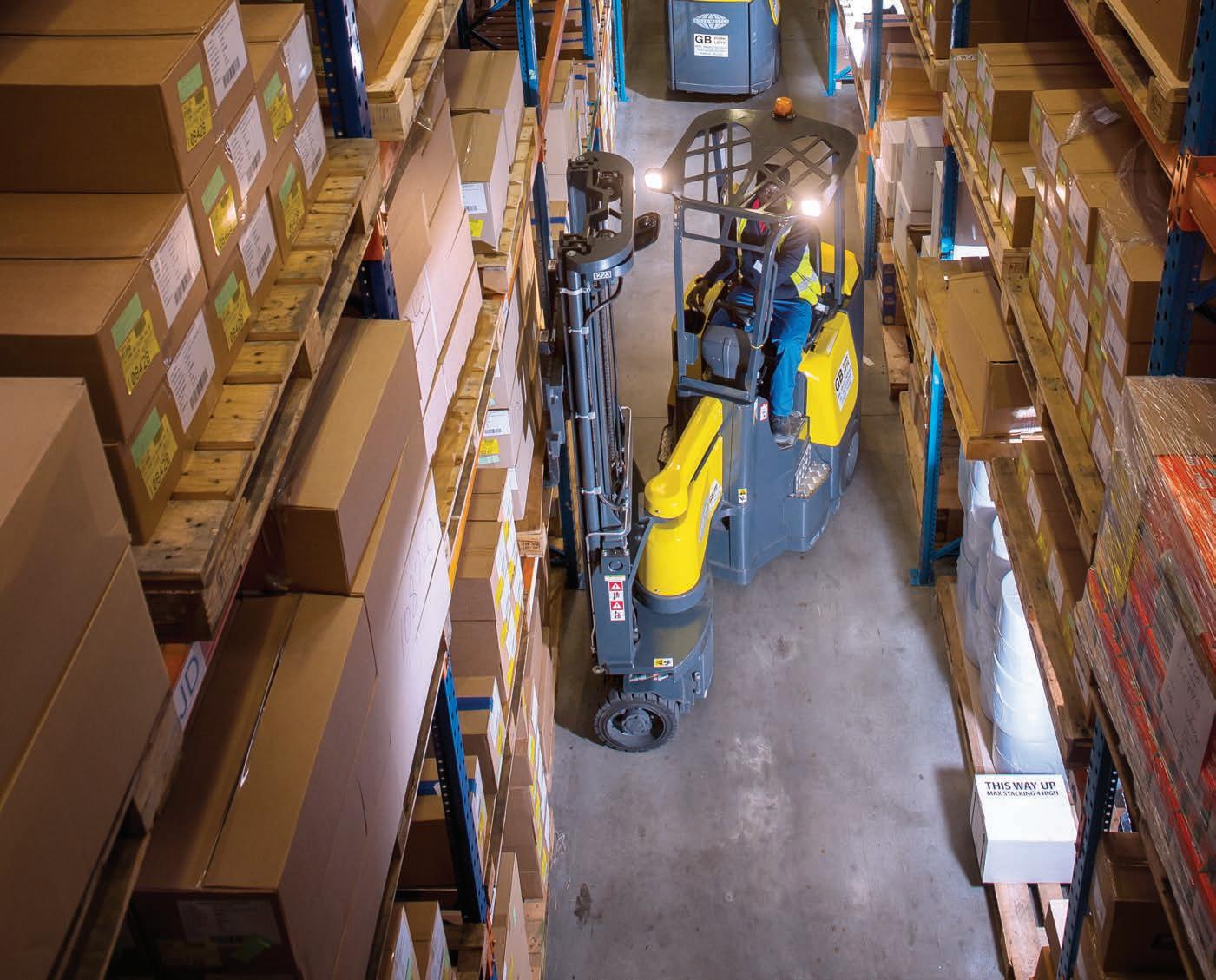
Contact Us Today
To find out how Combilift can help you unlock every inch of your storage space
combilift.com

